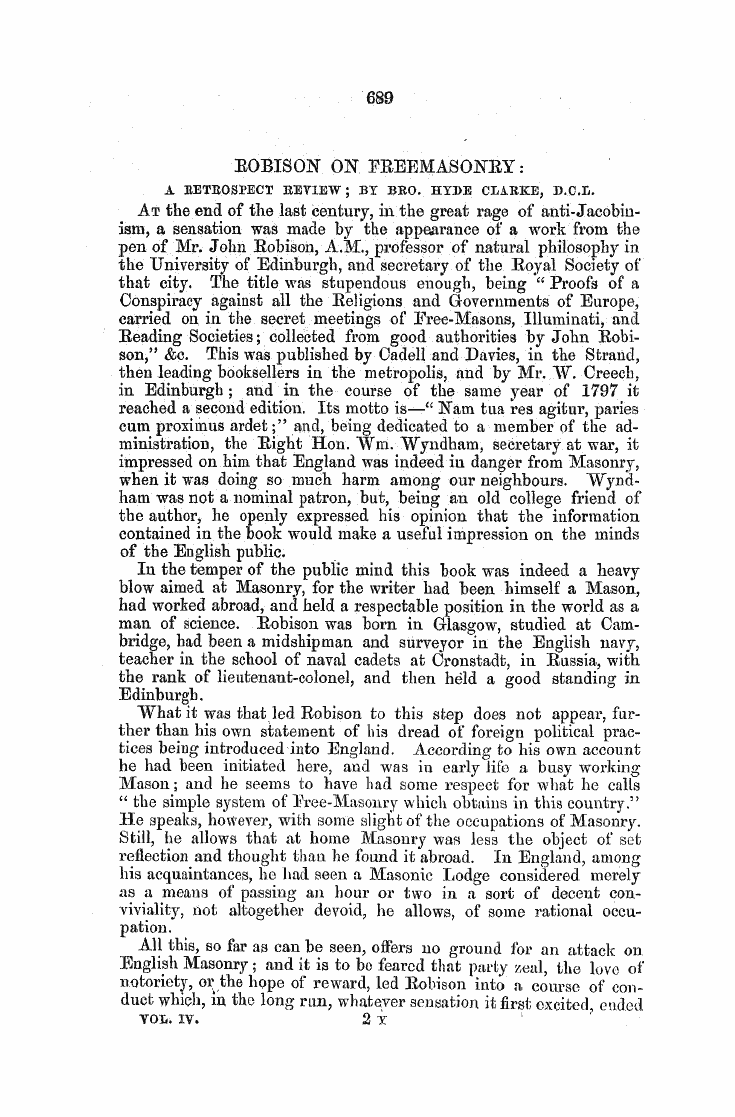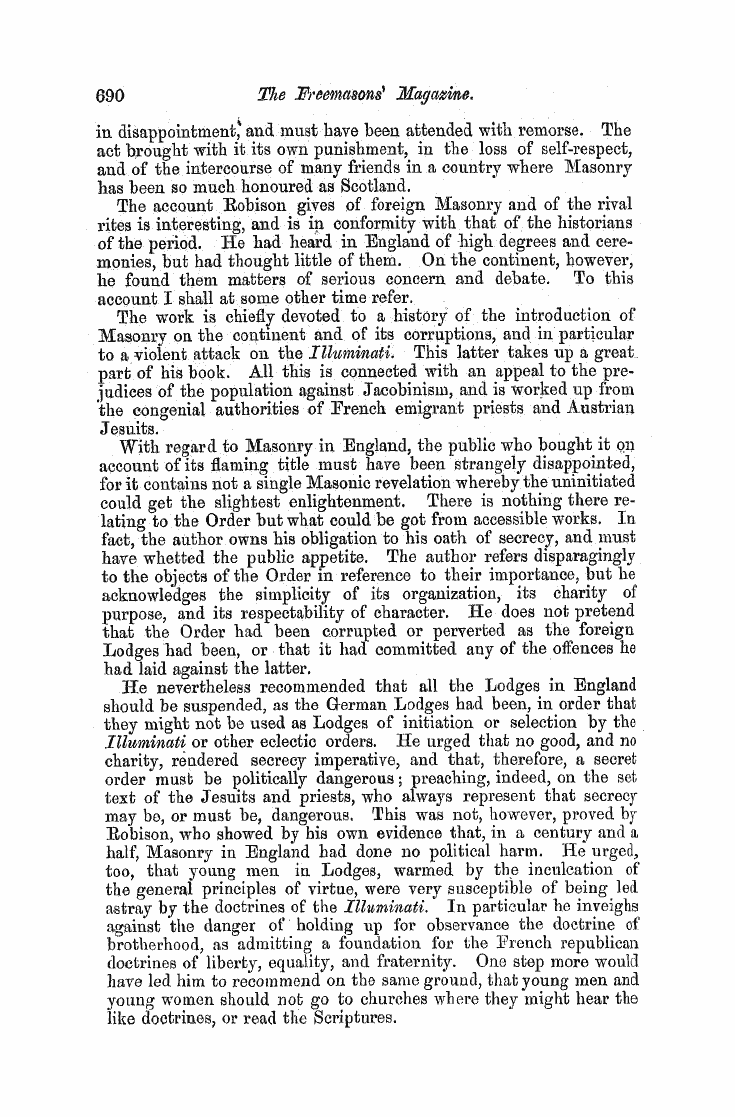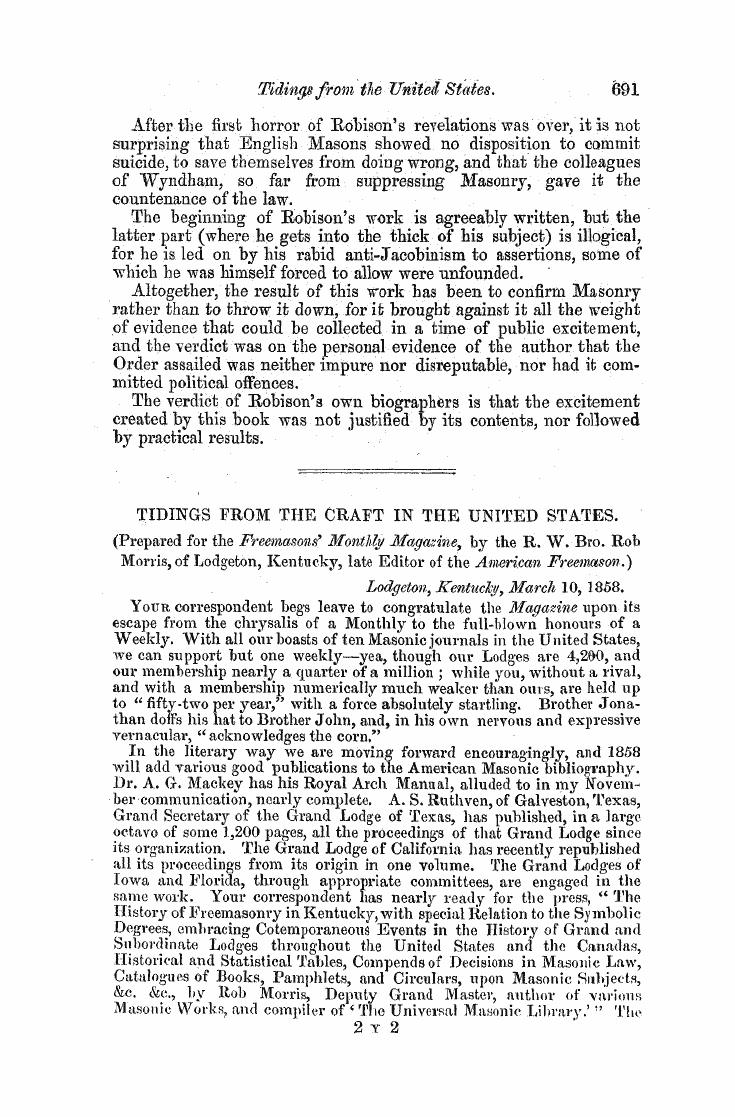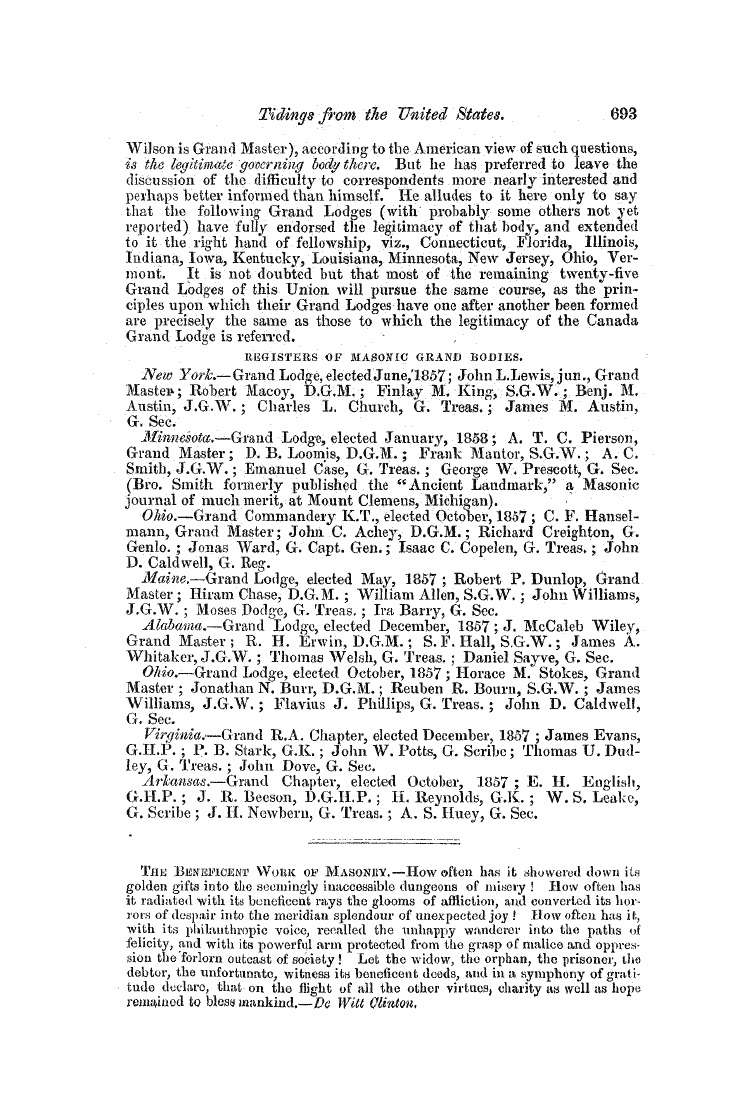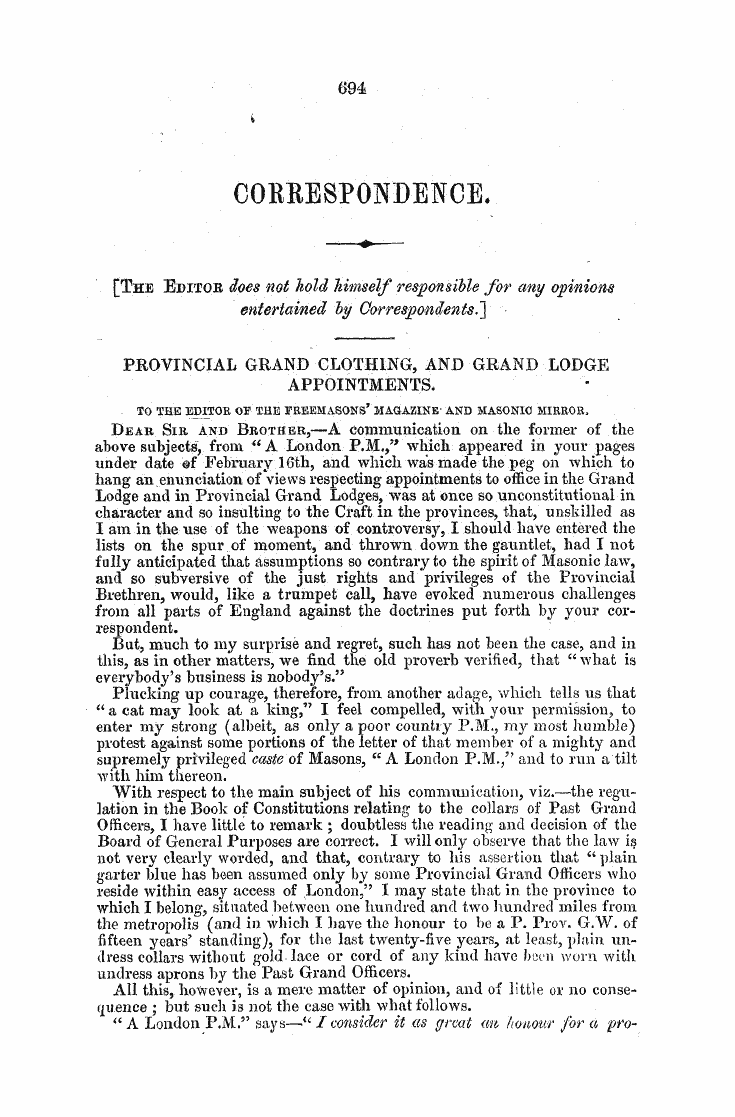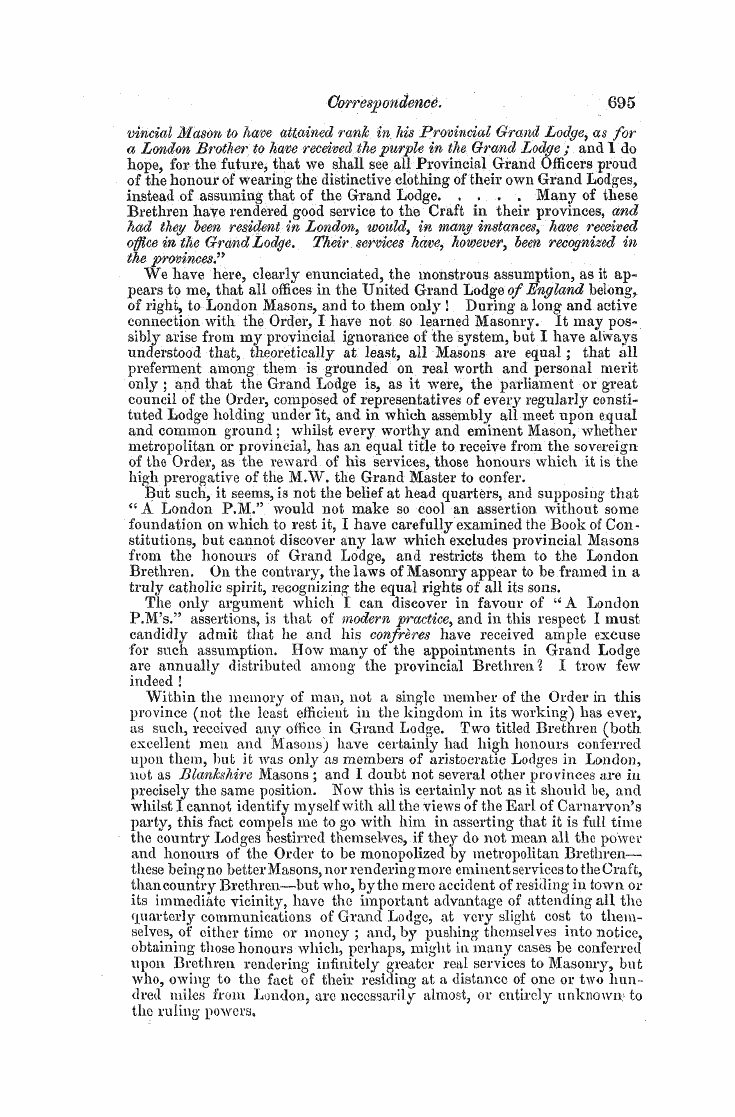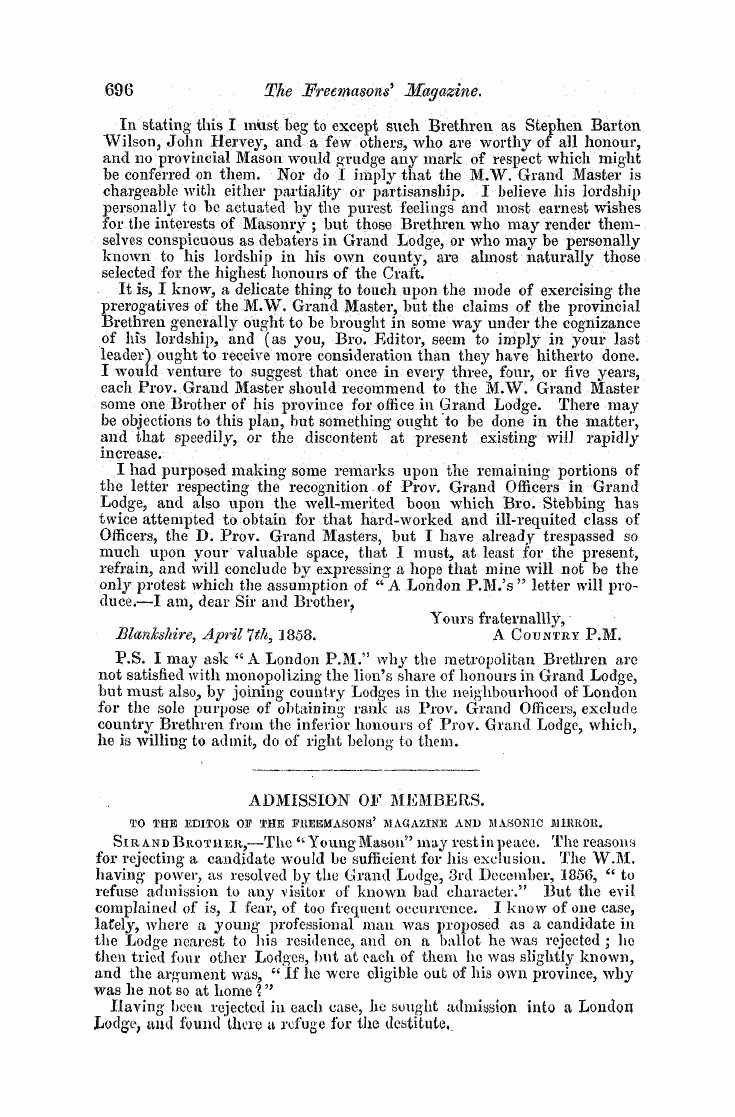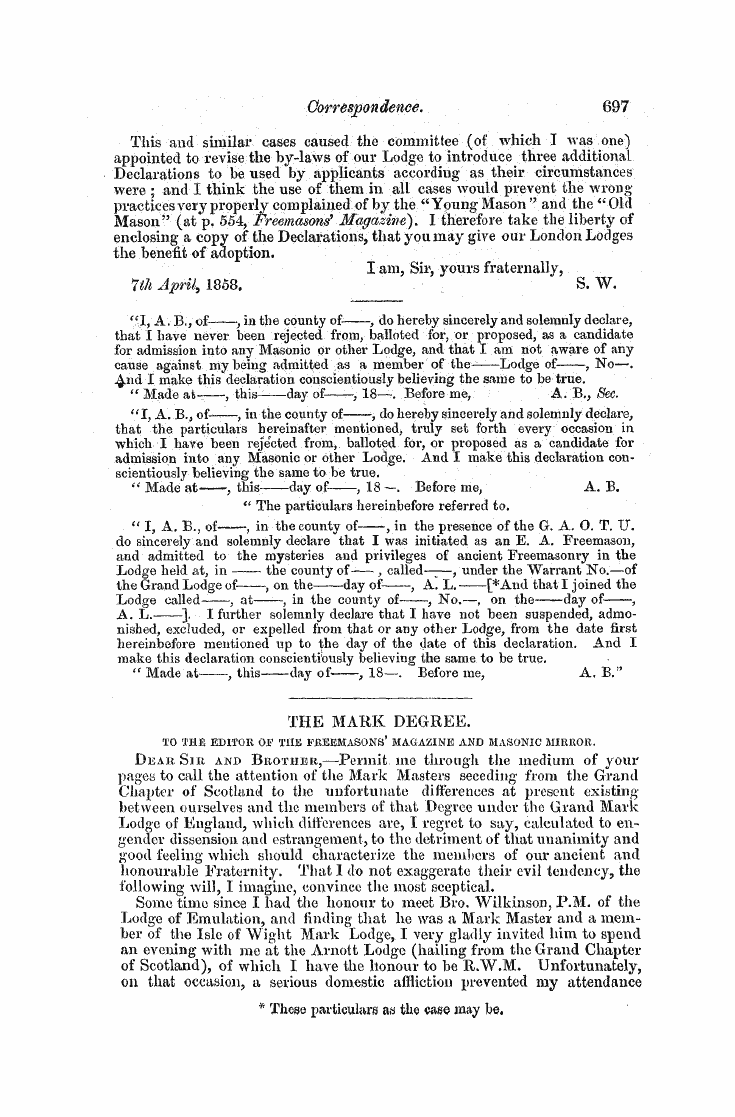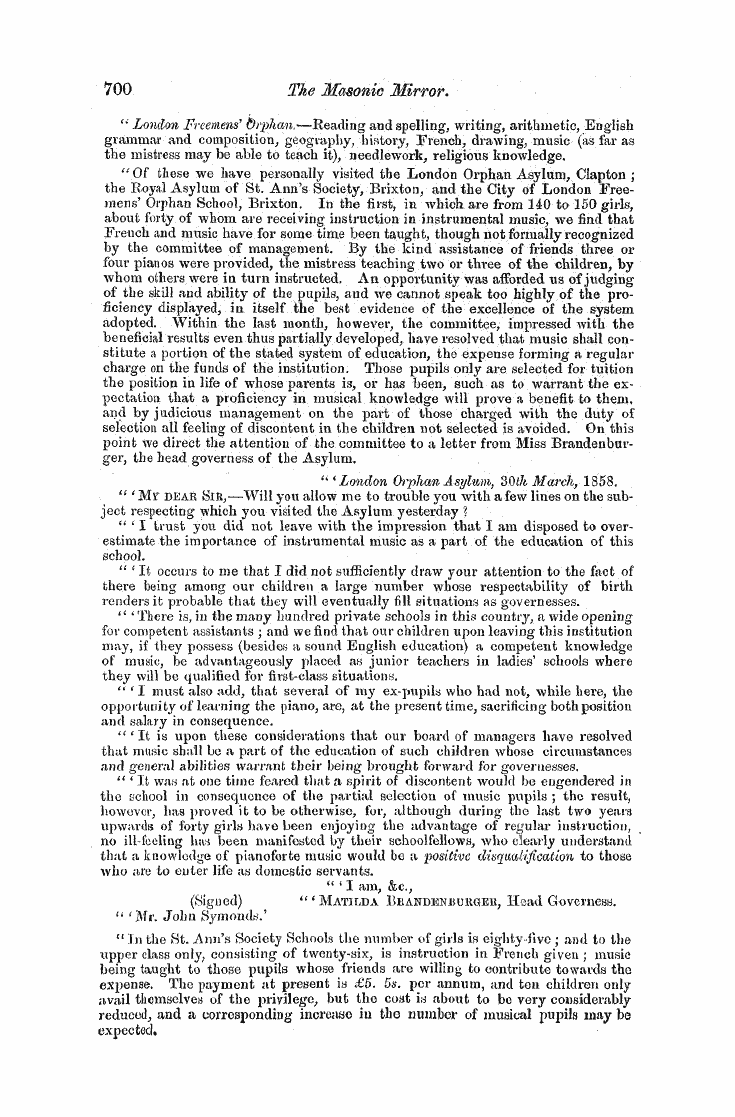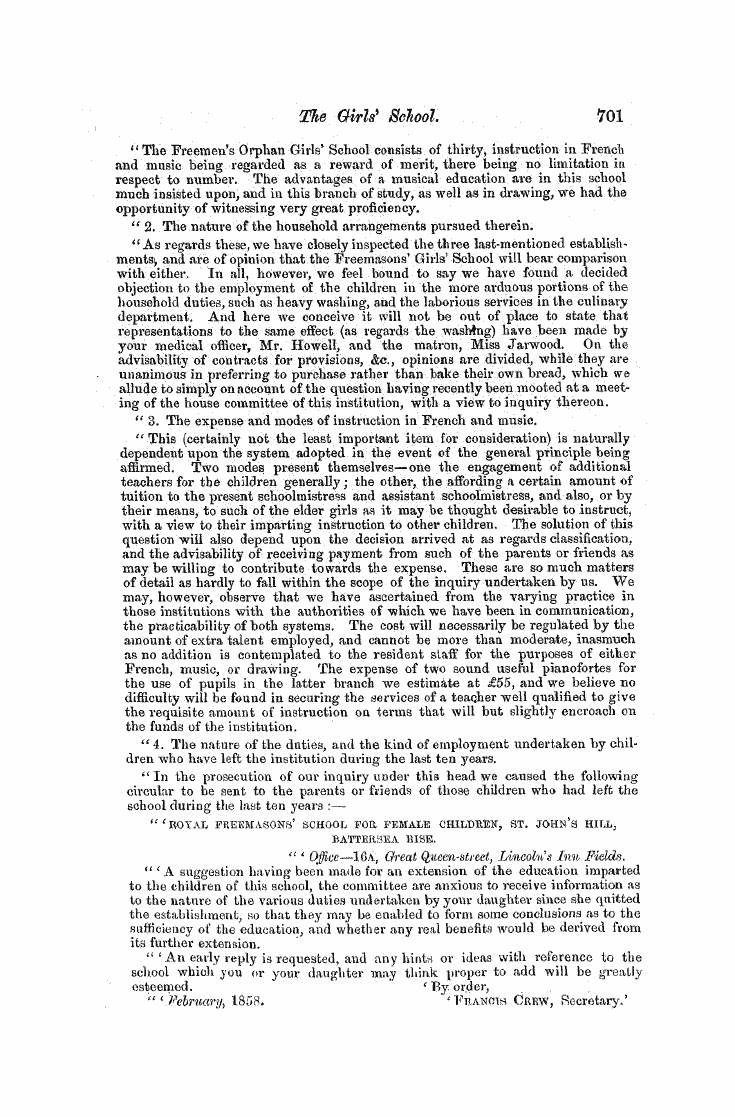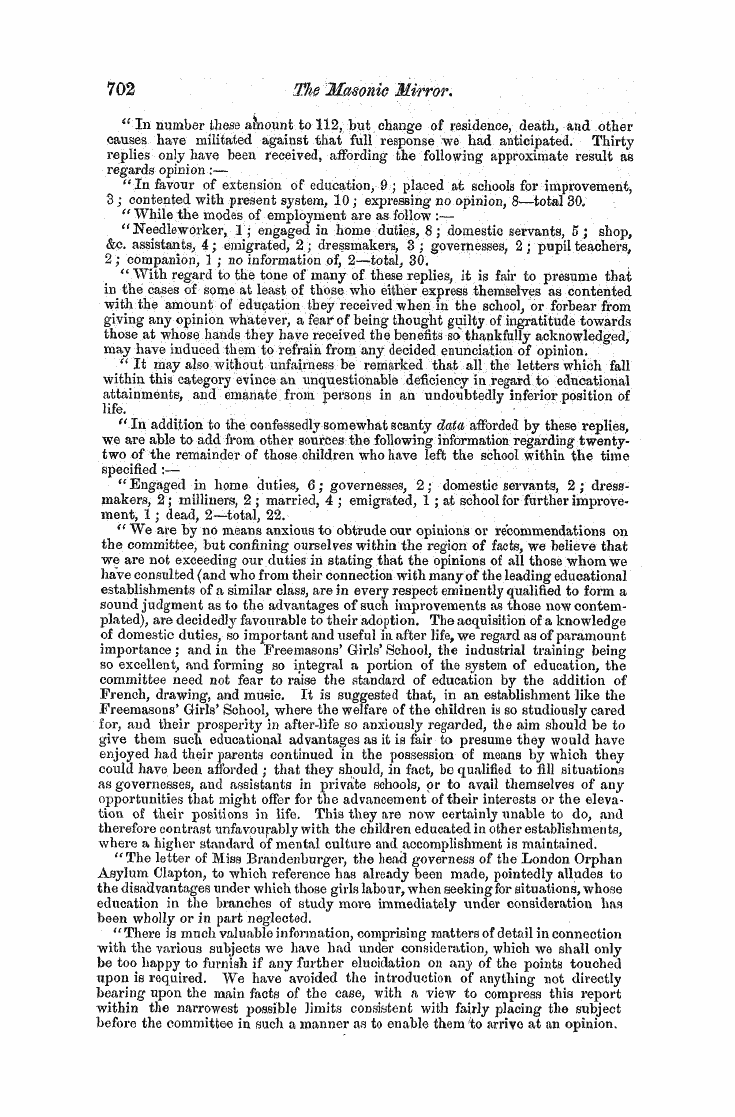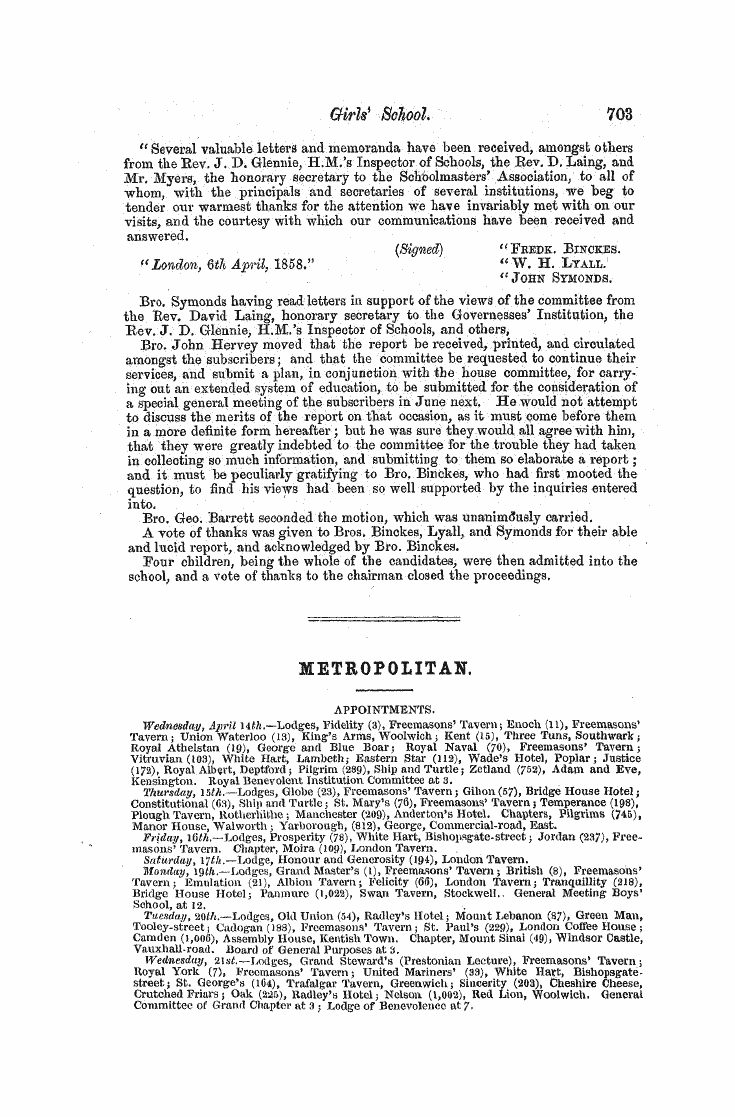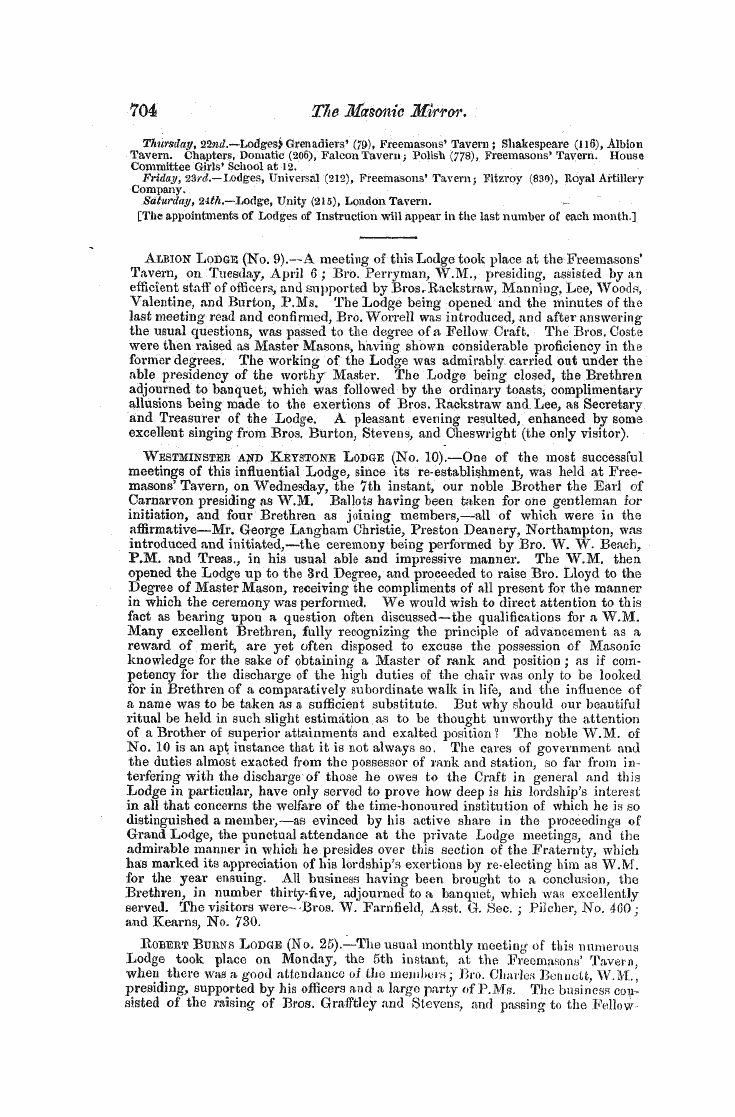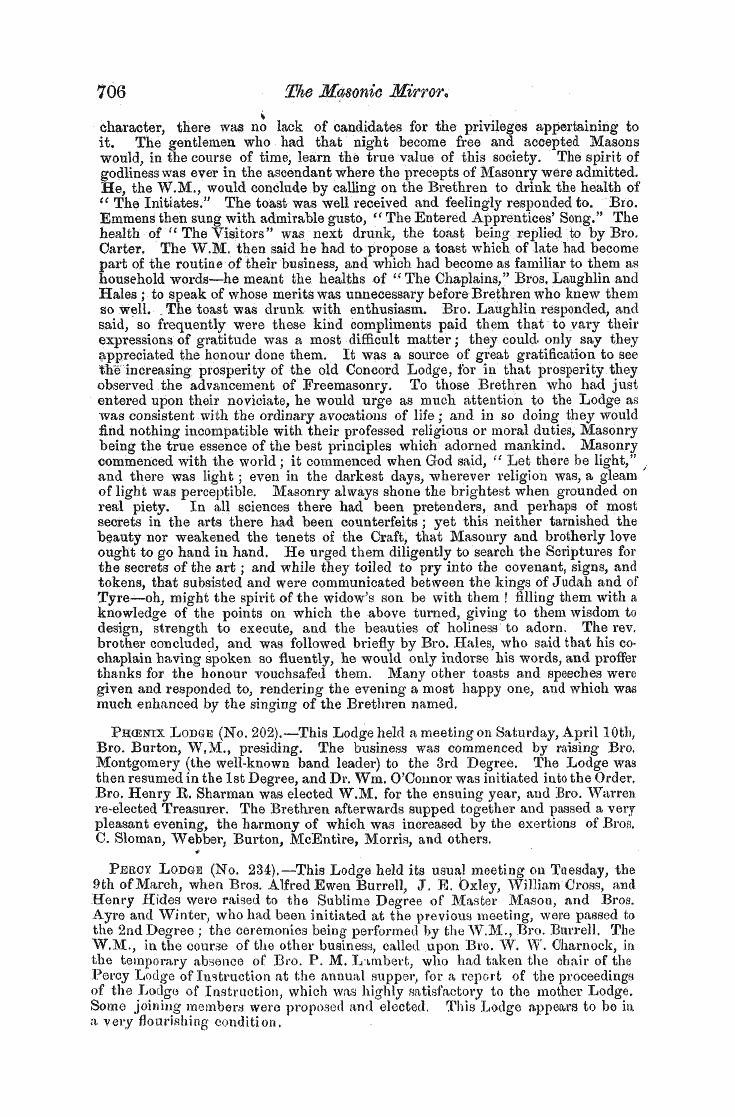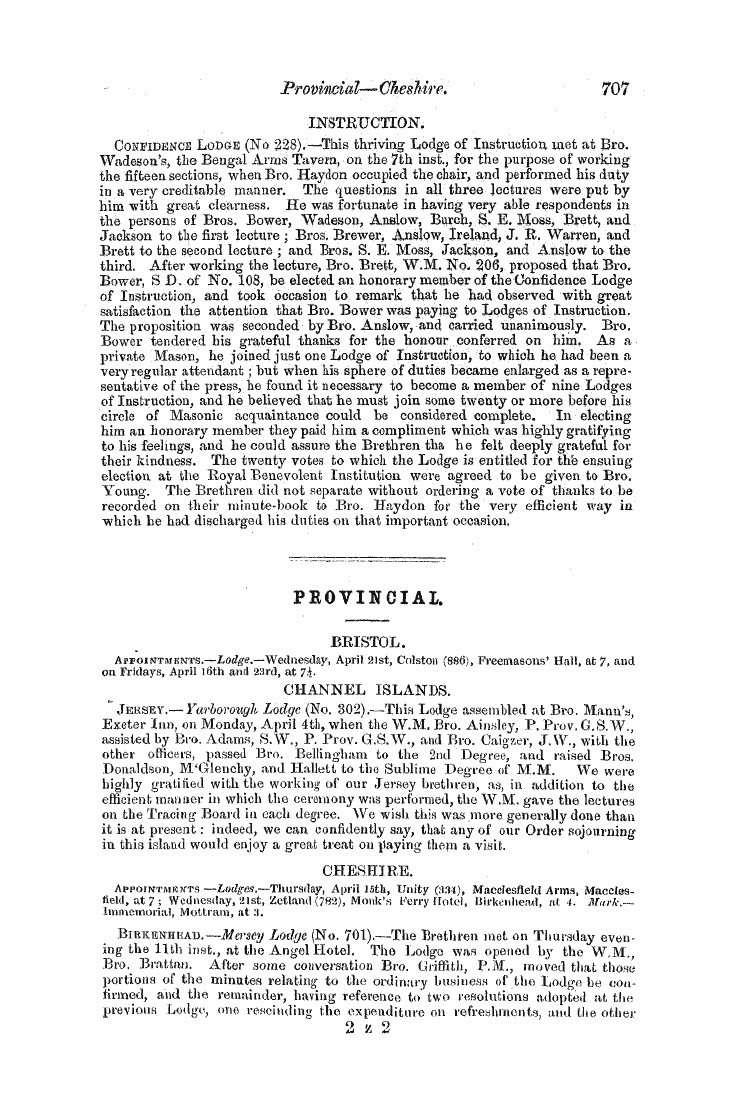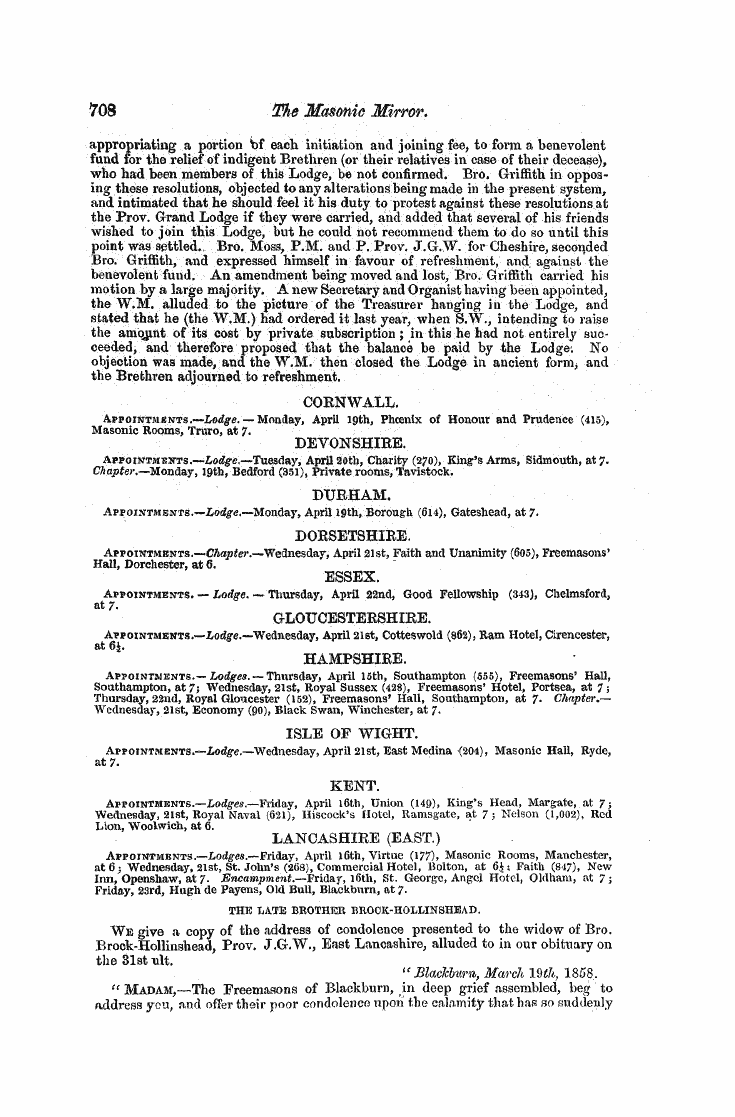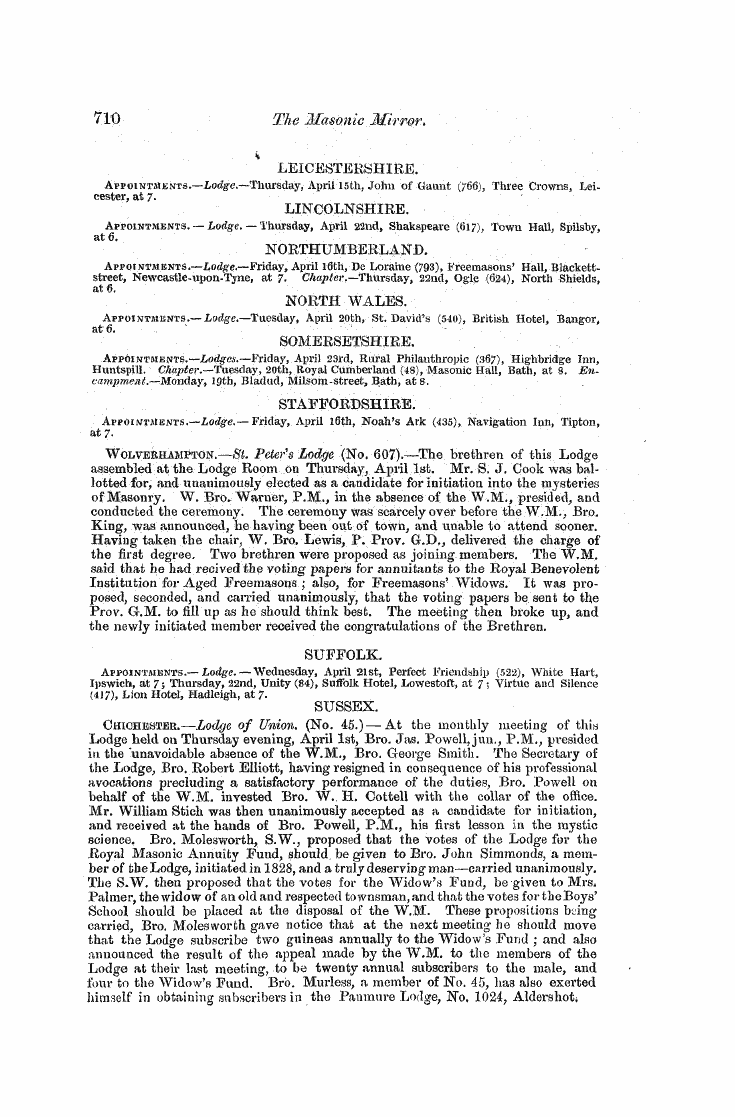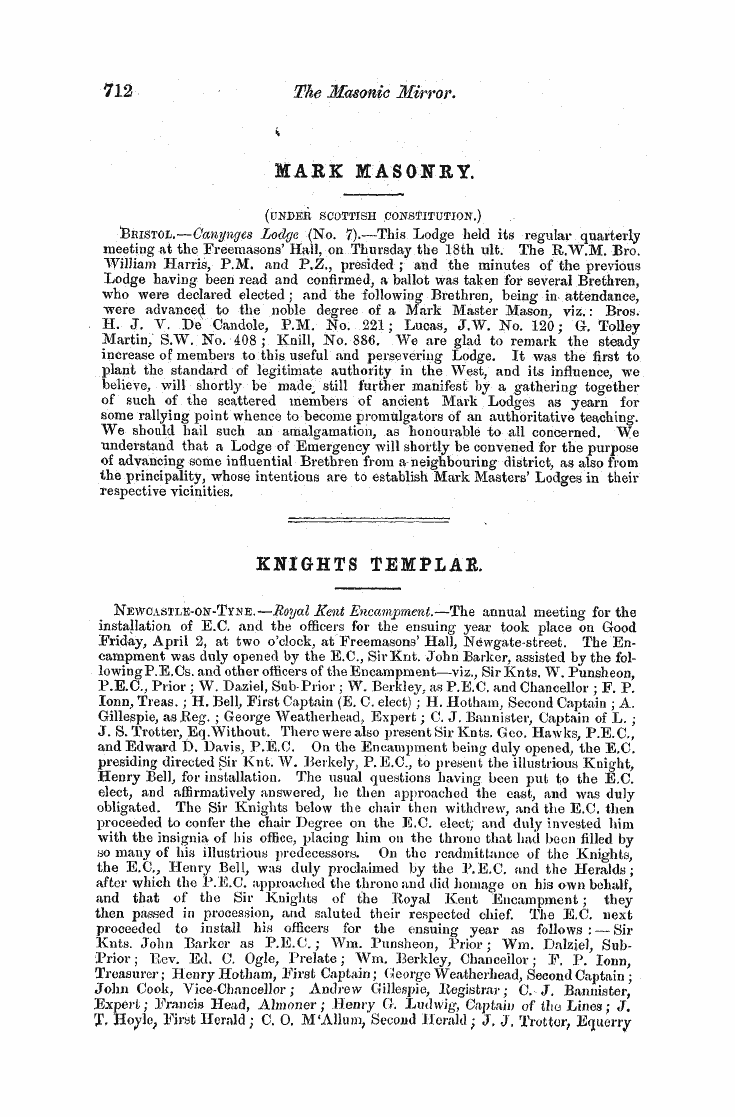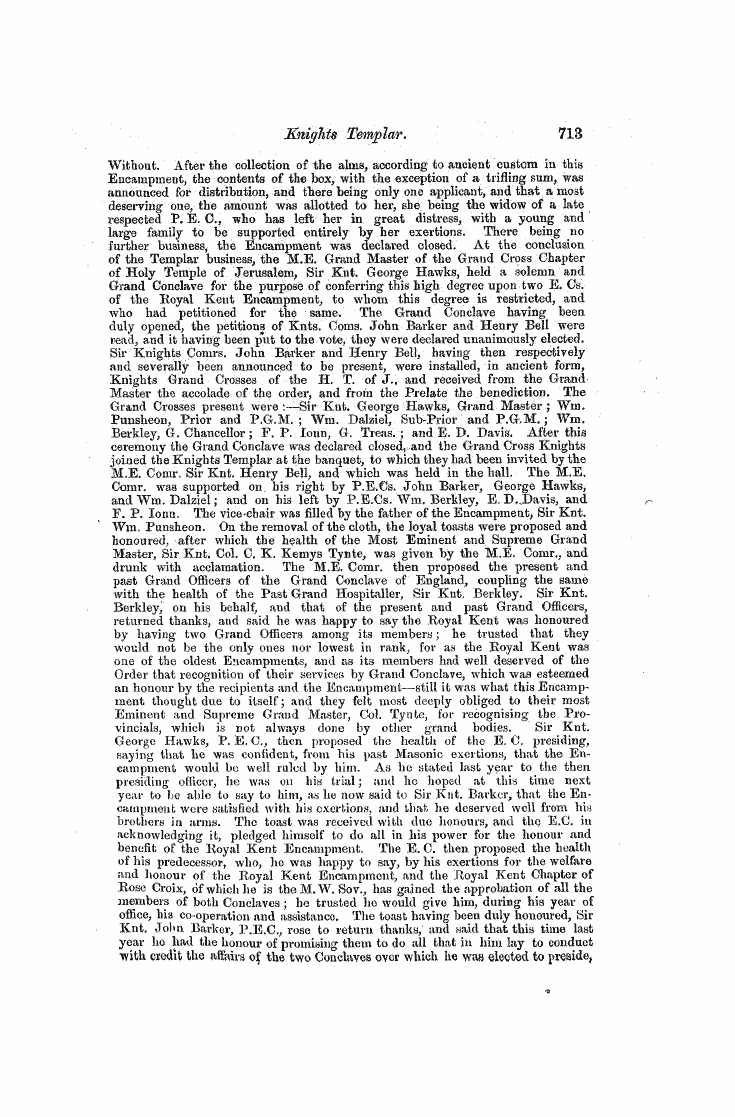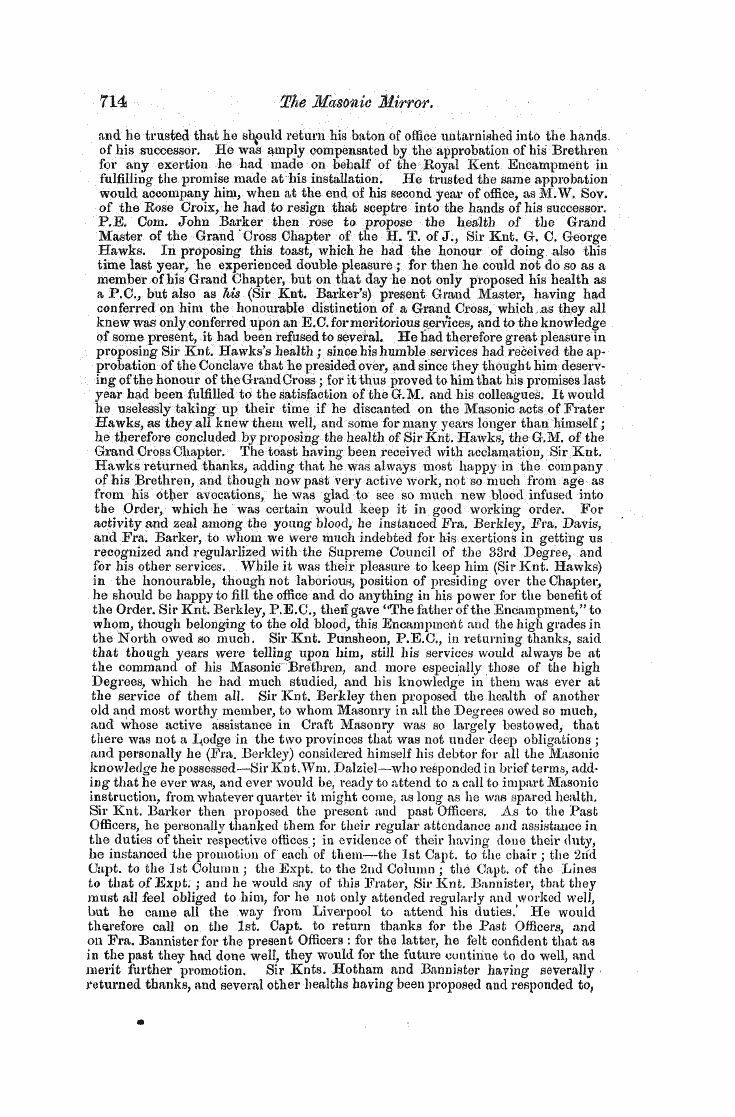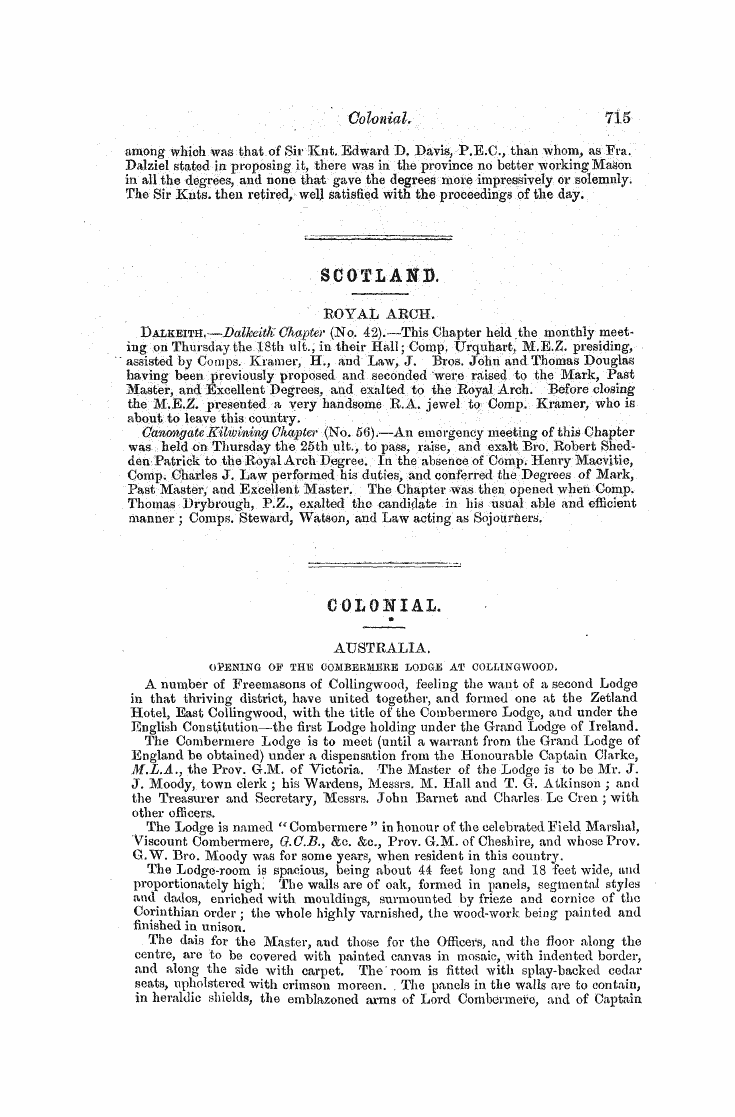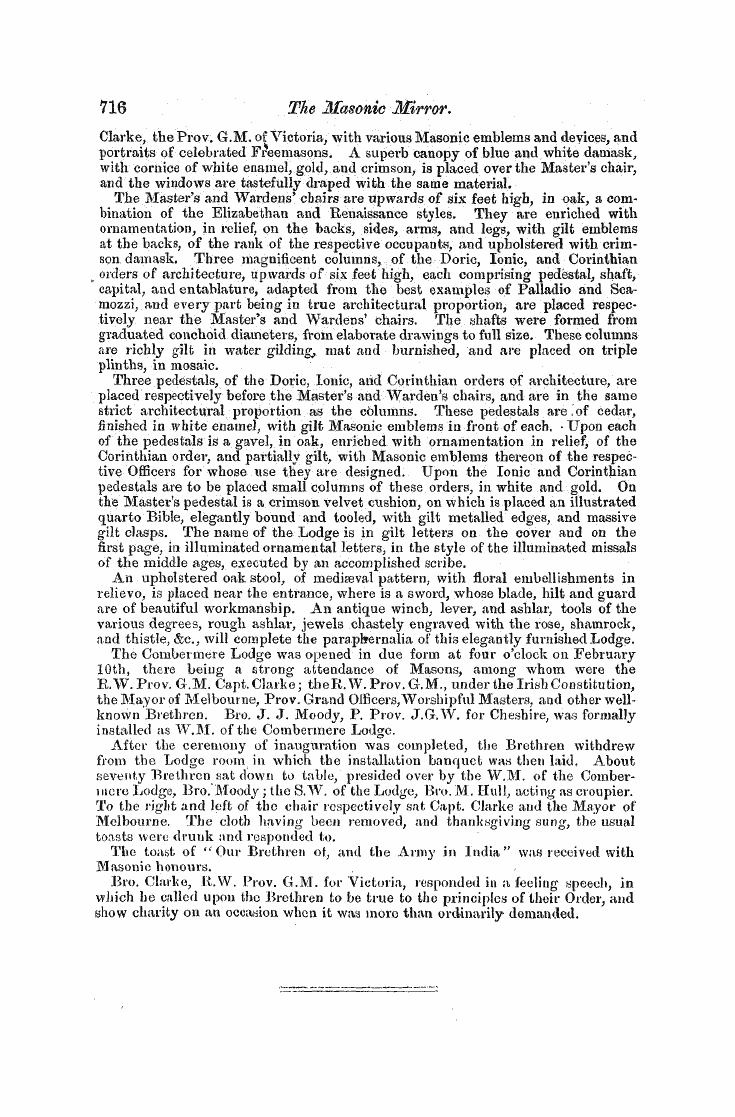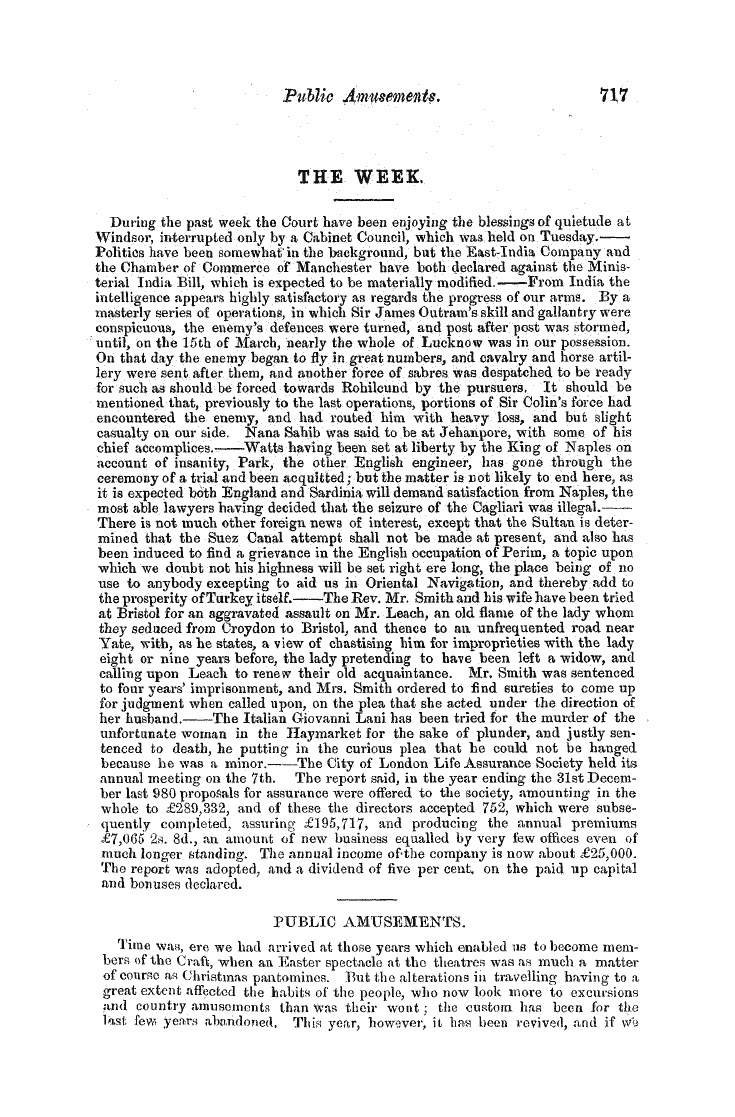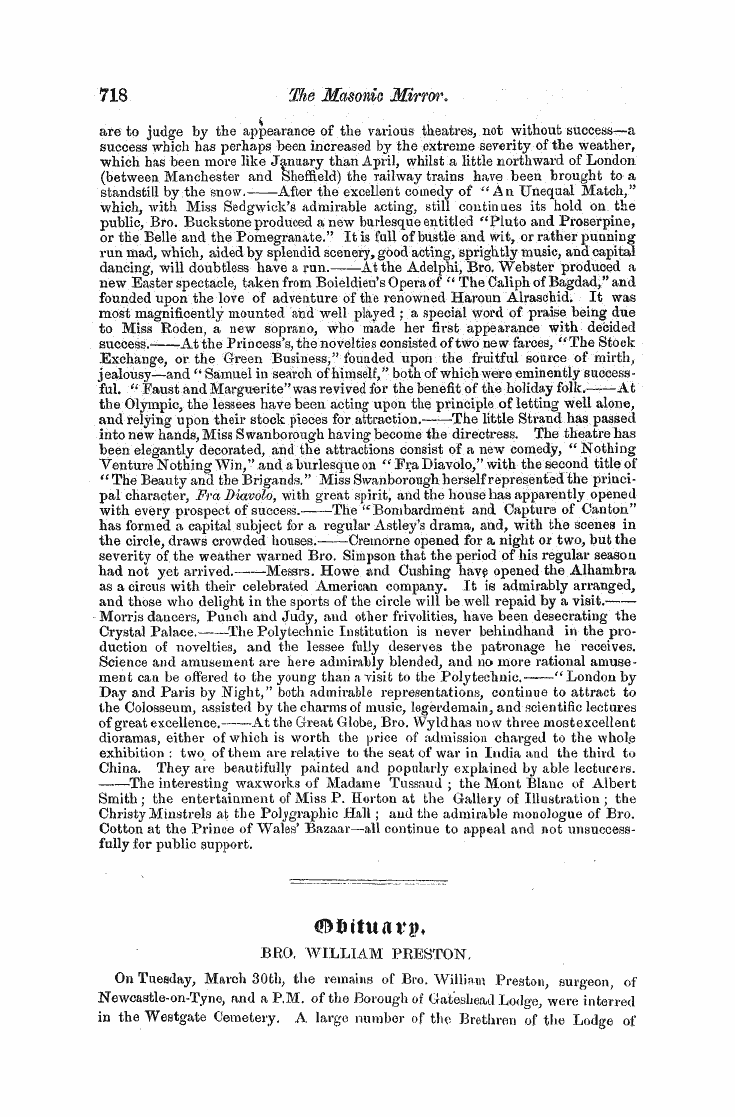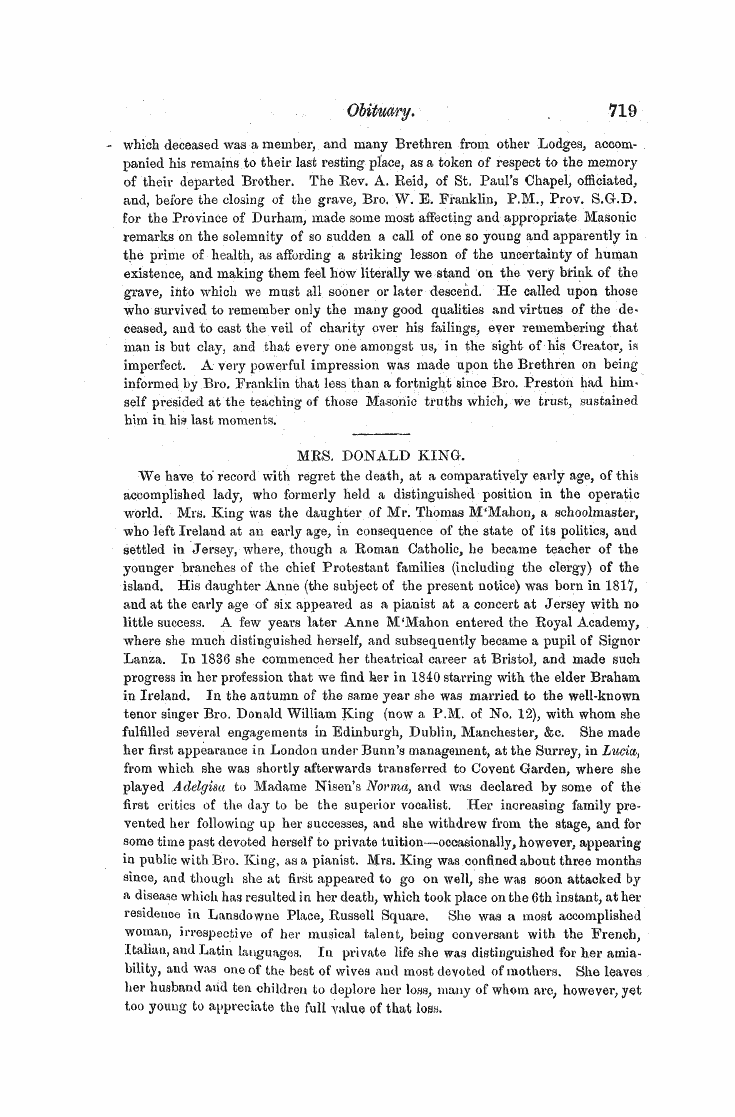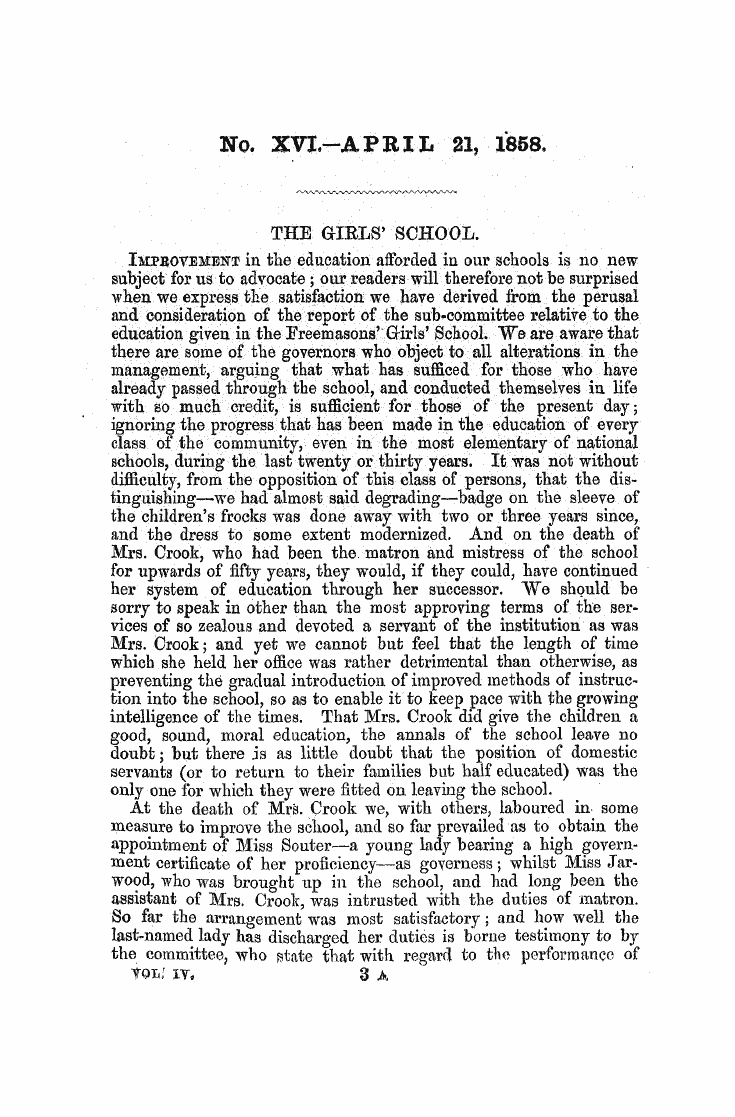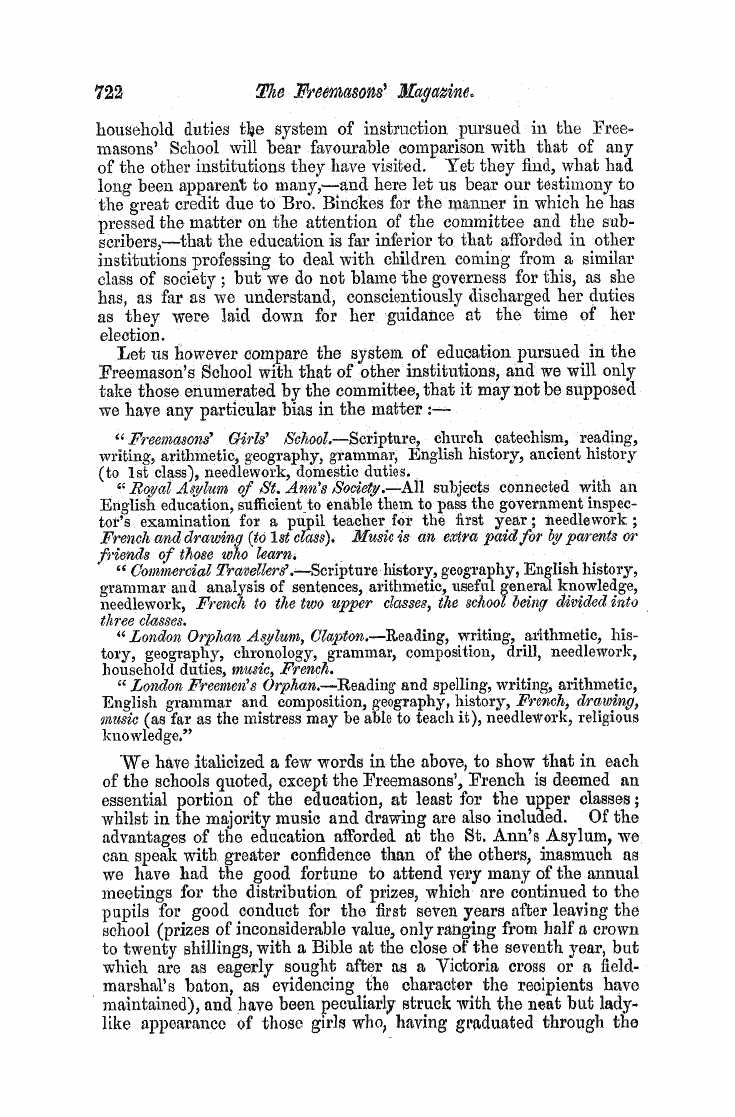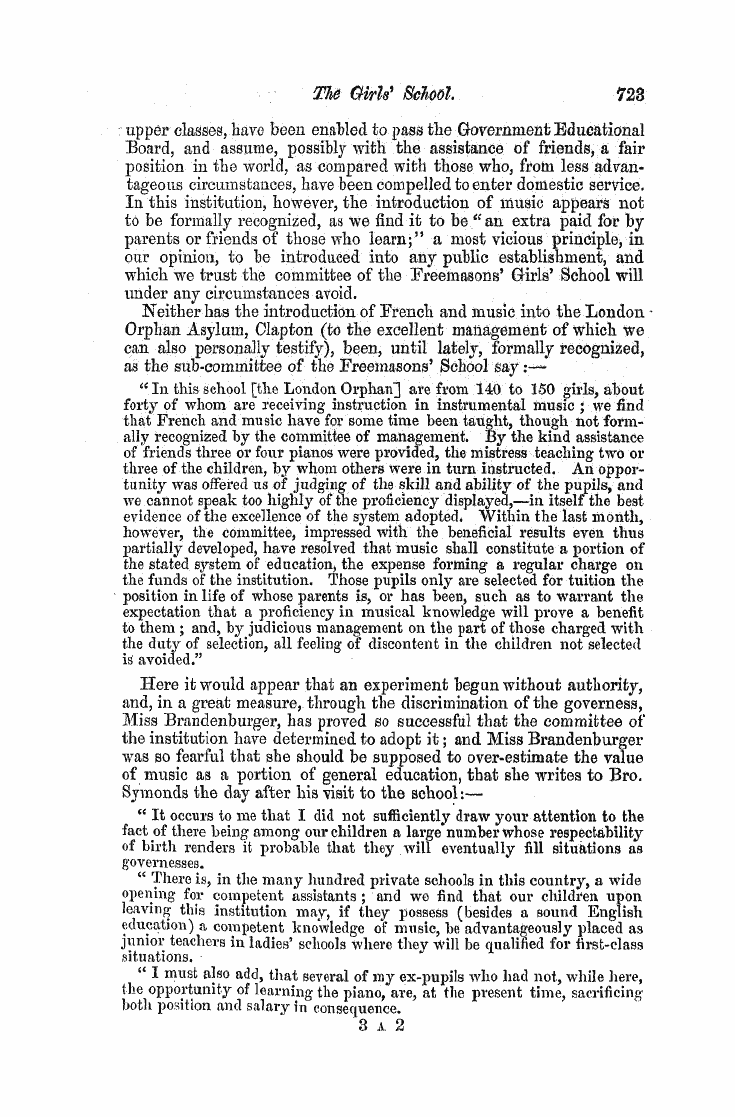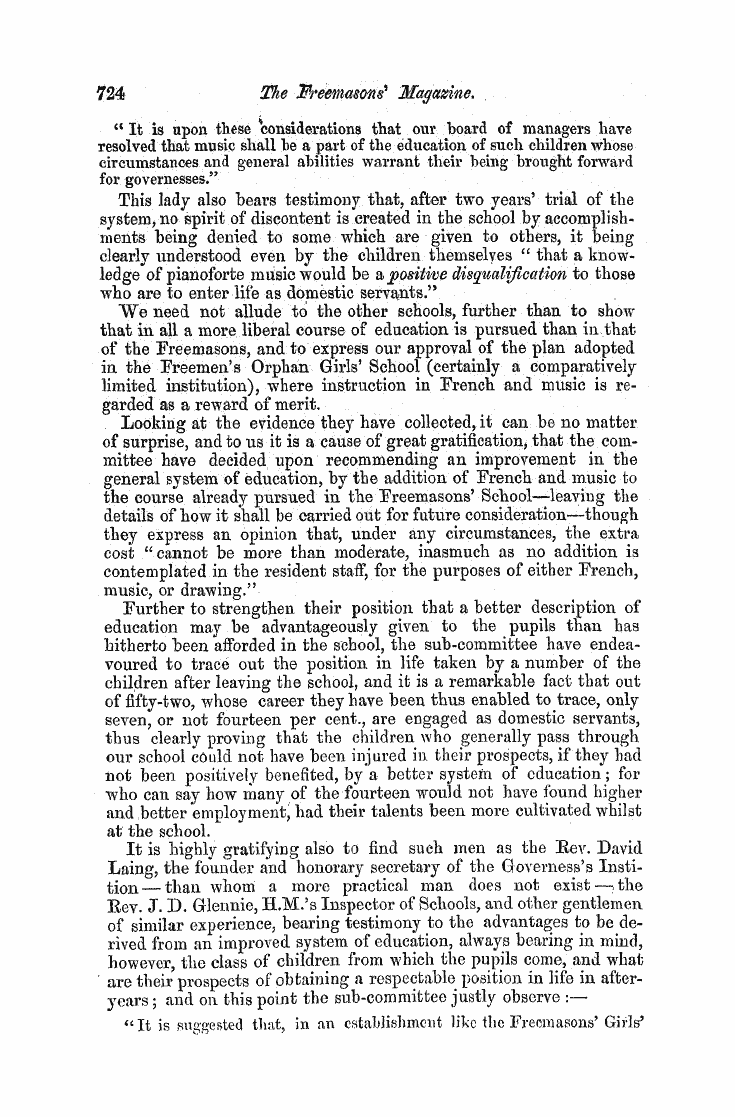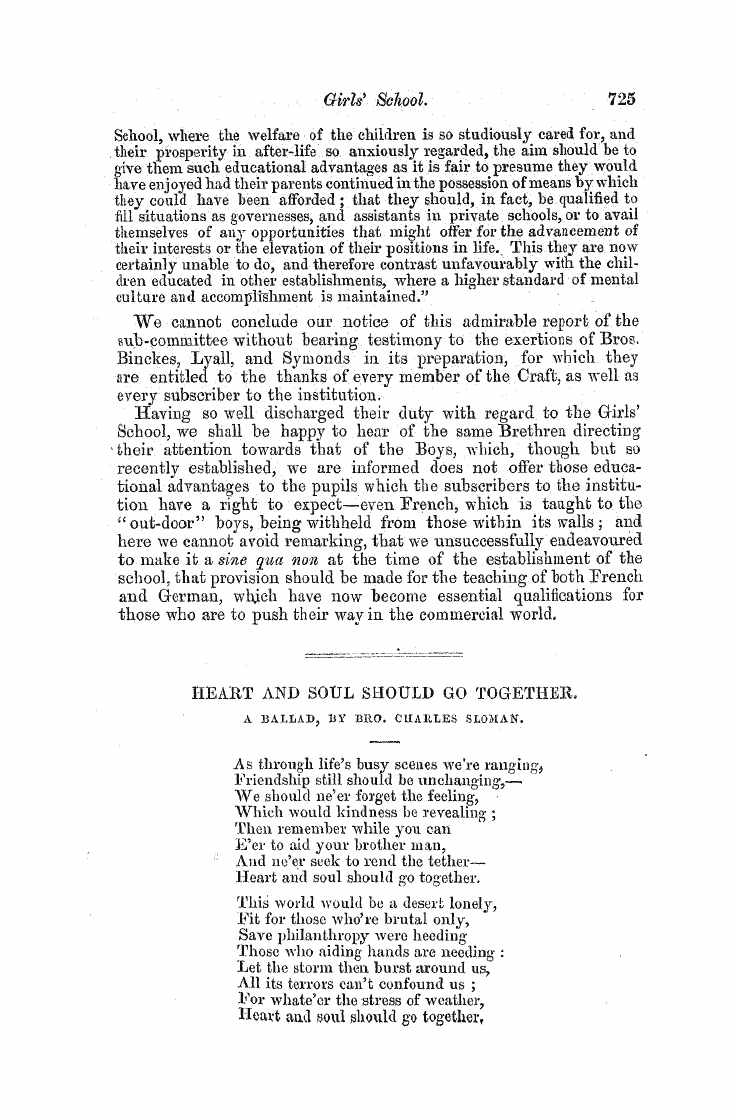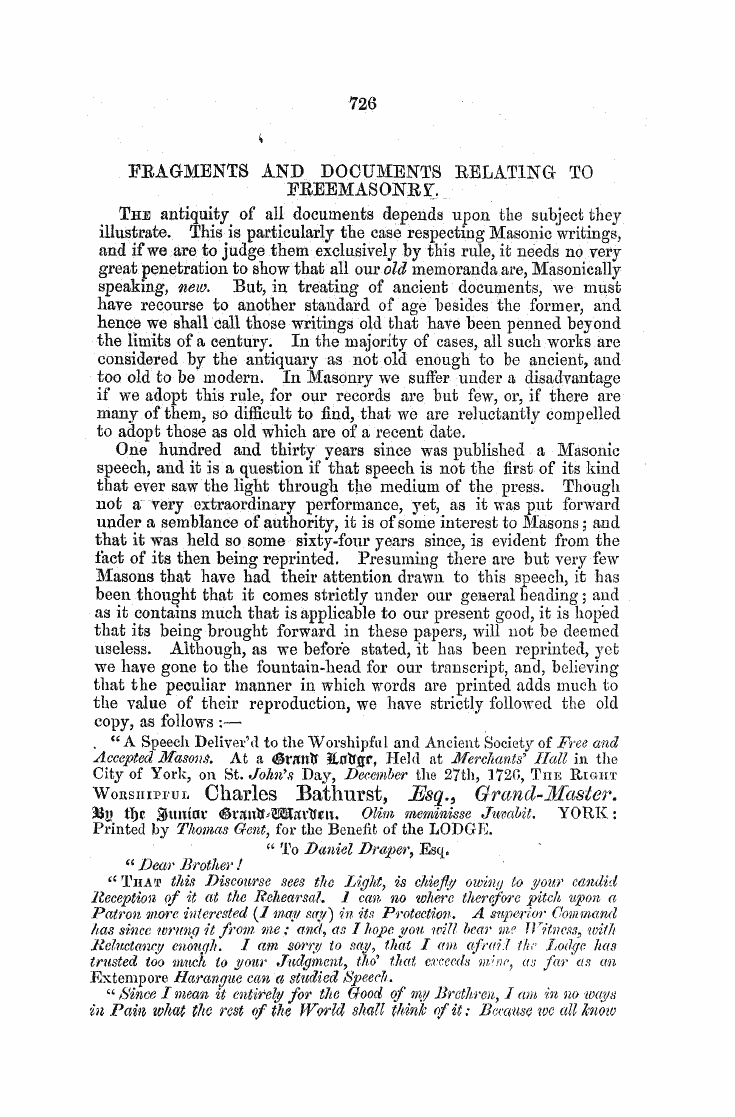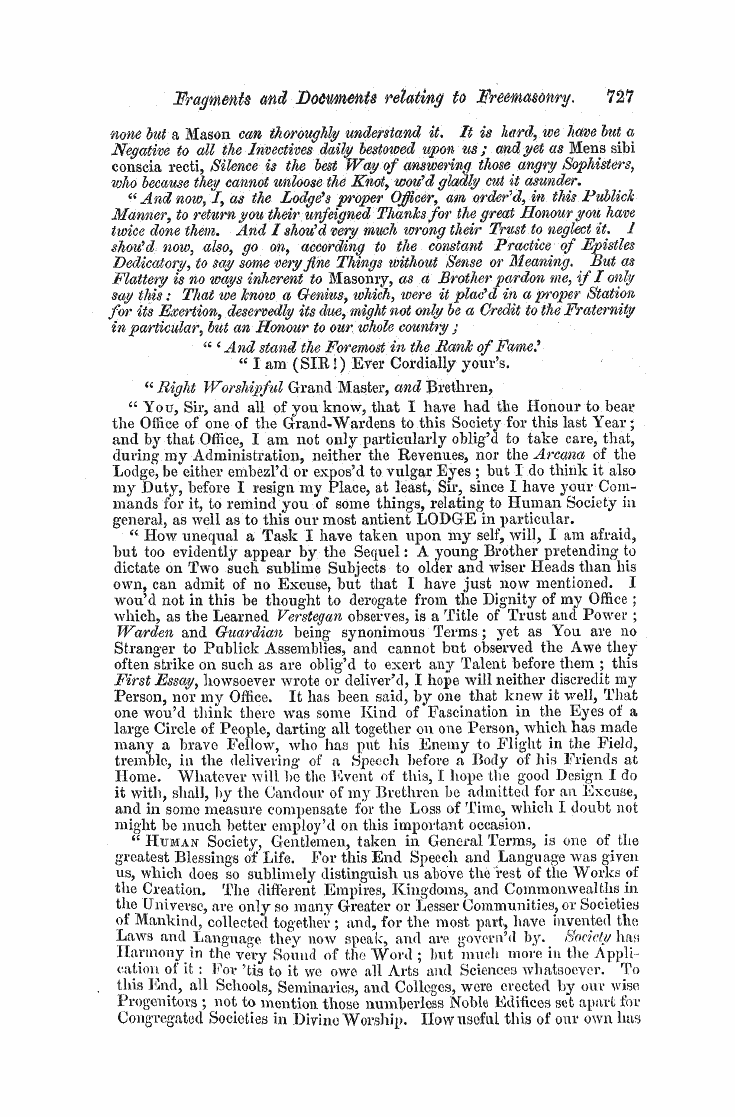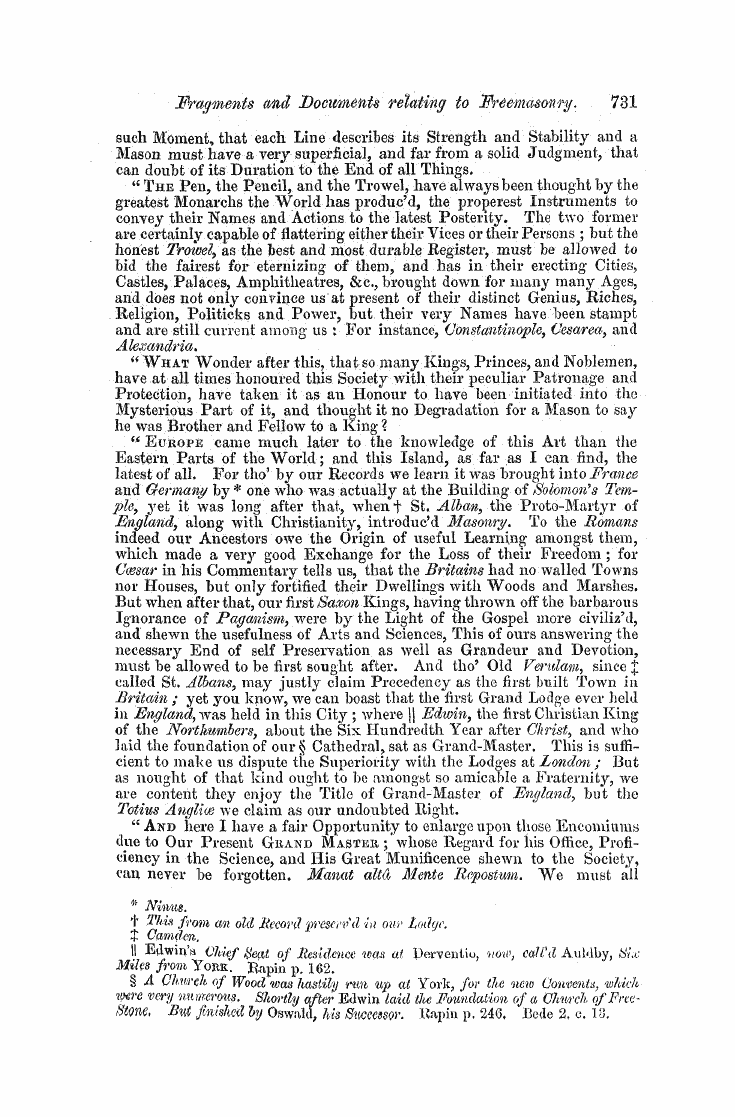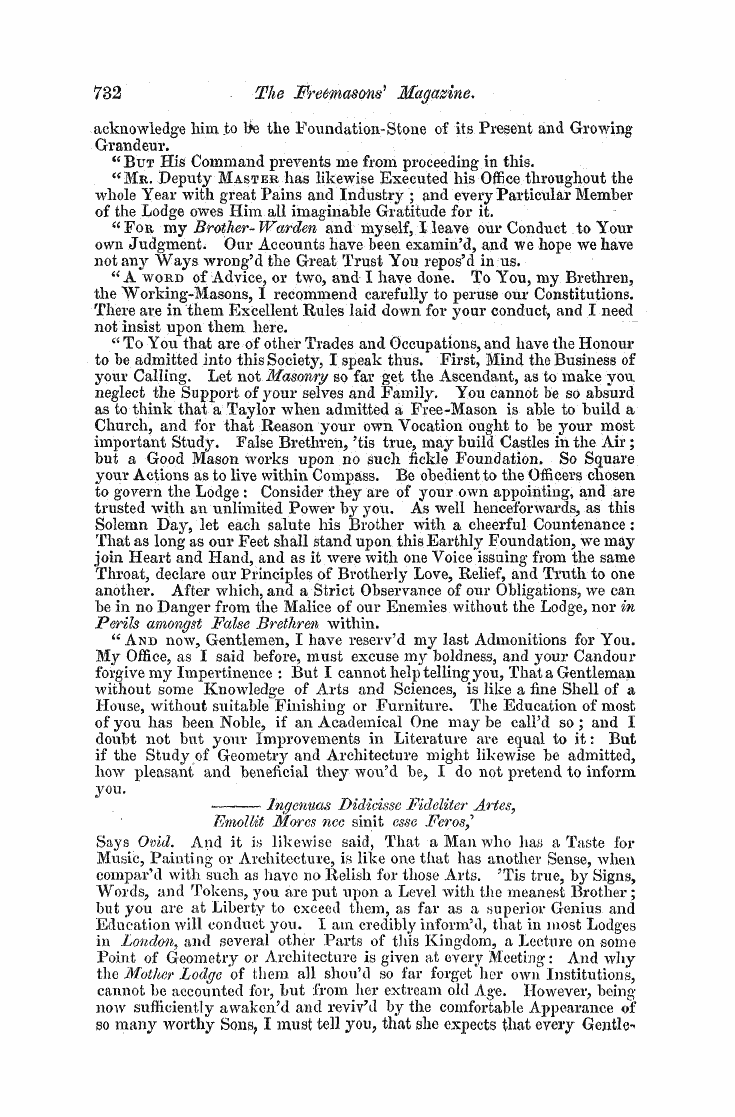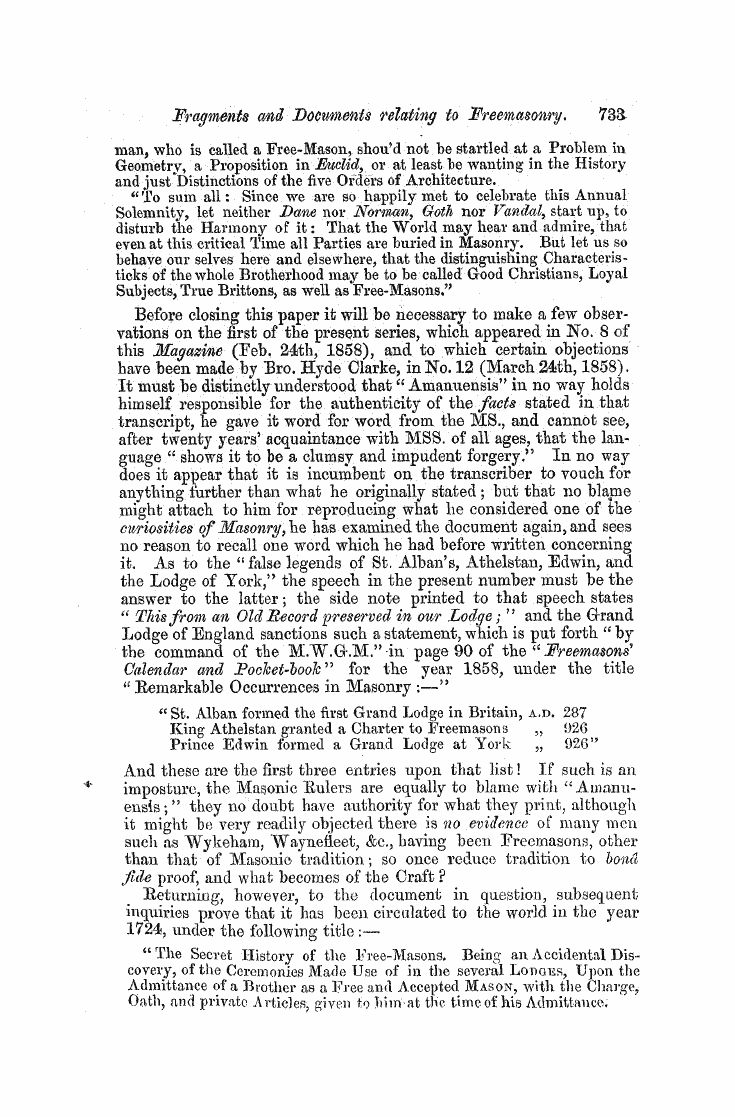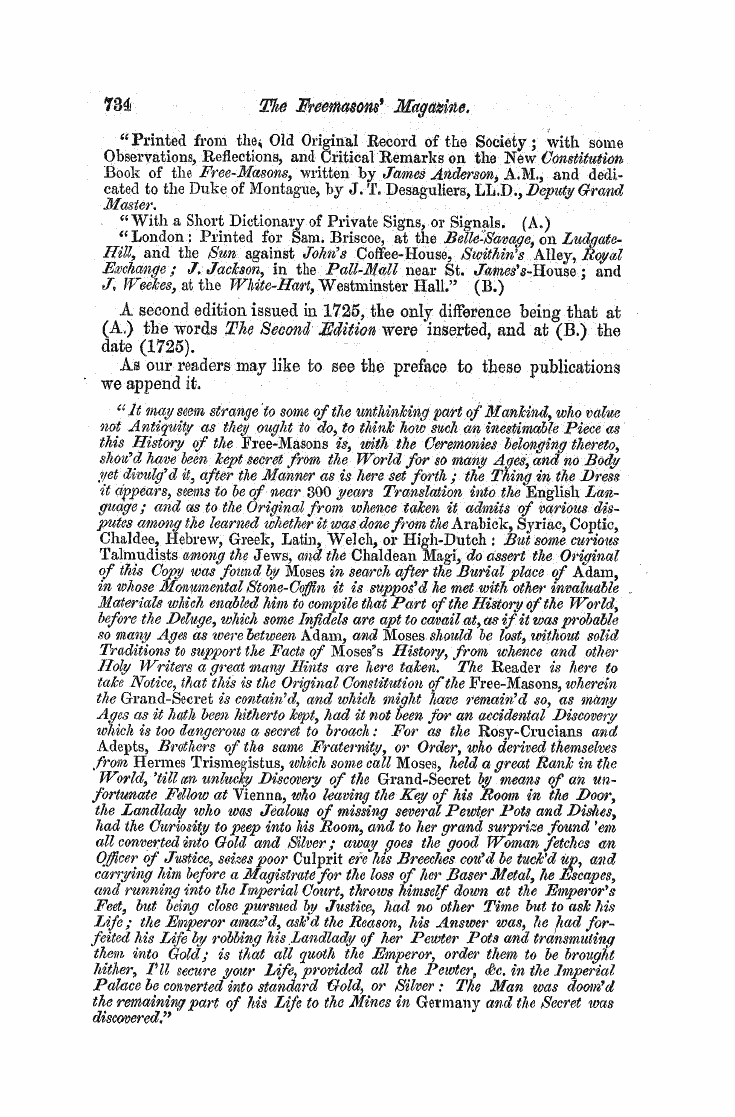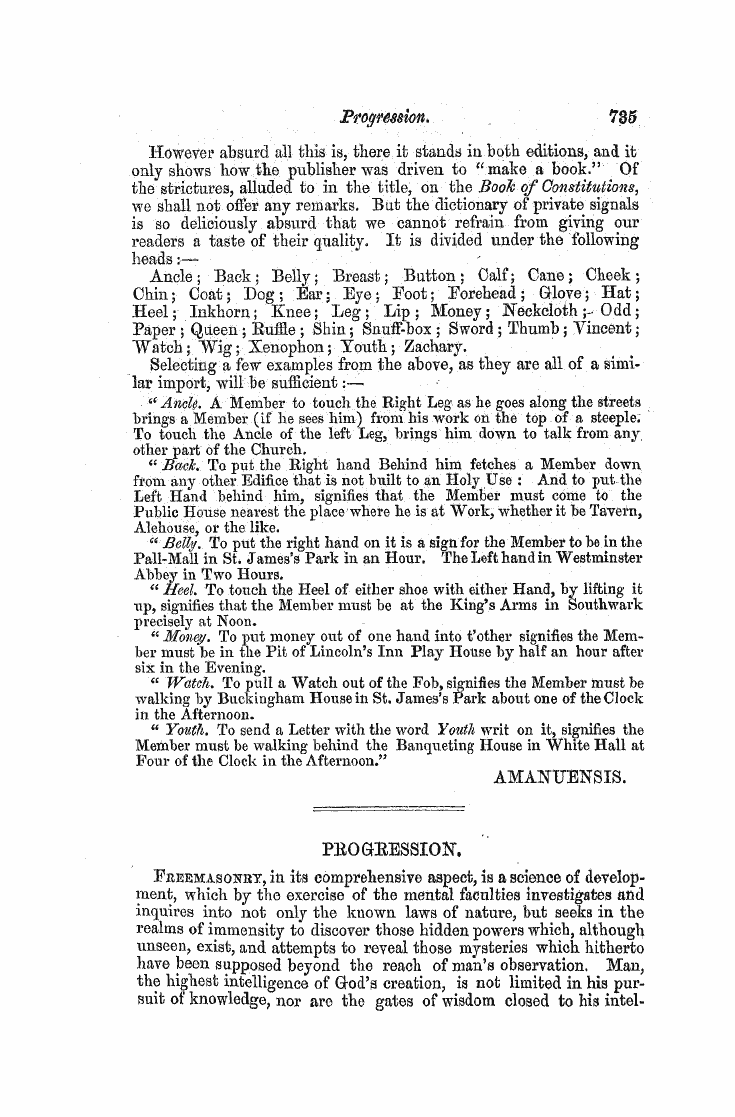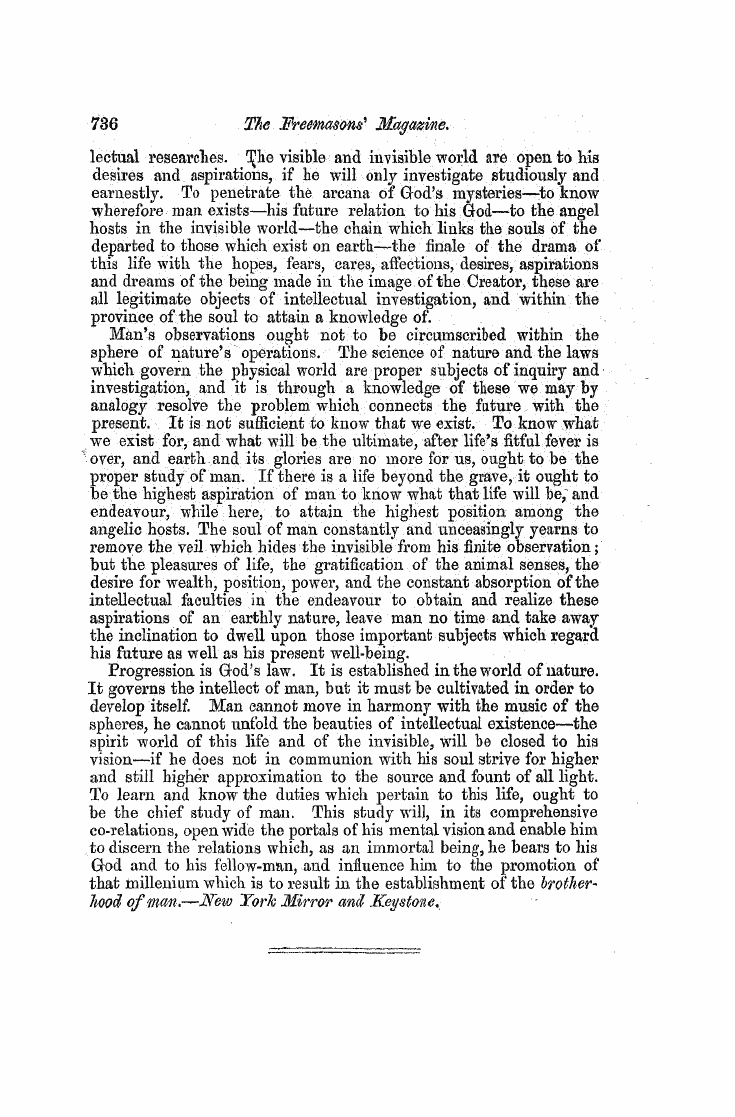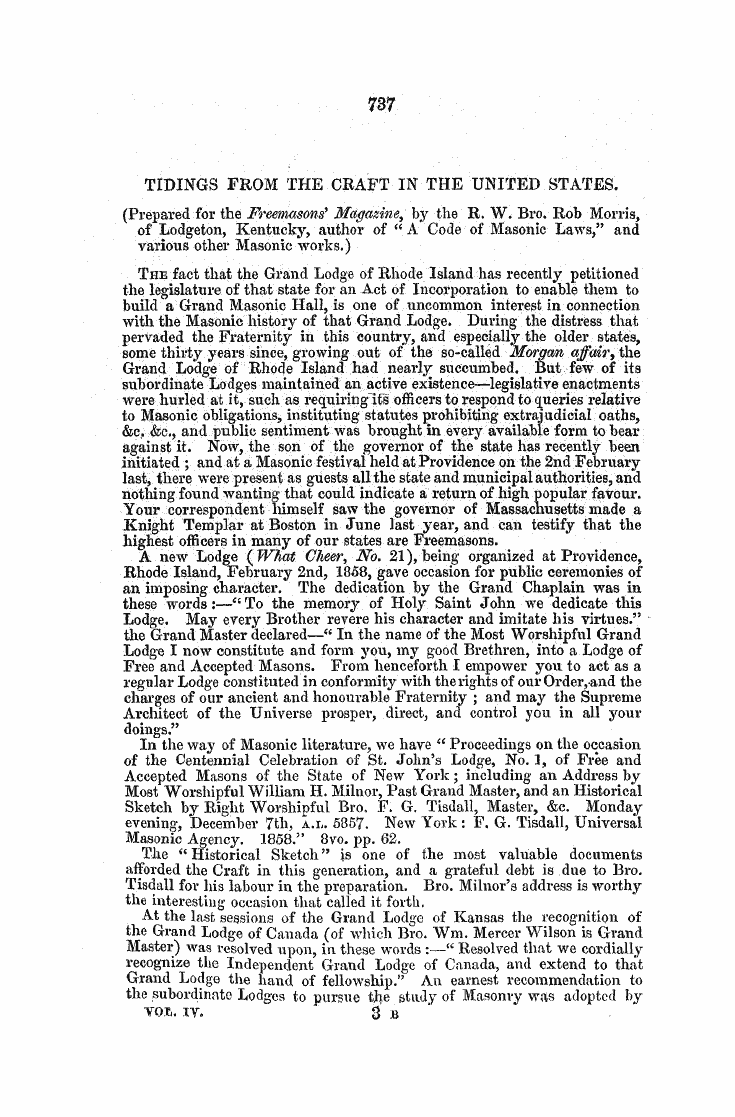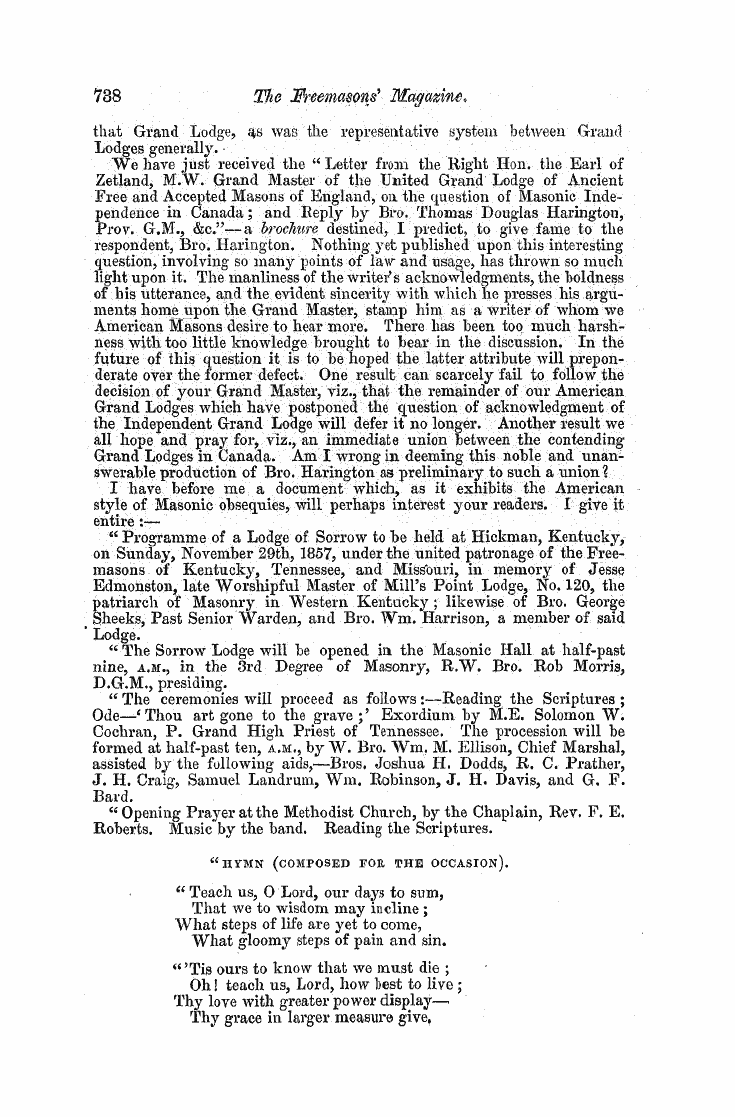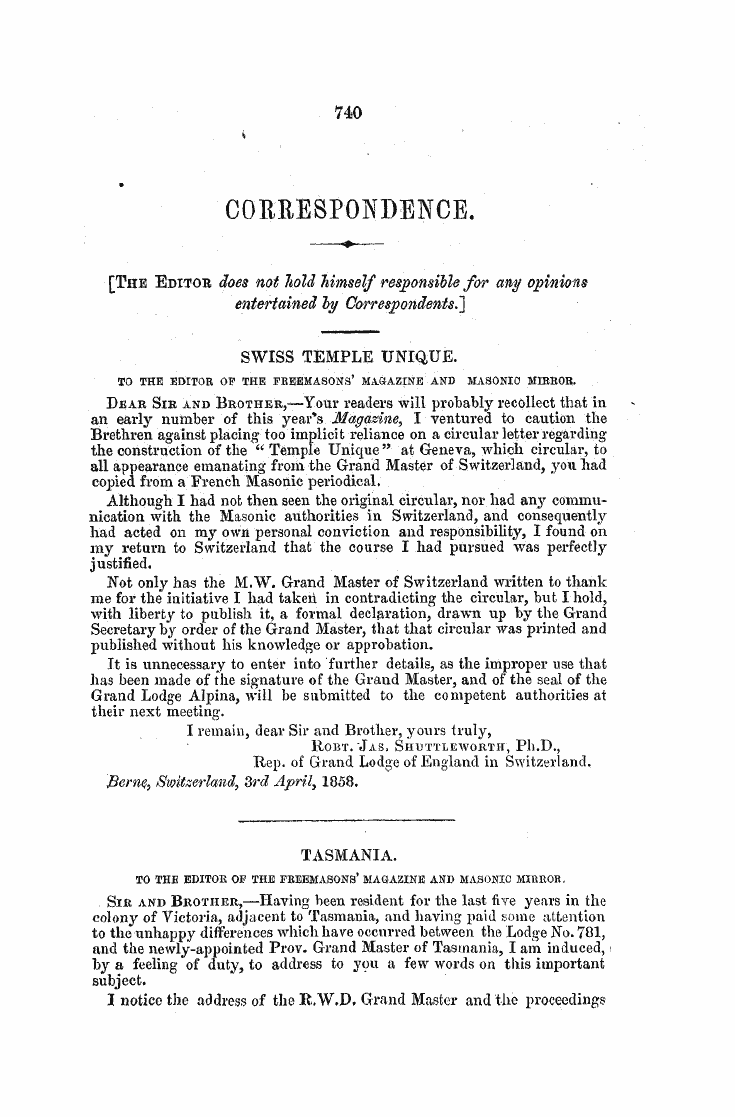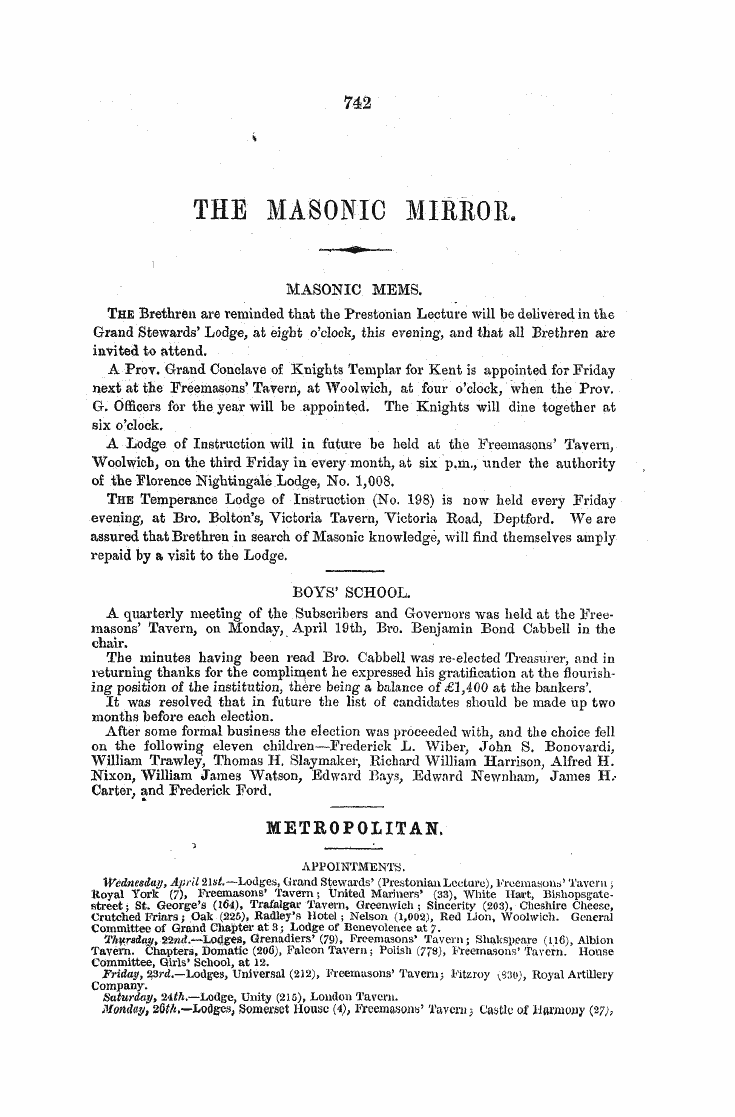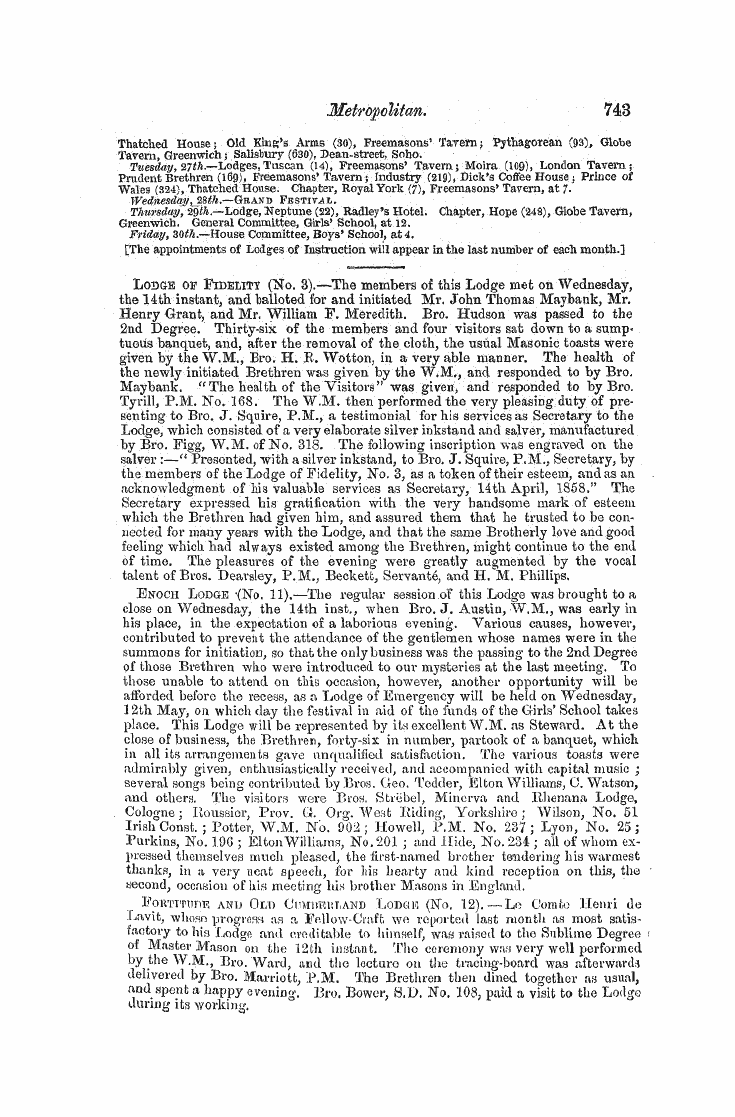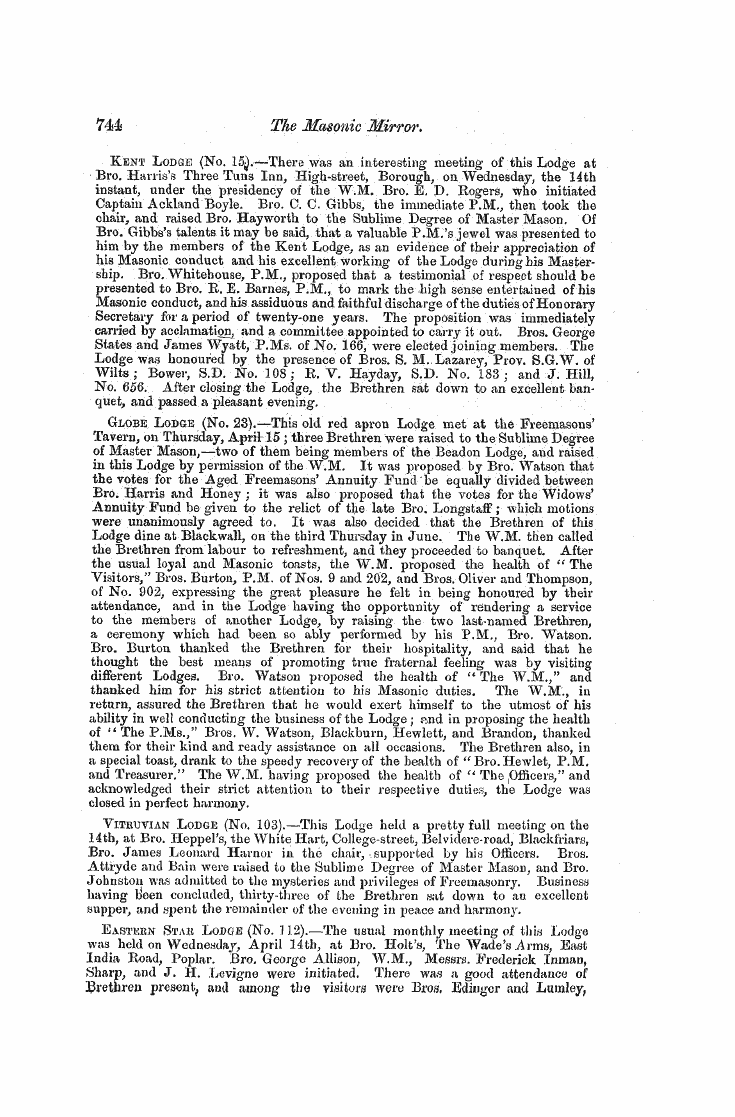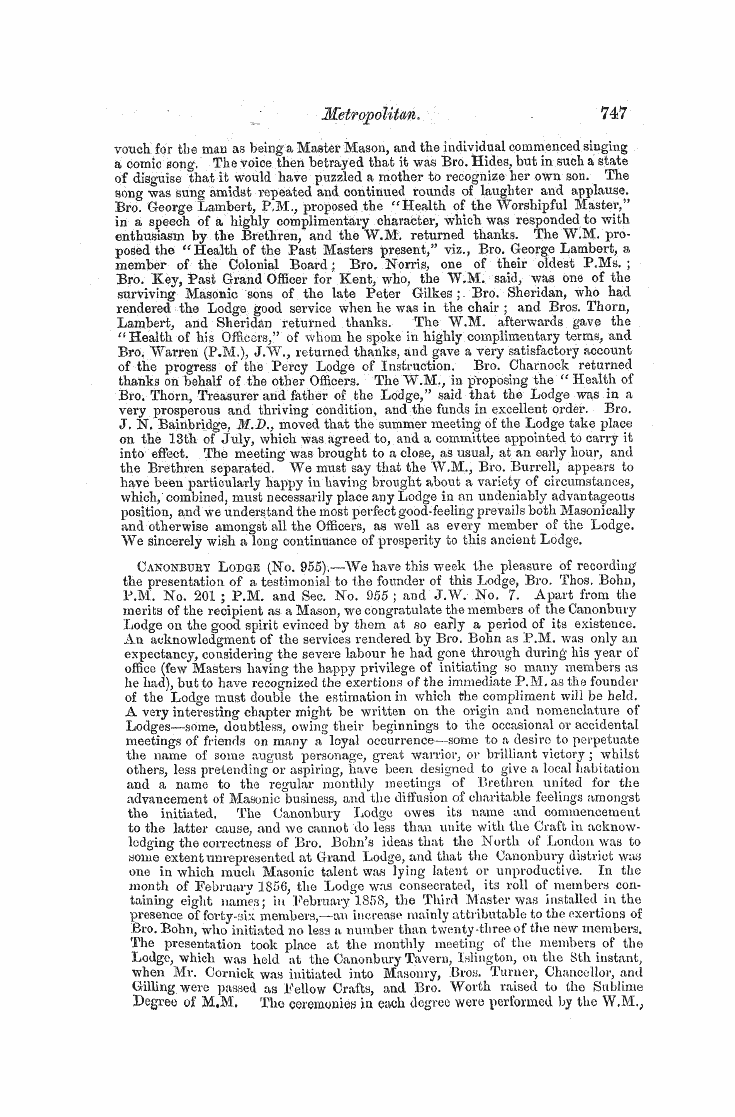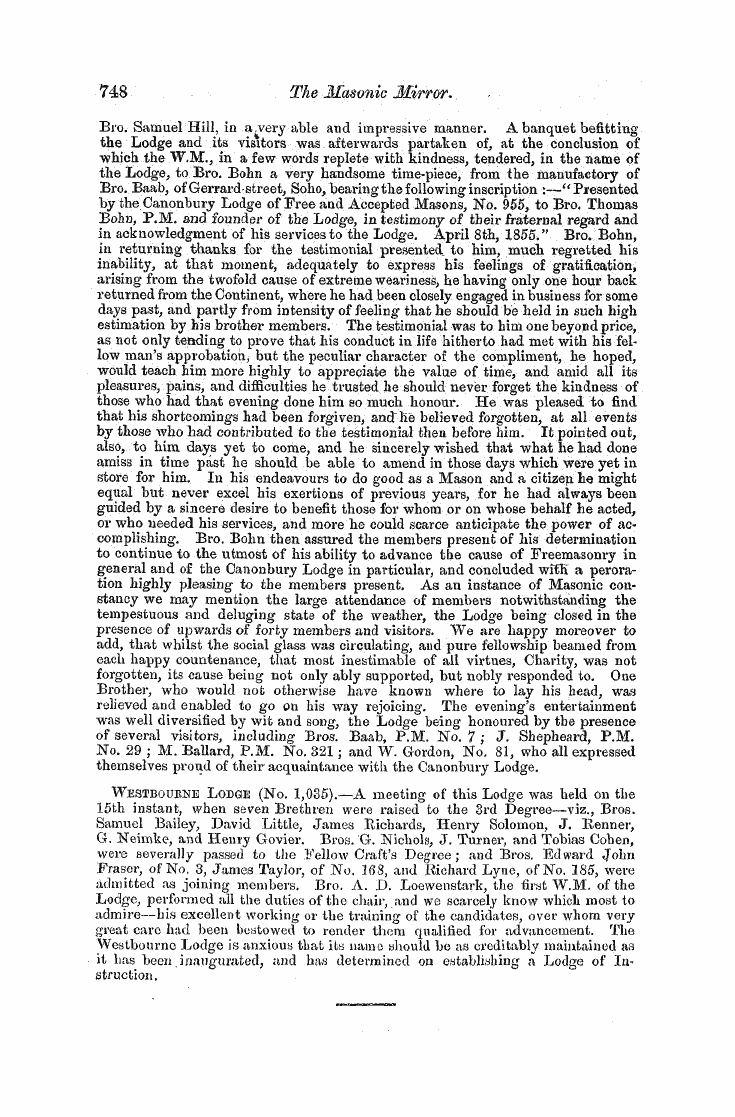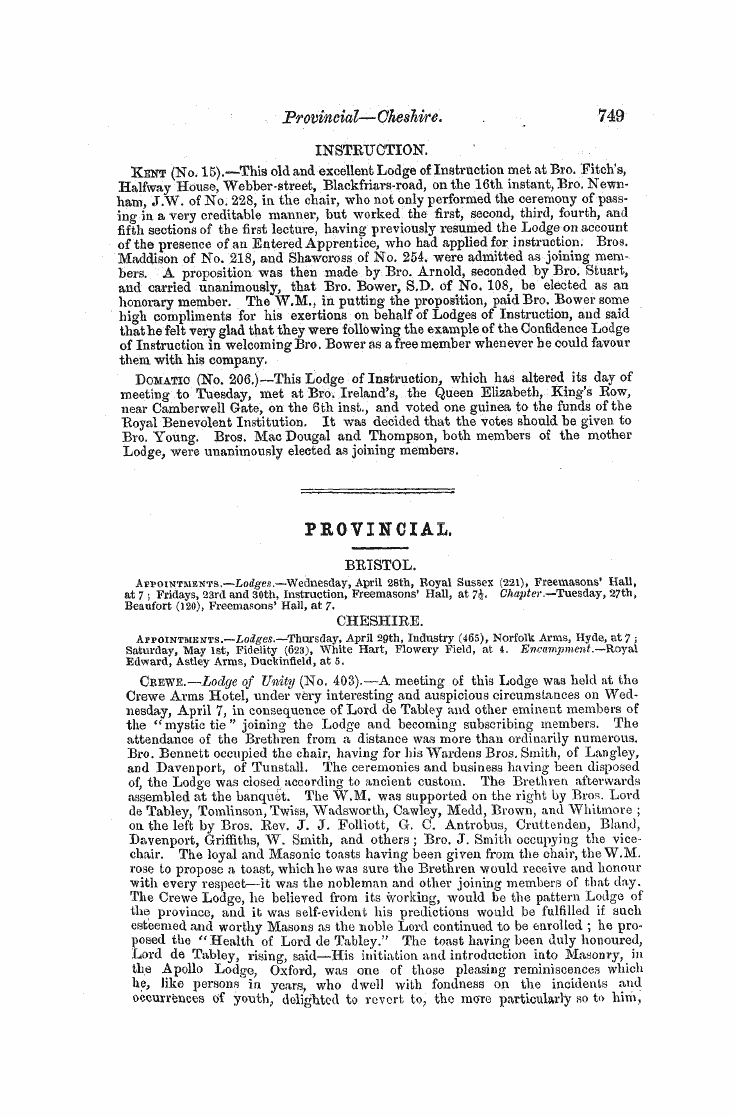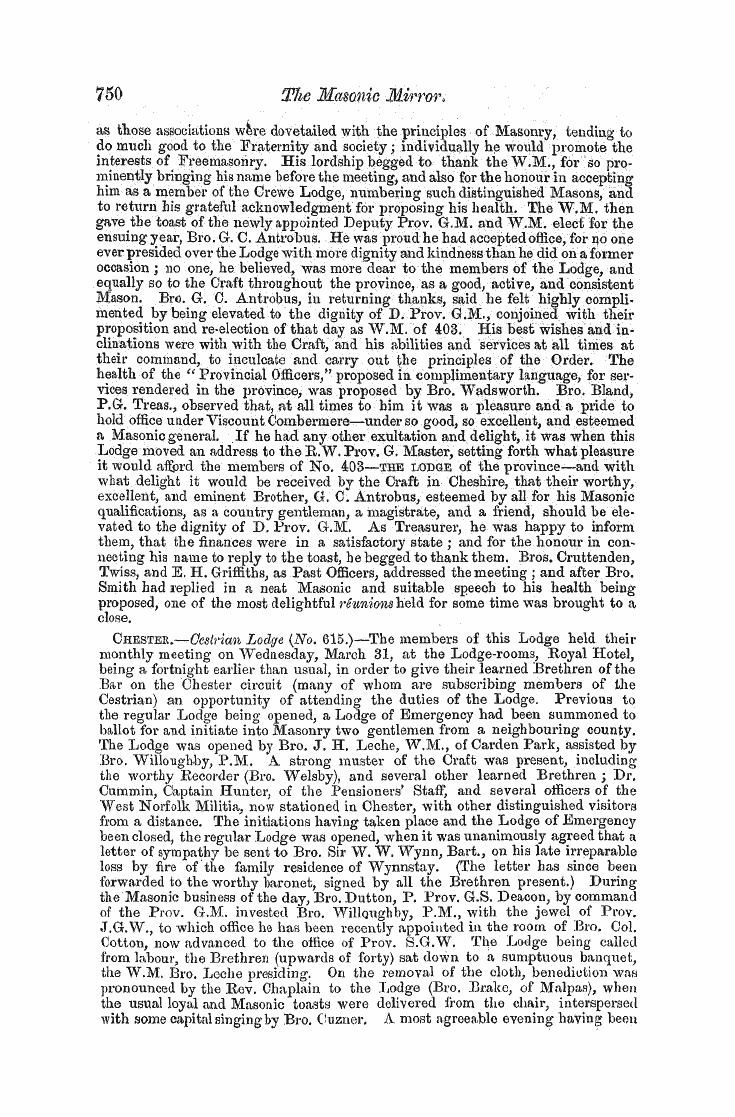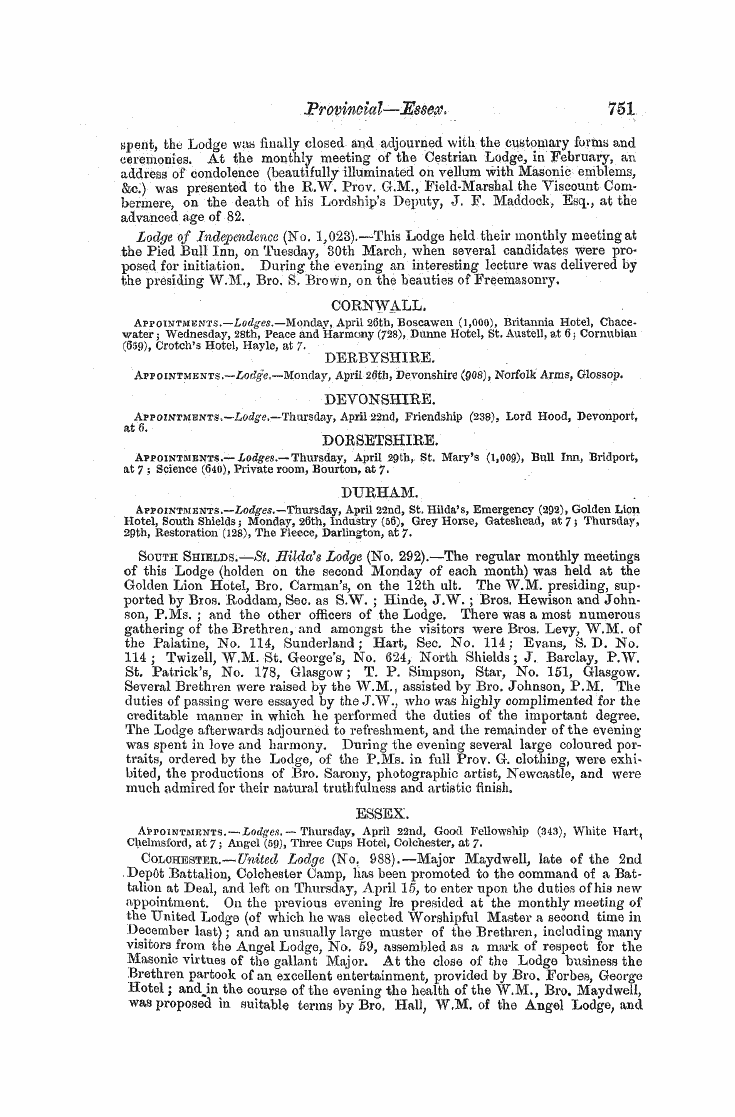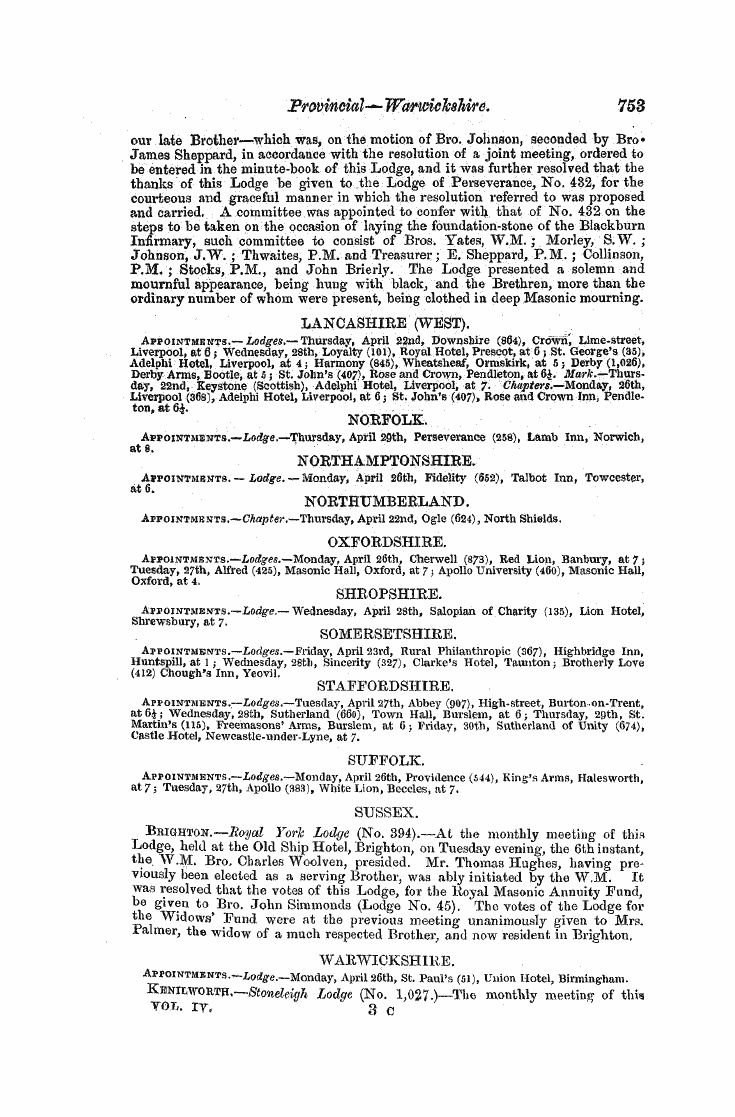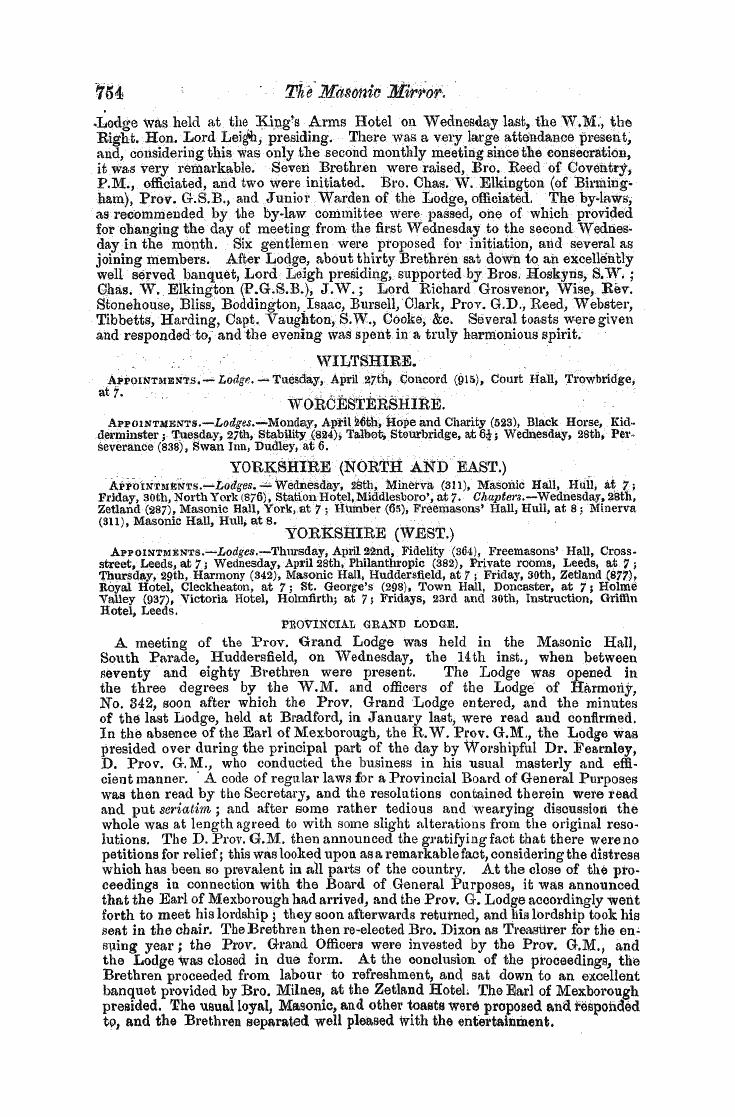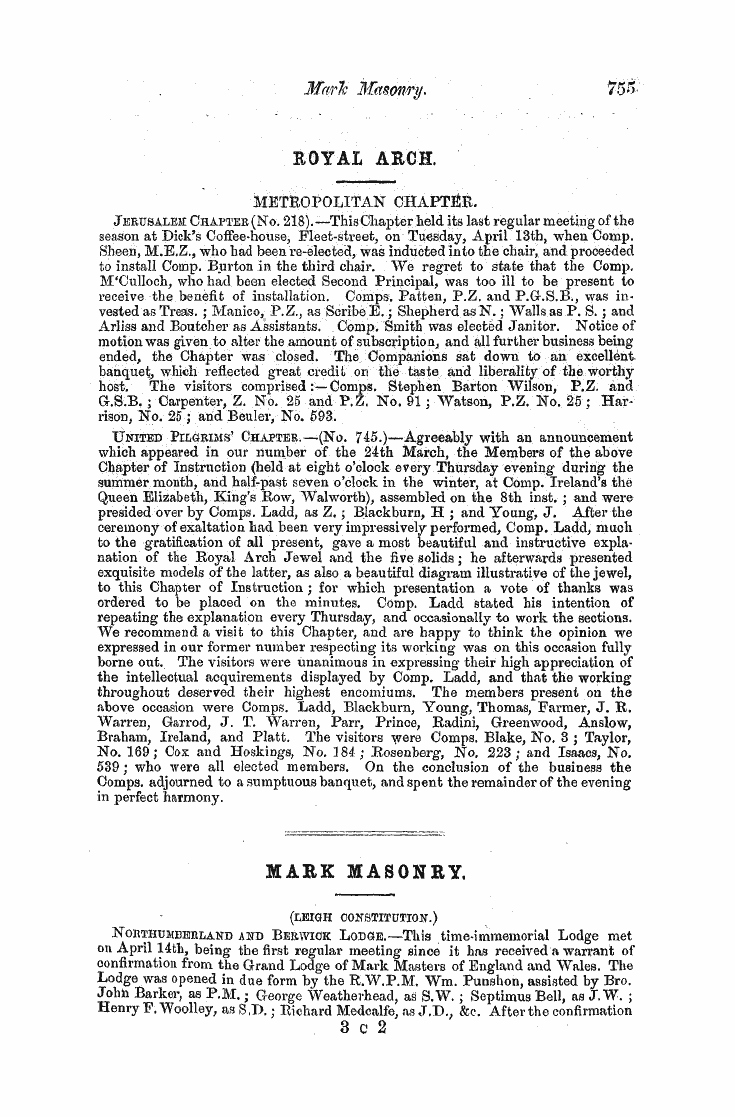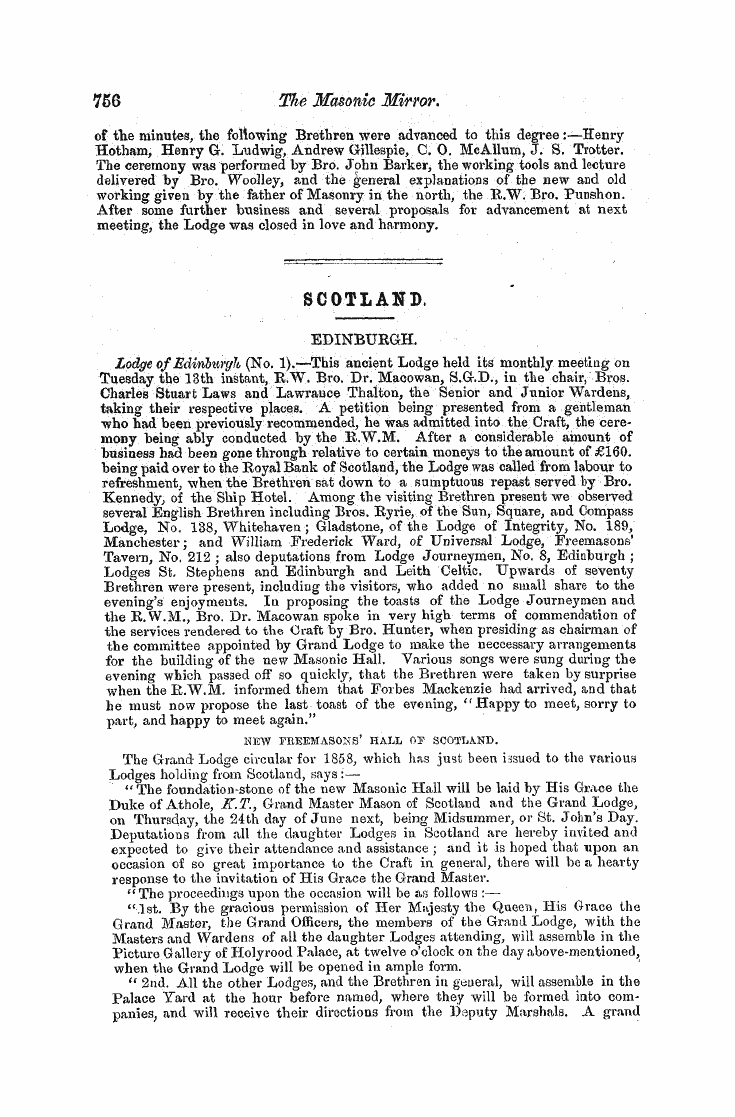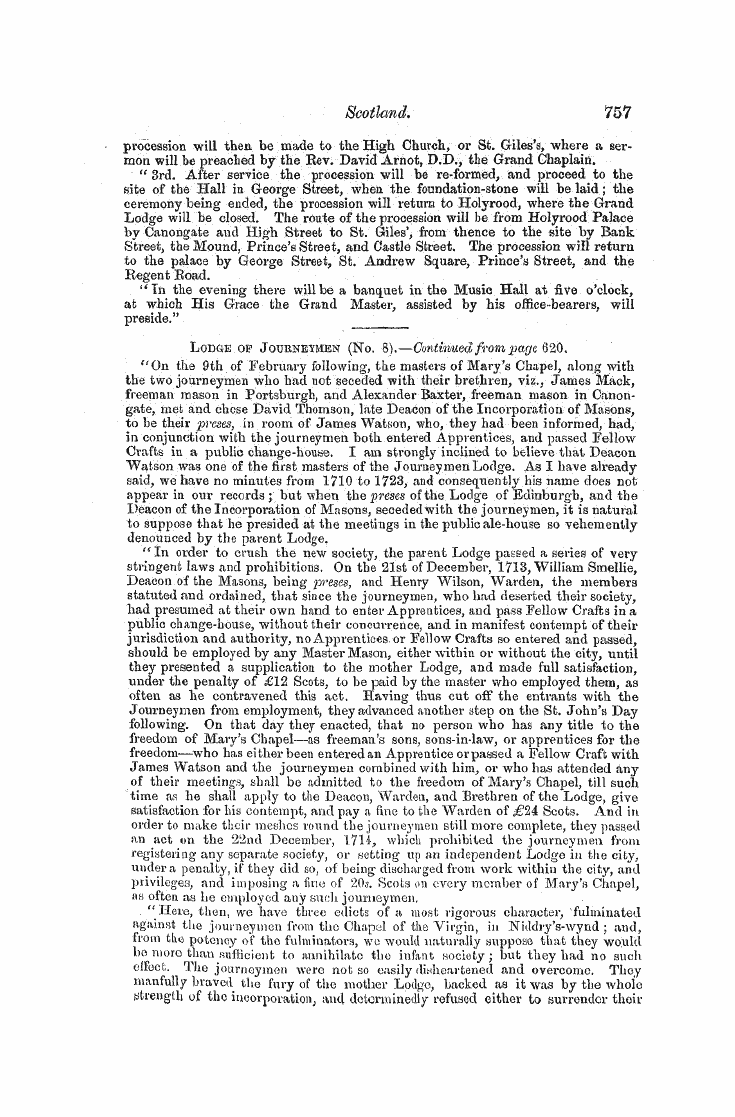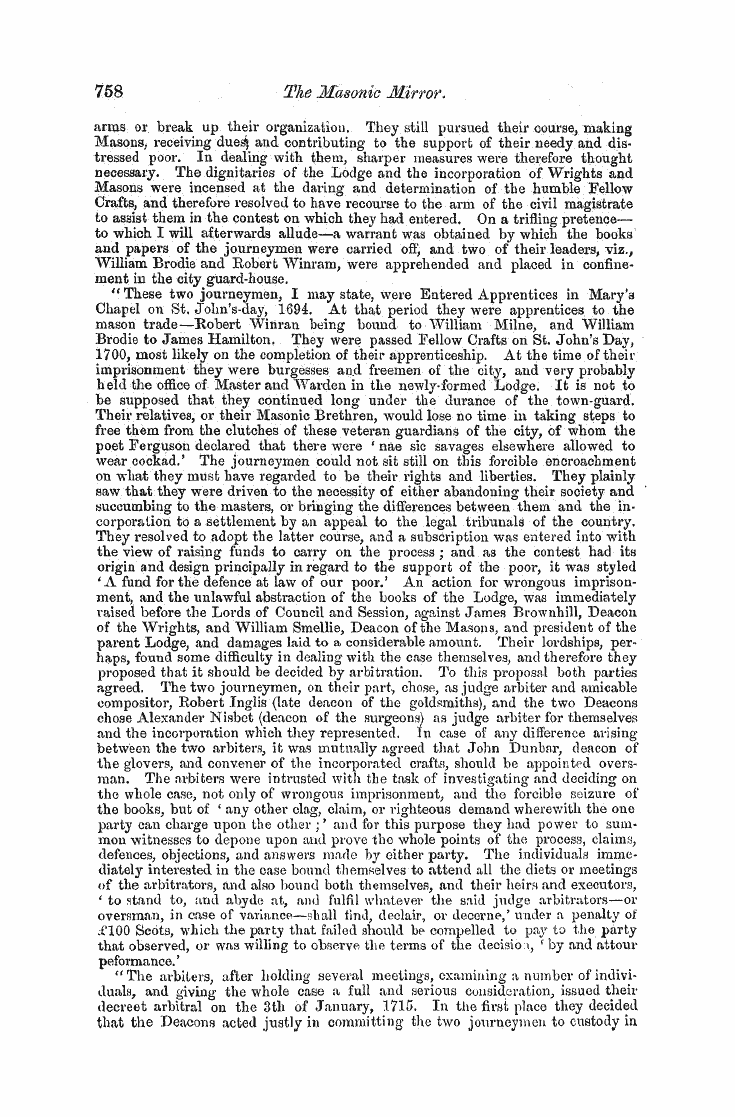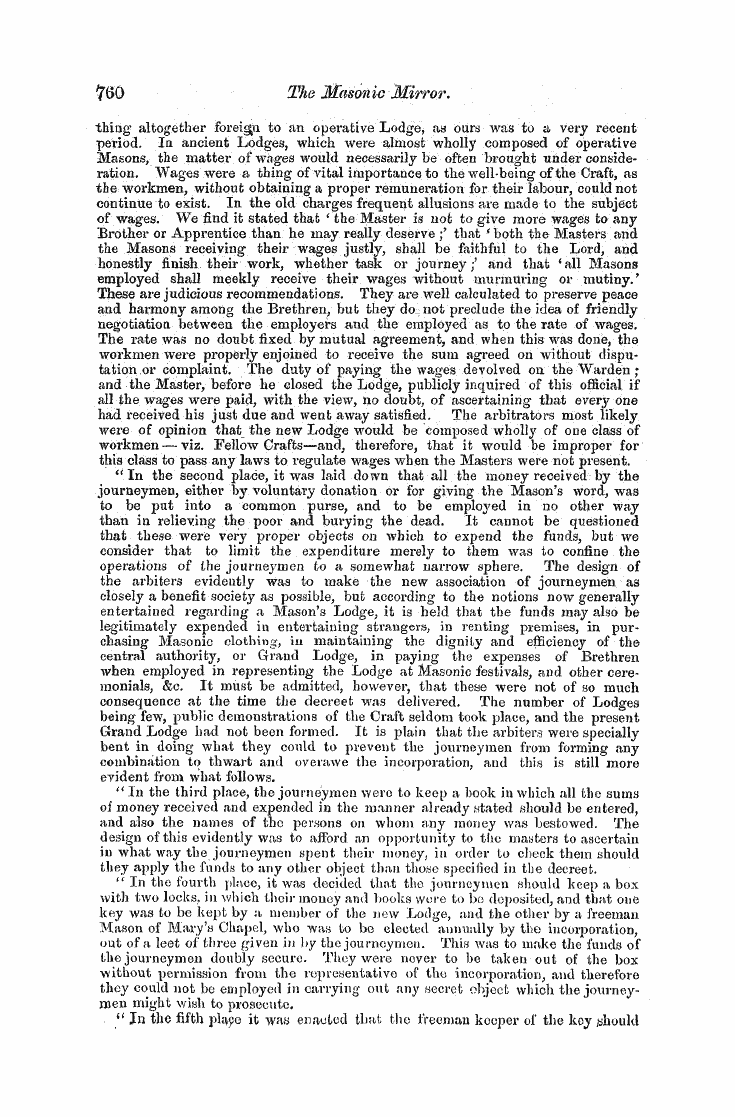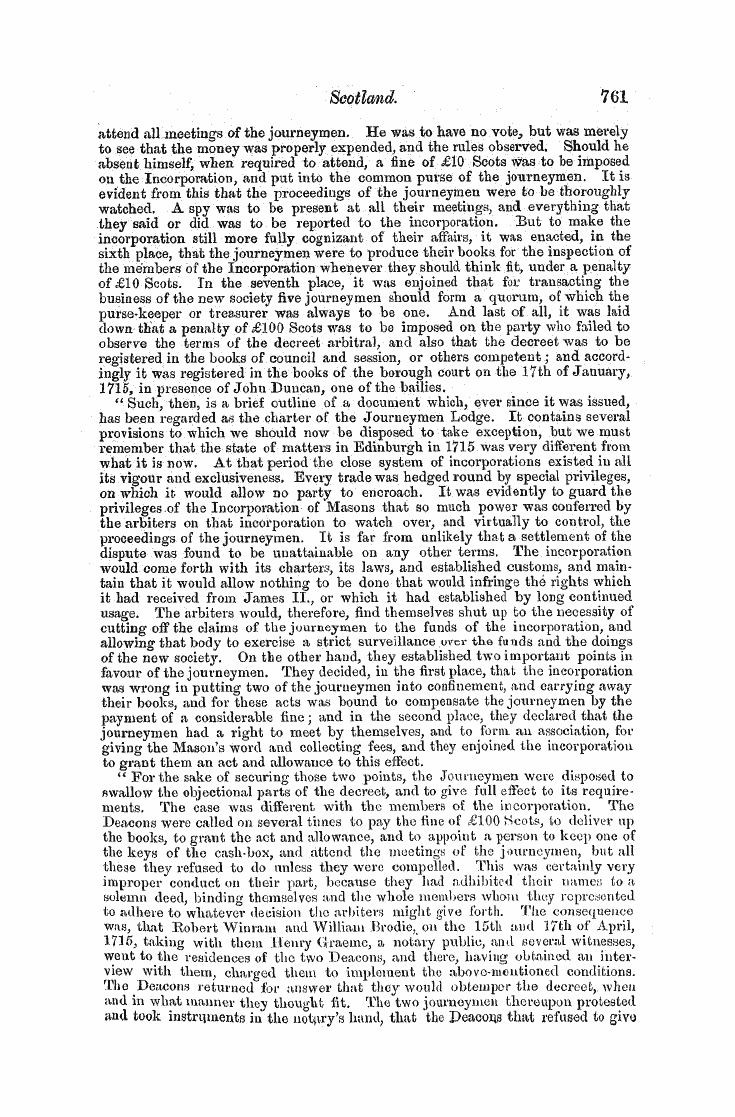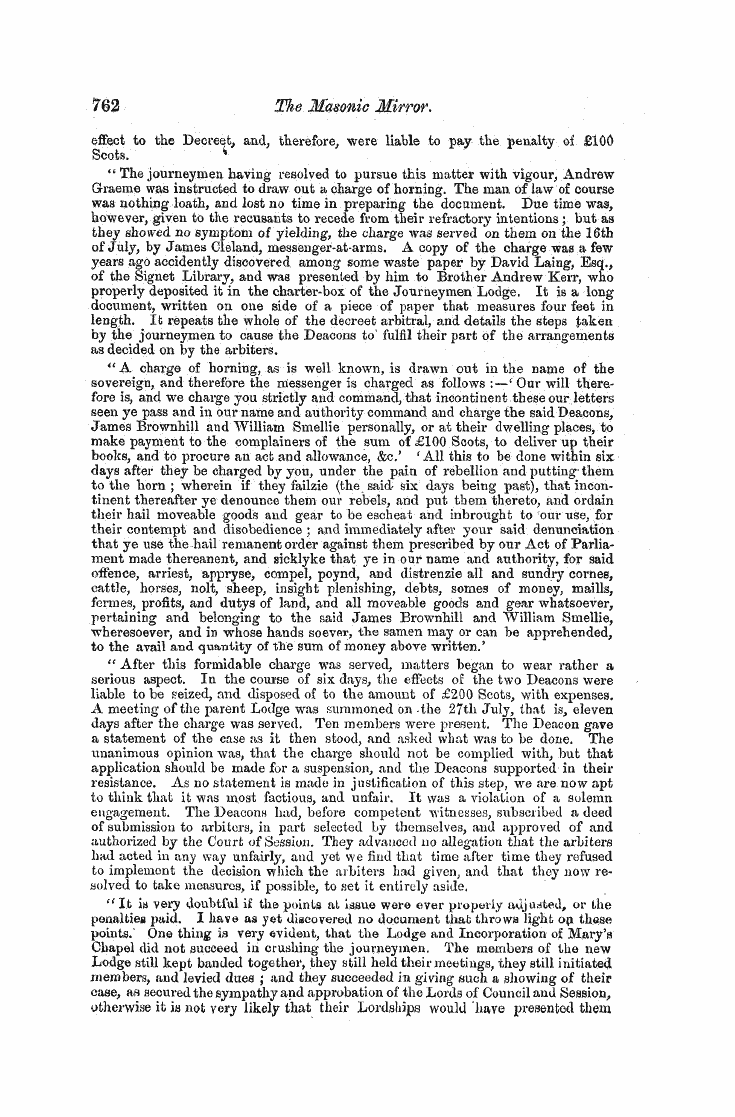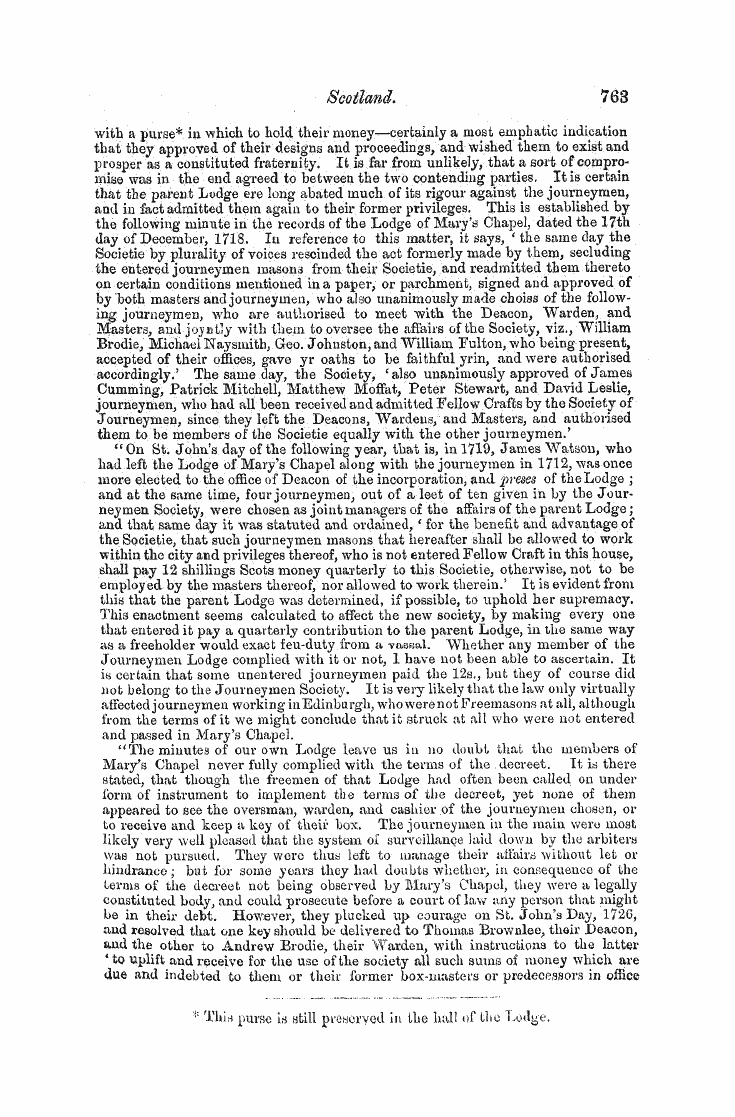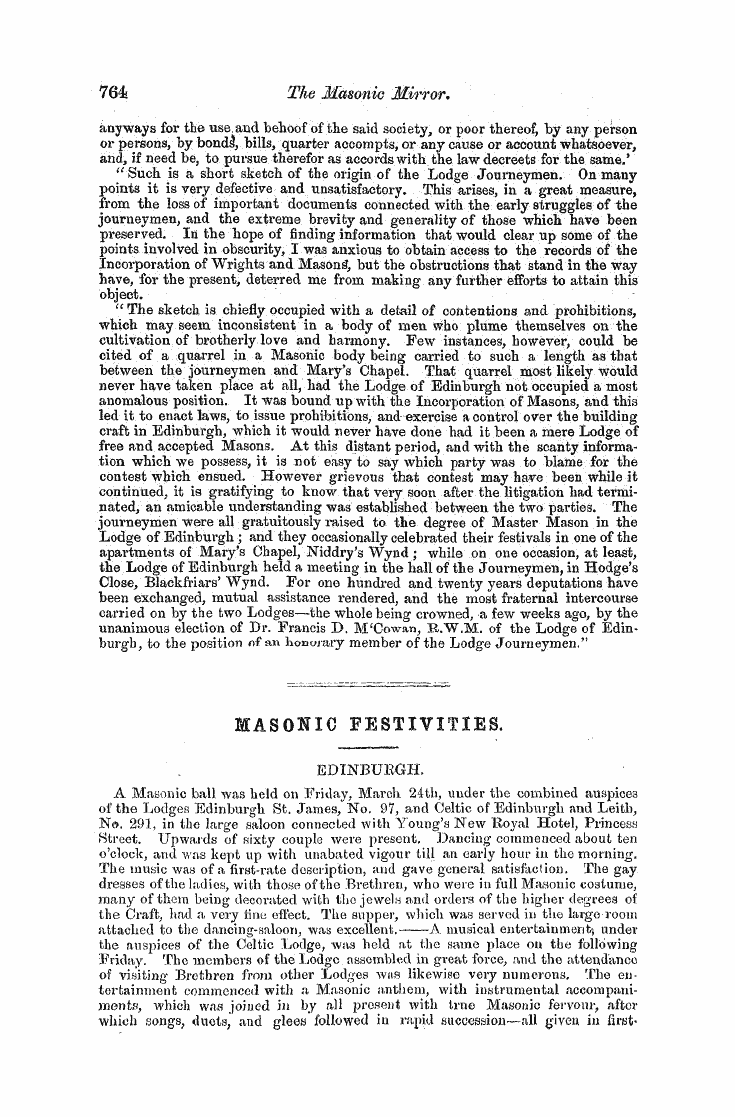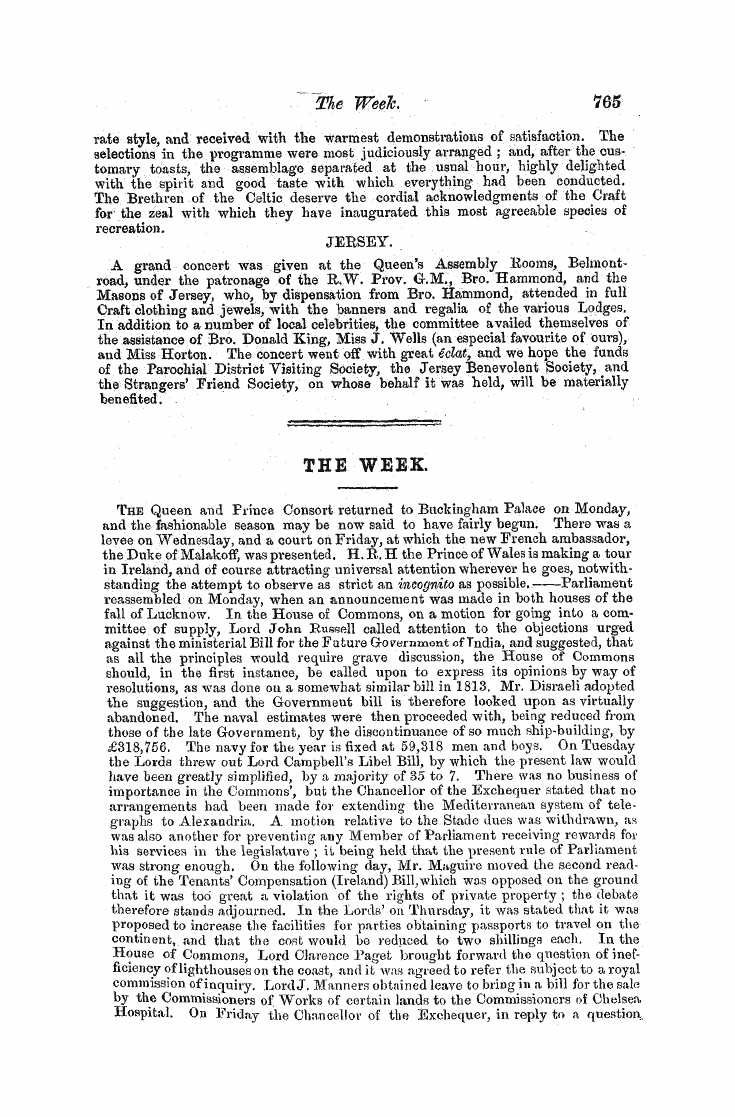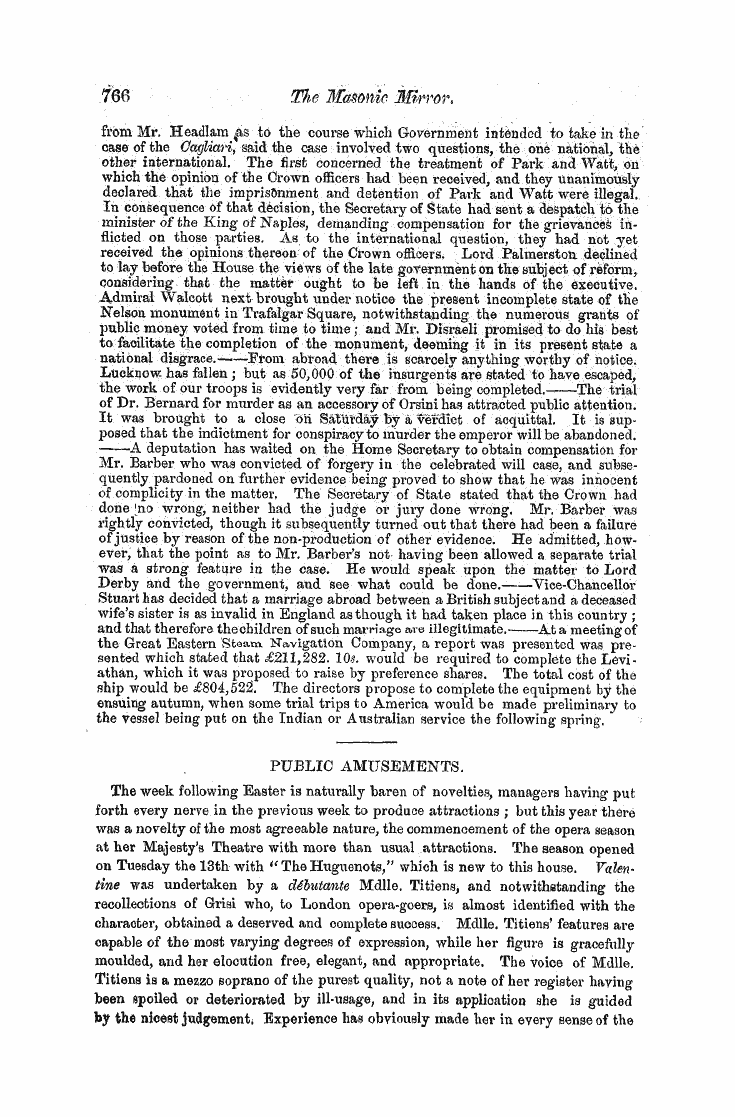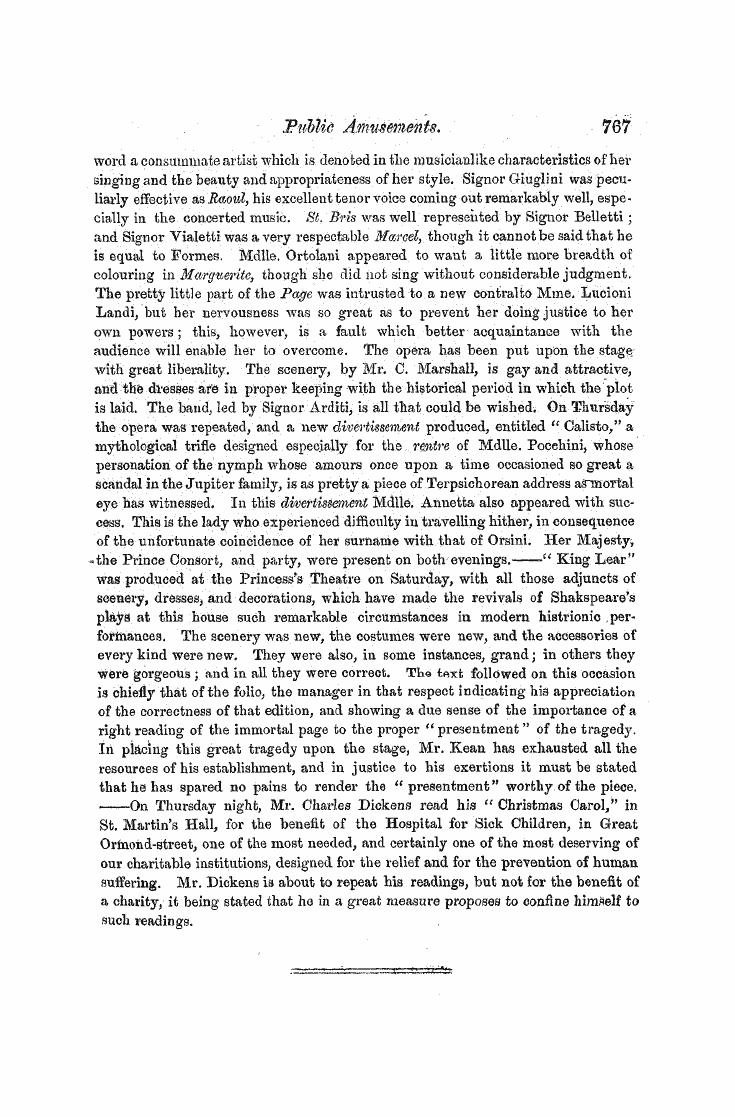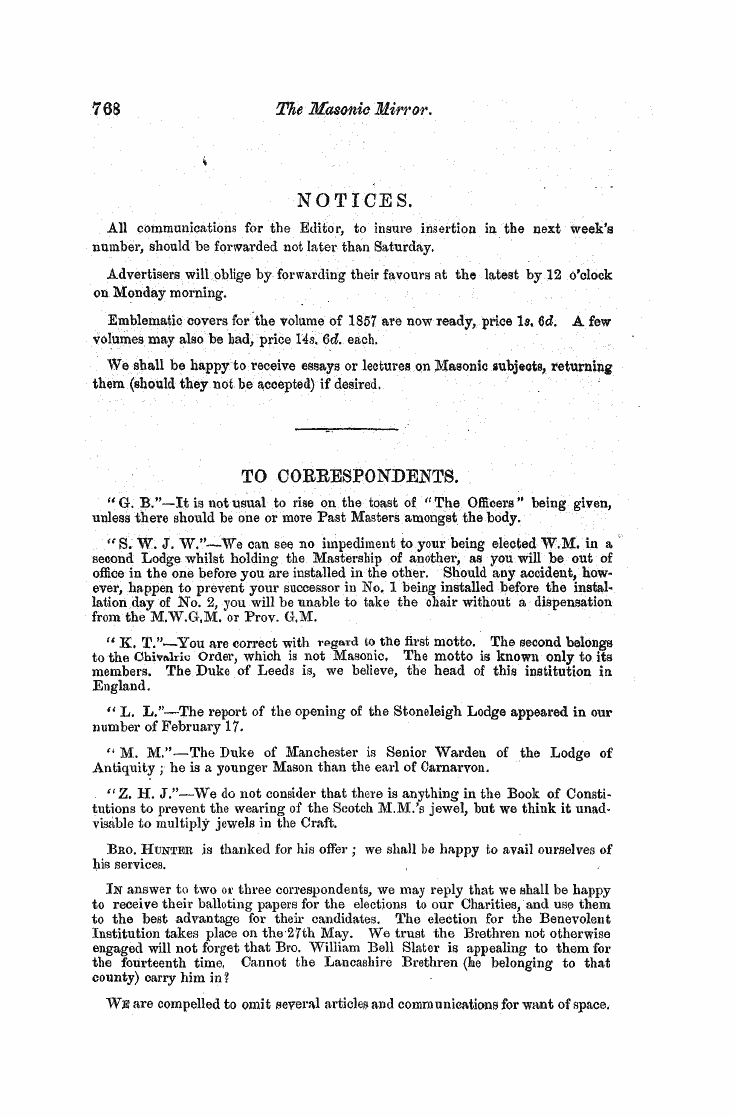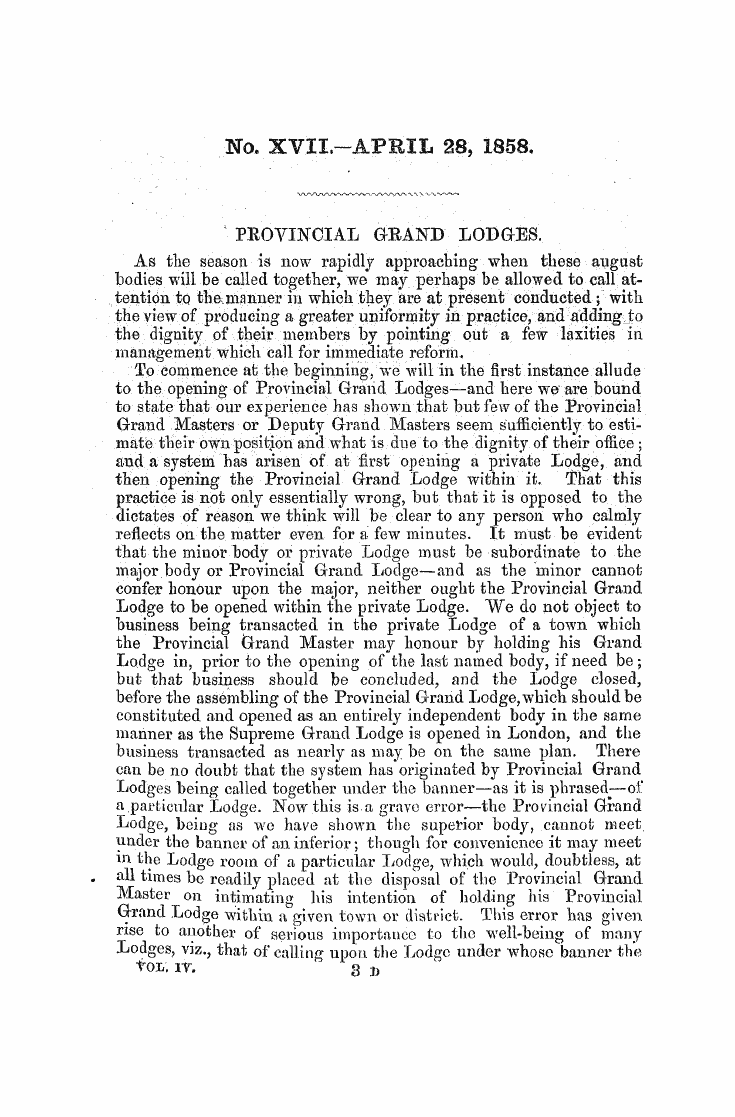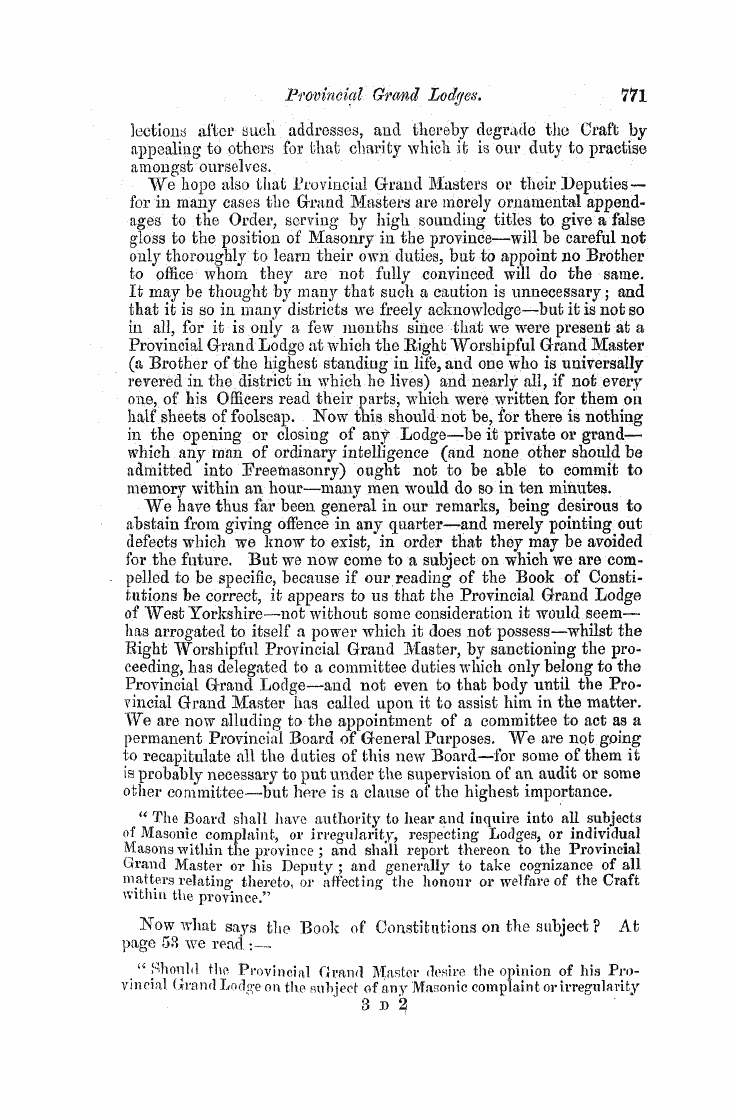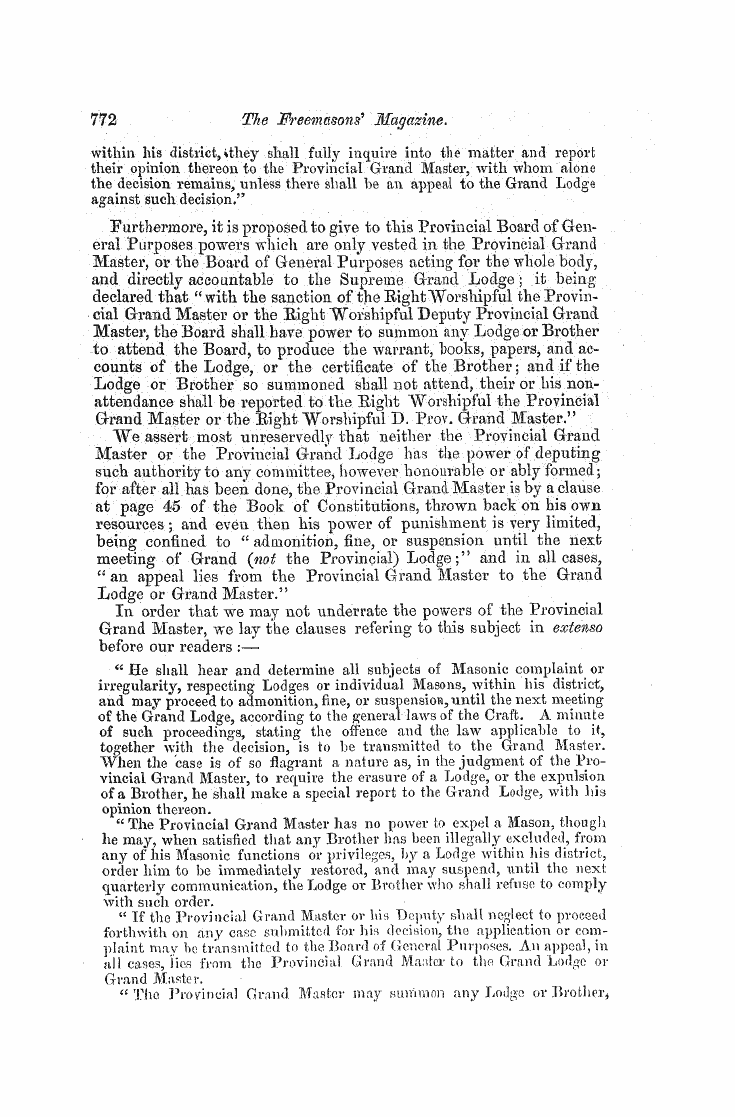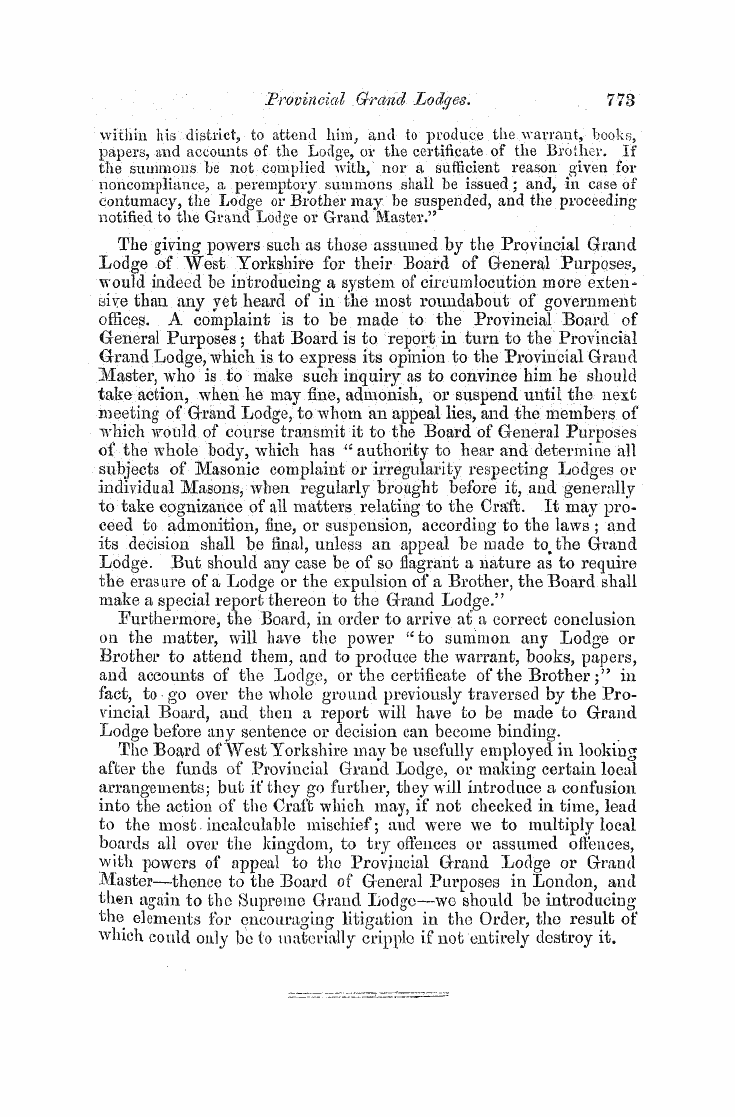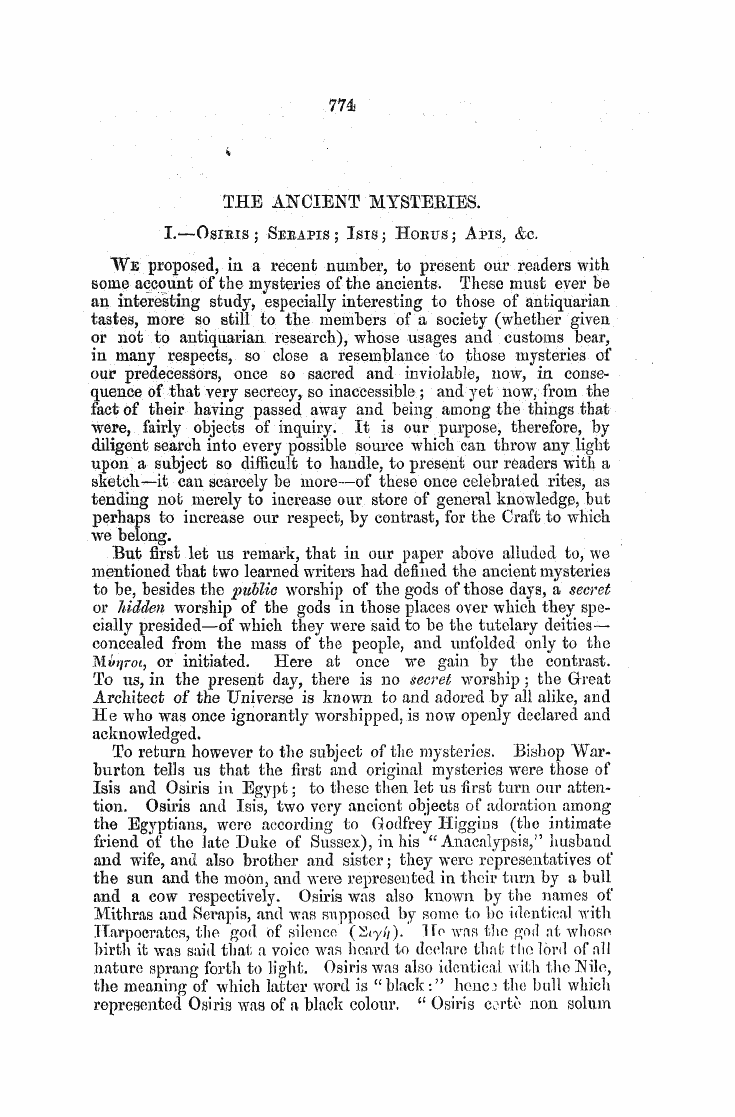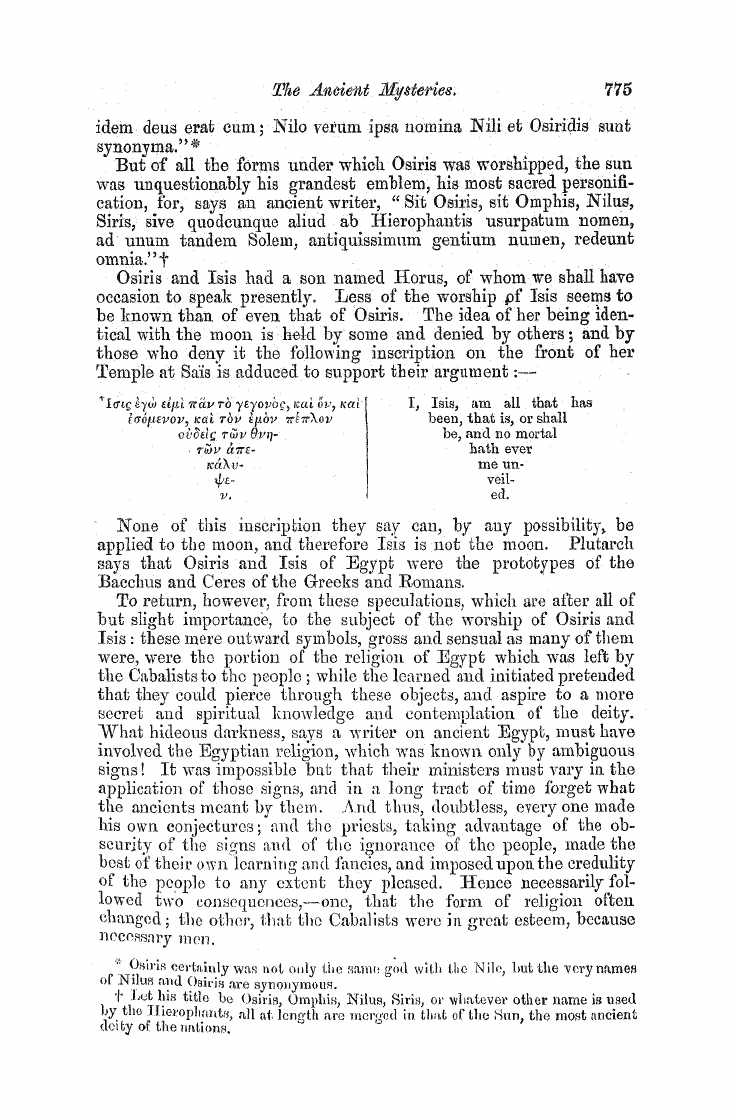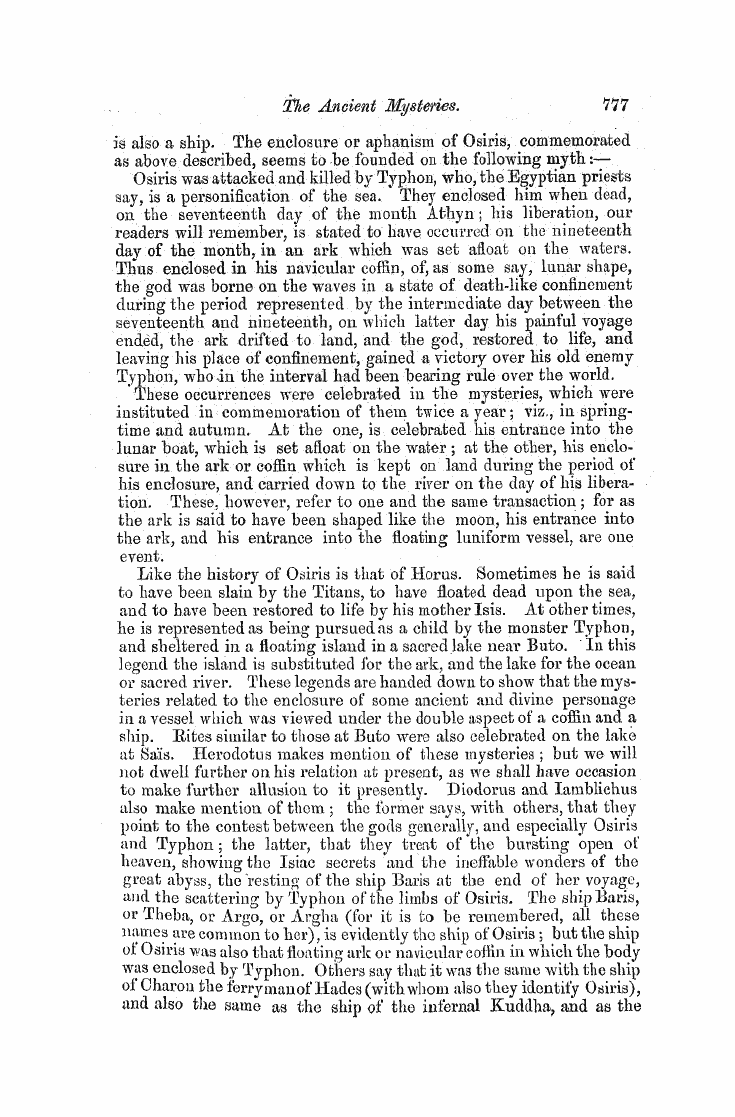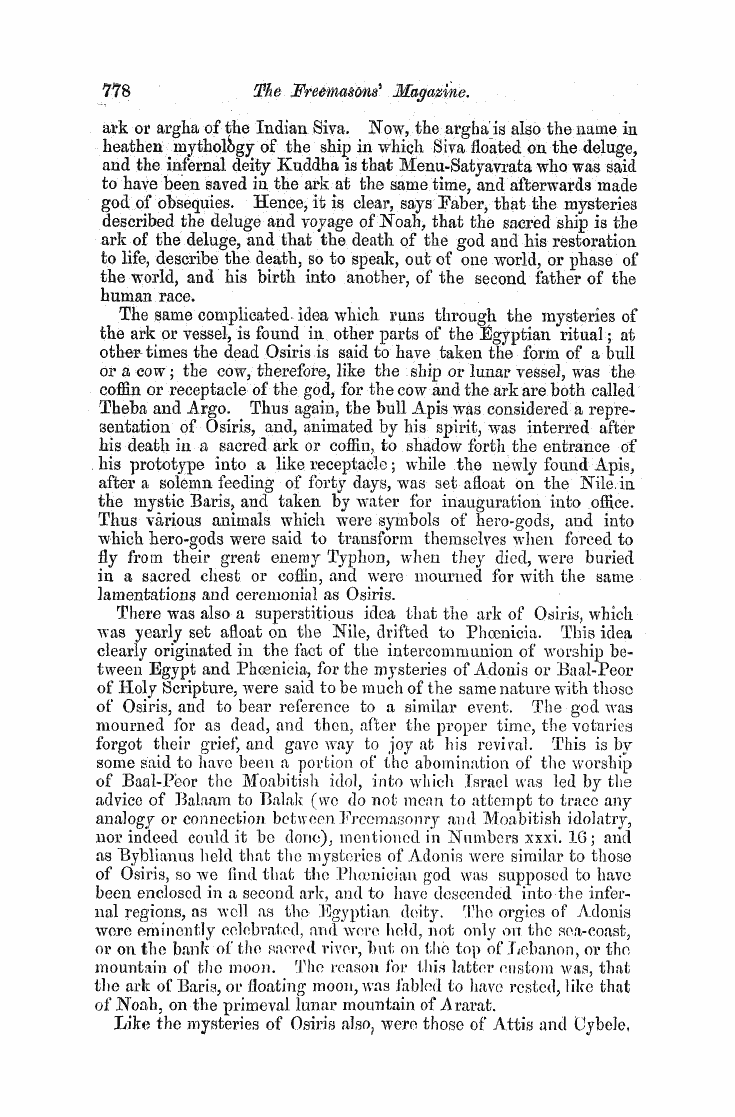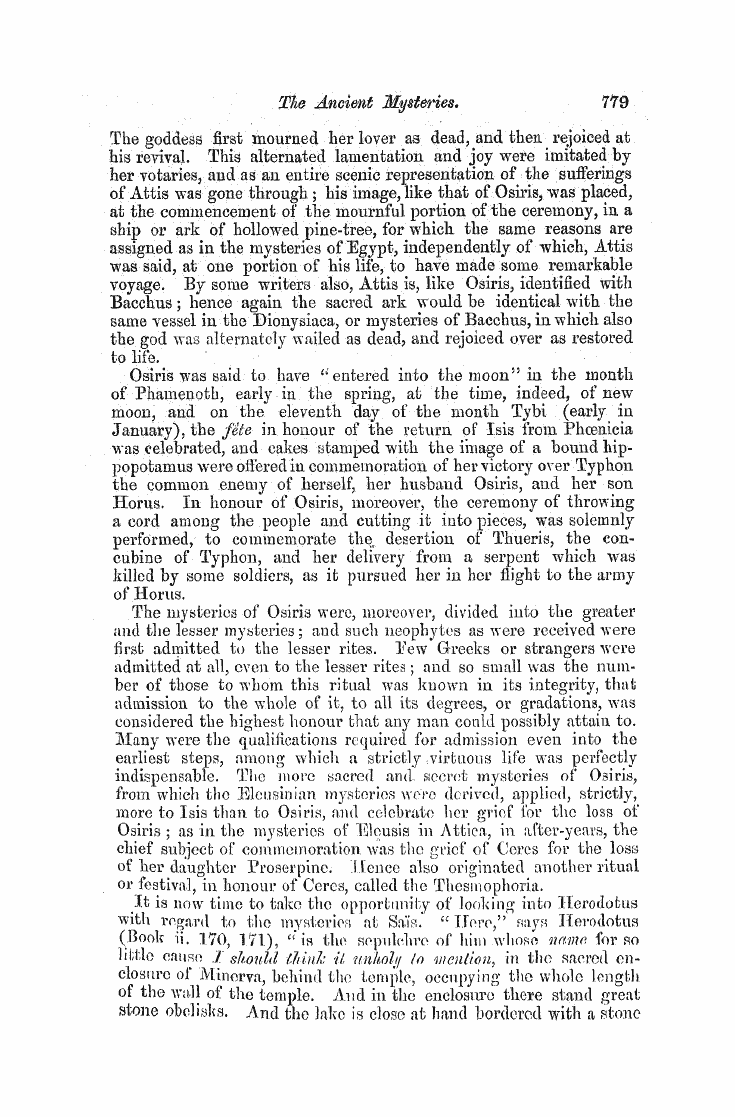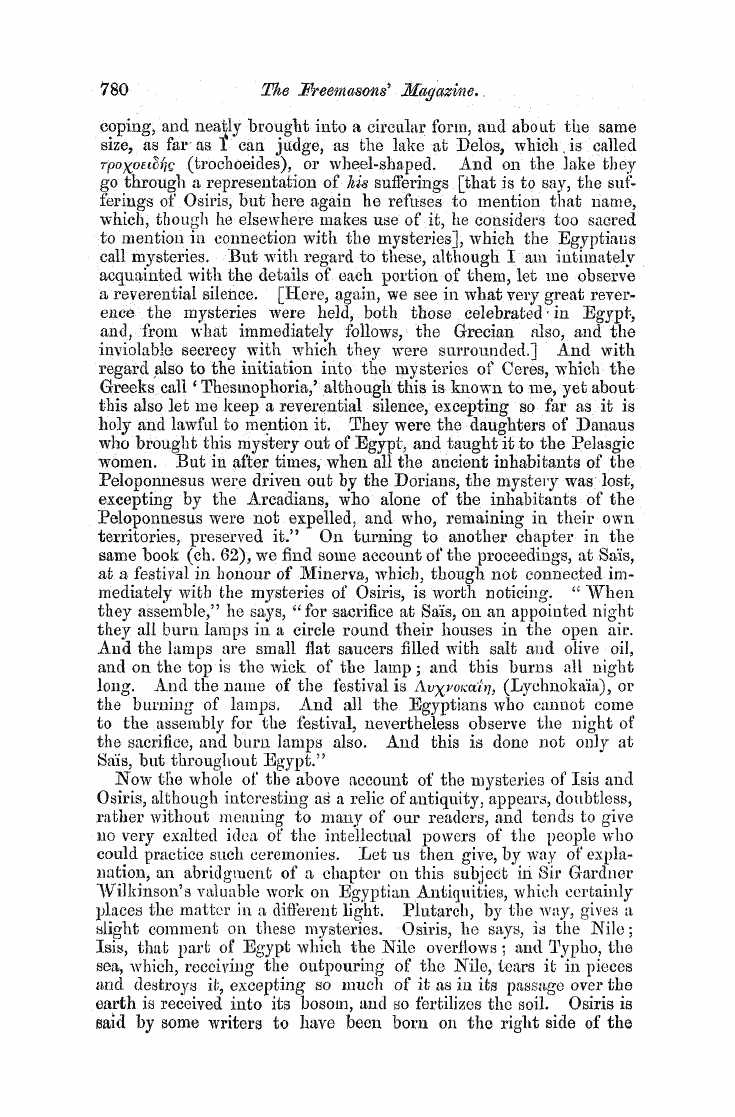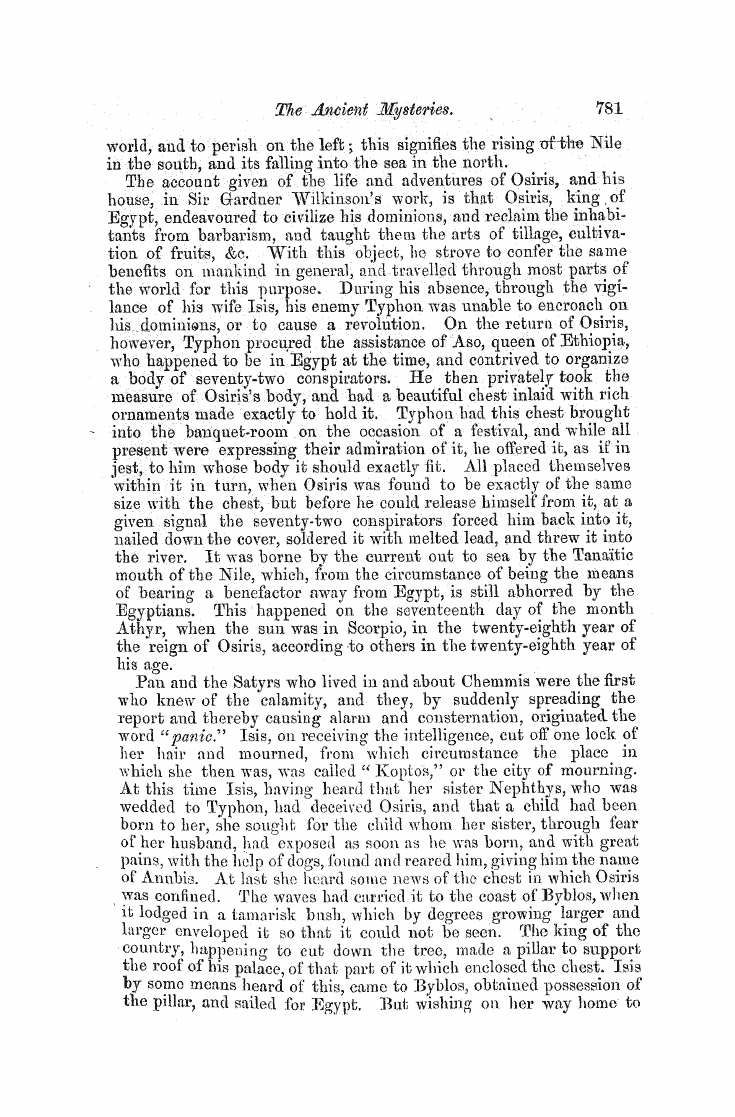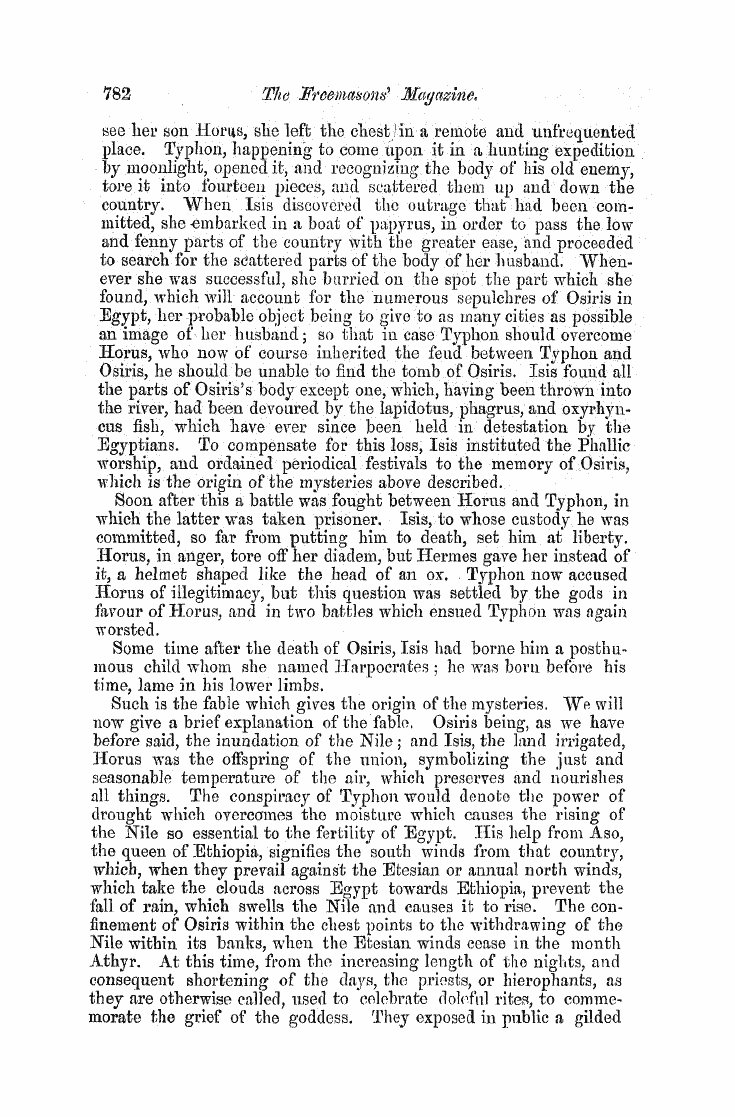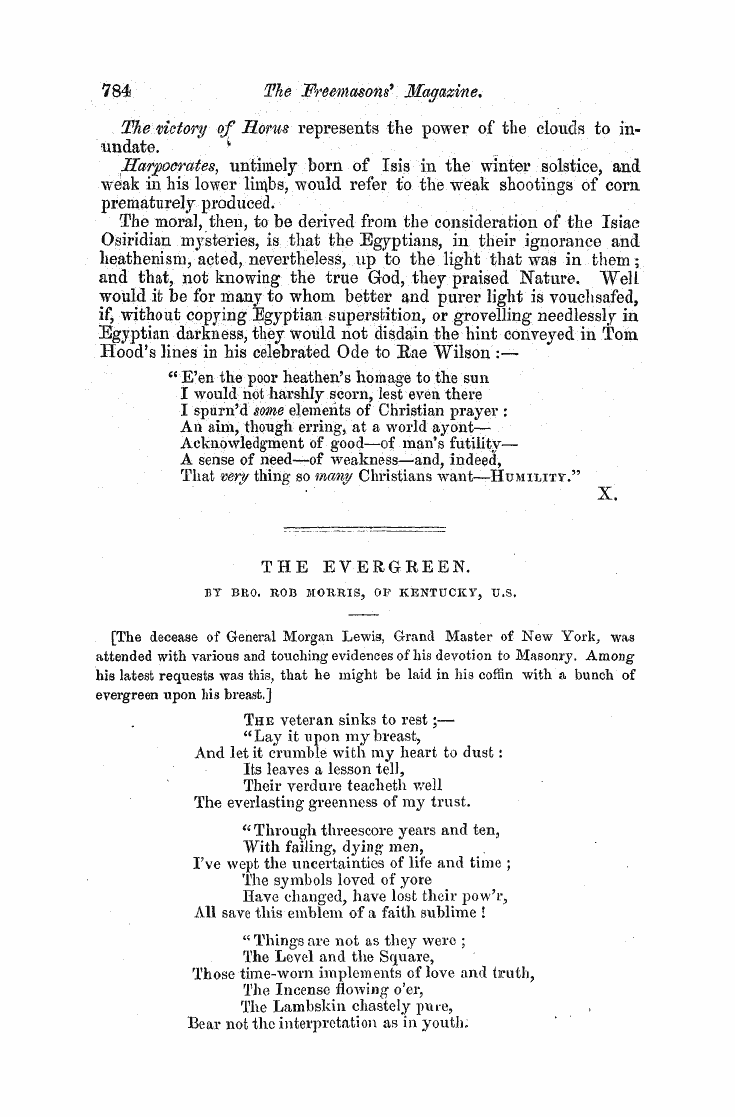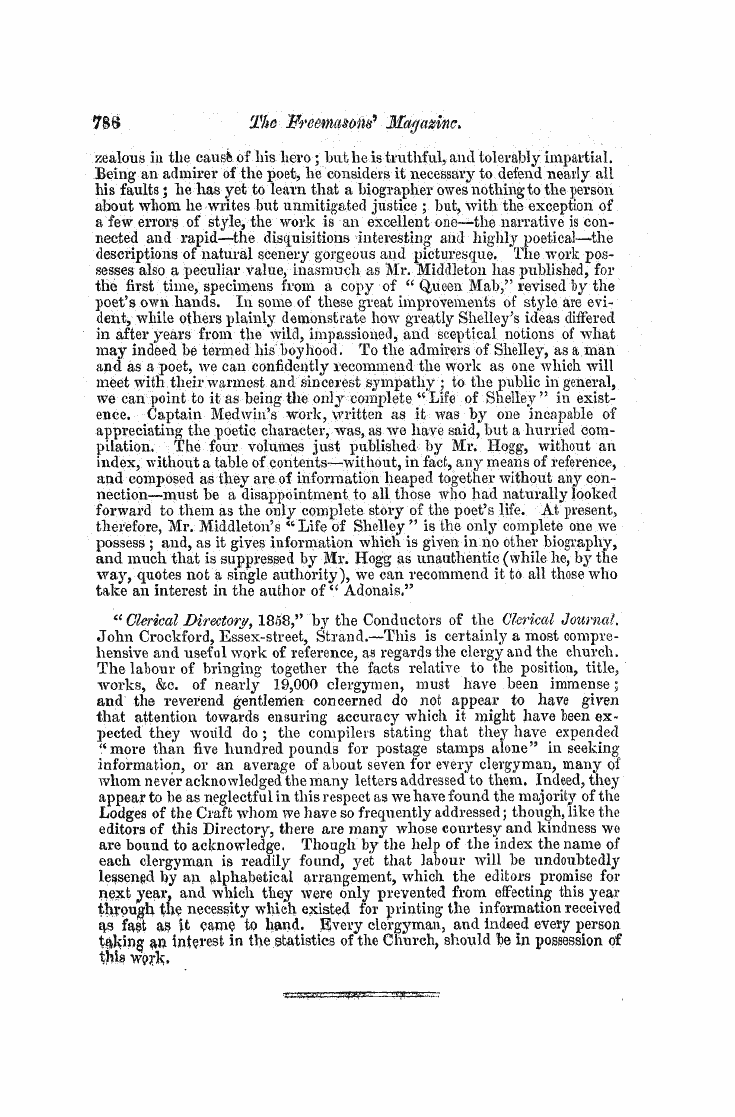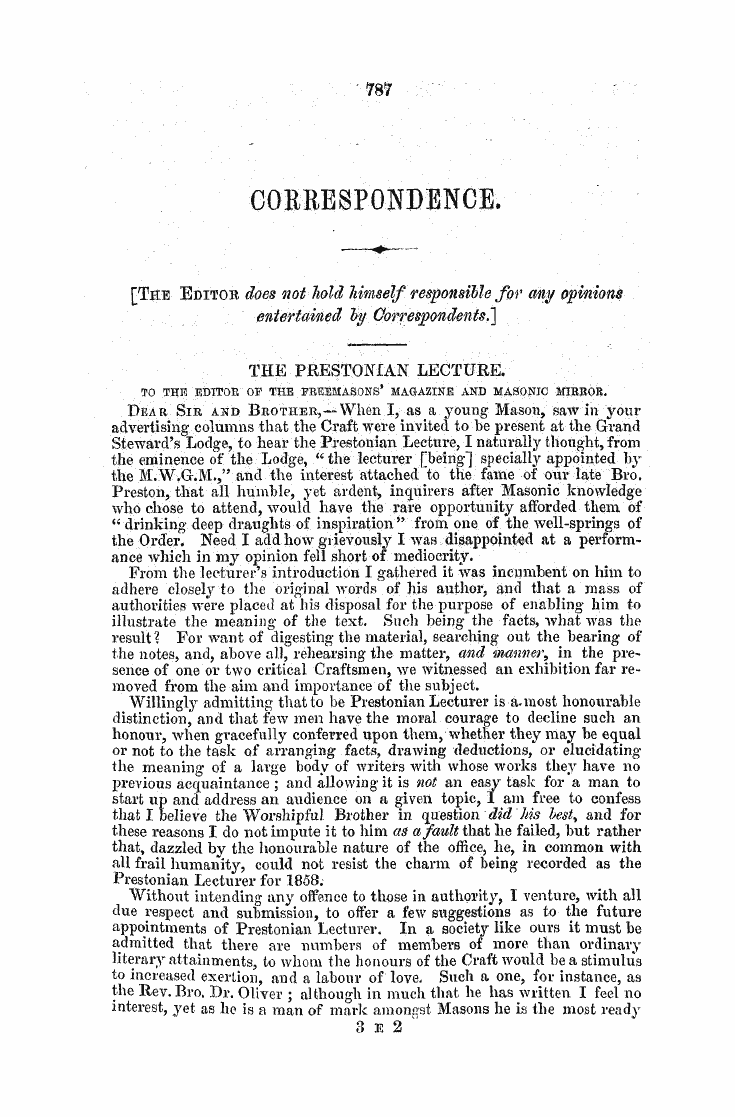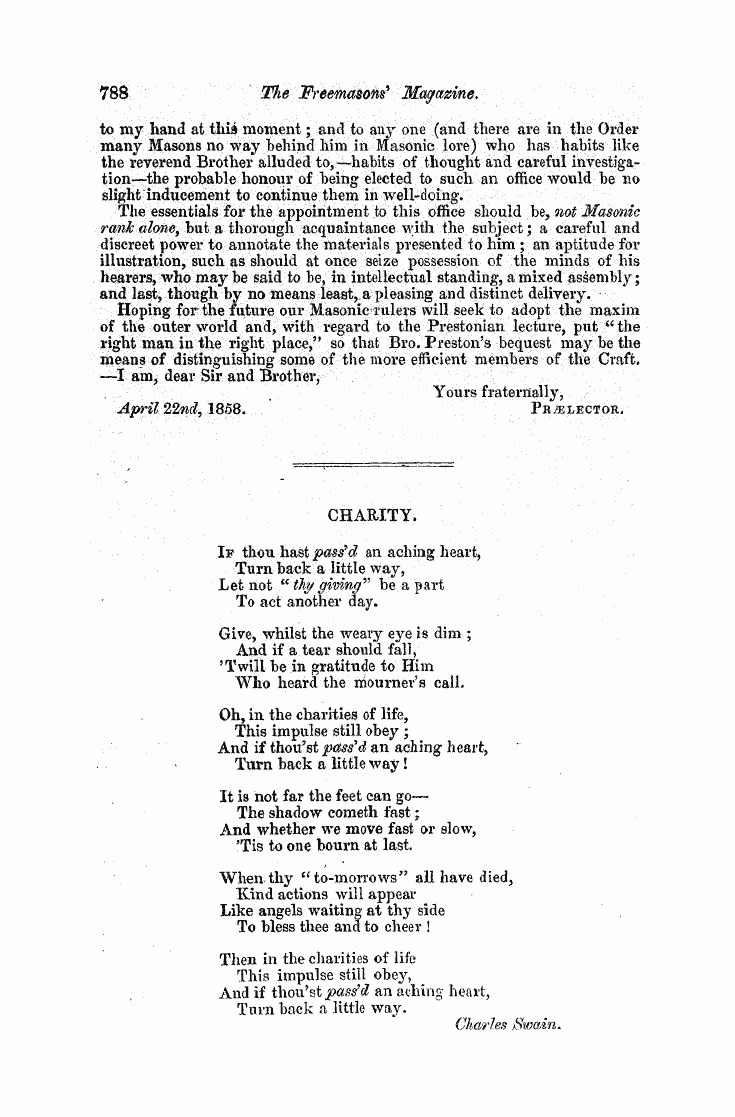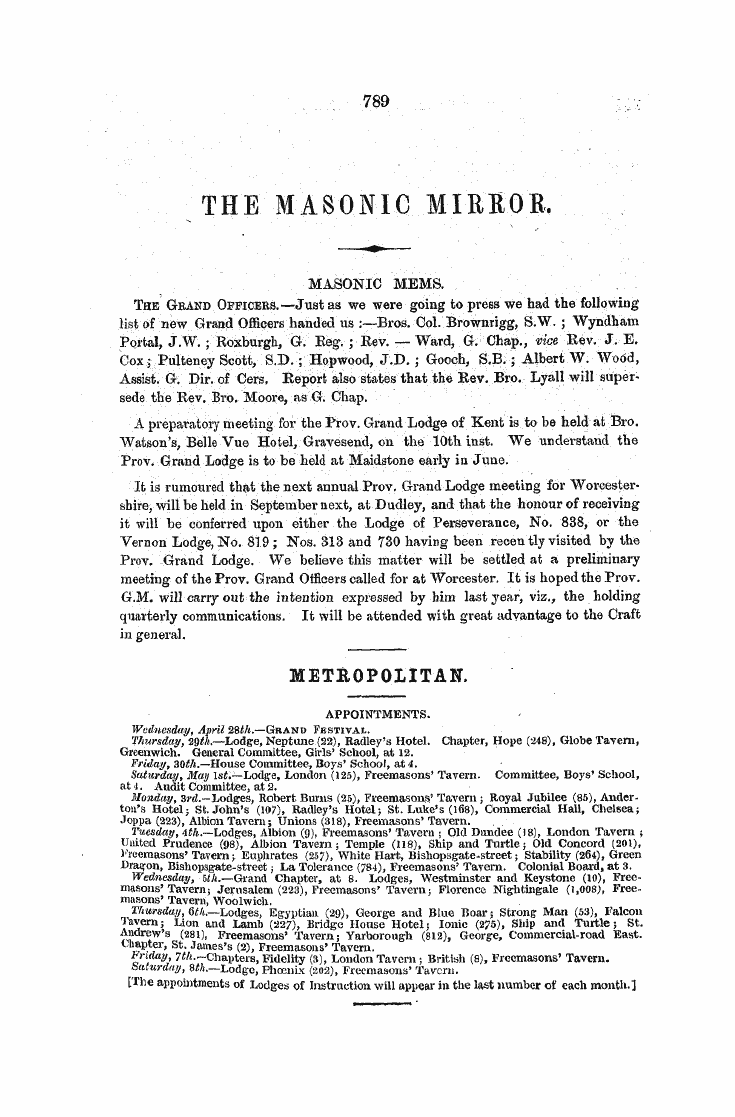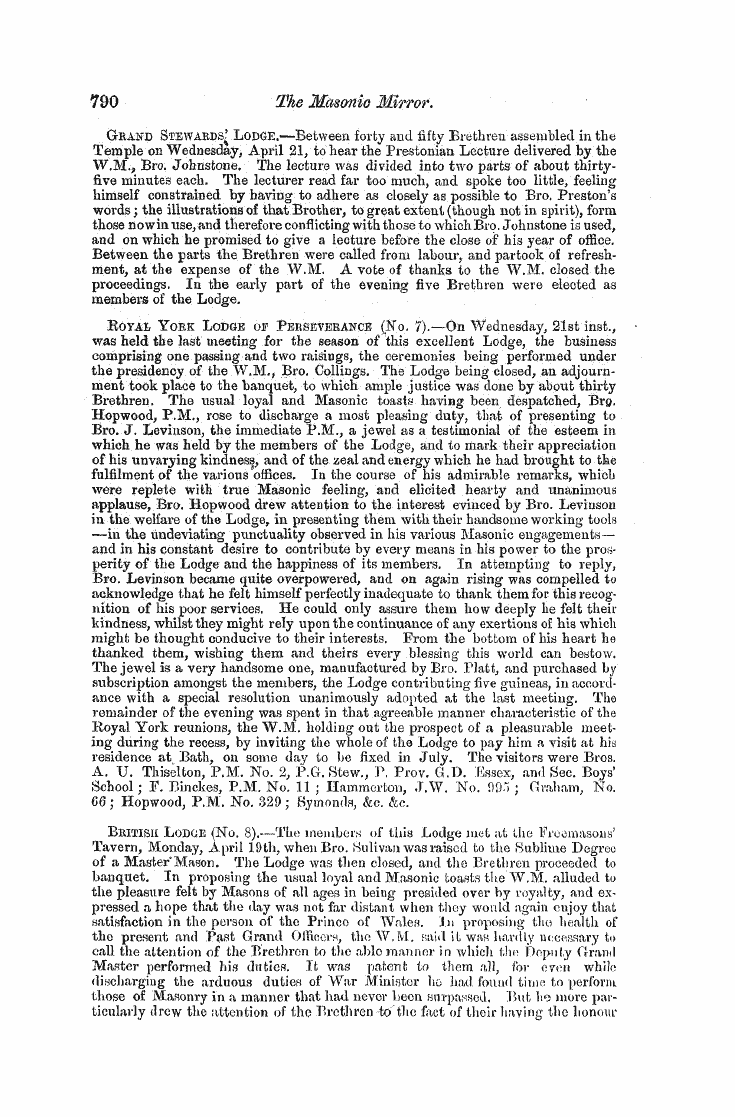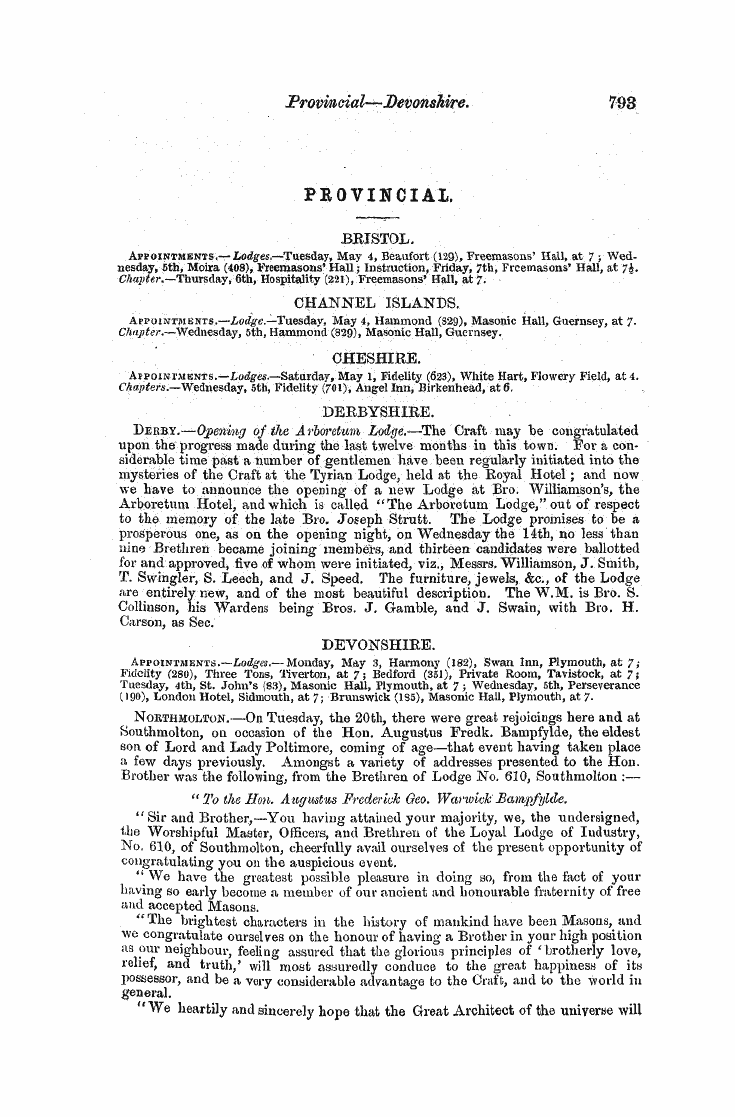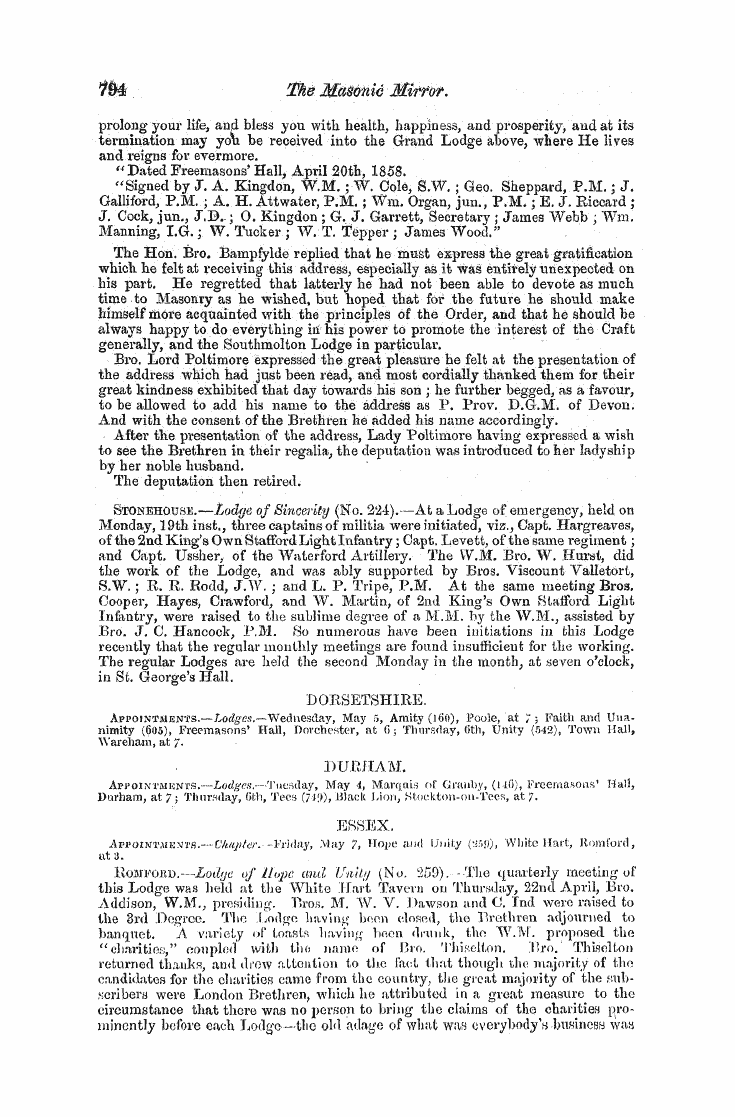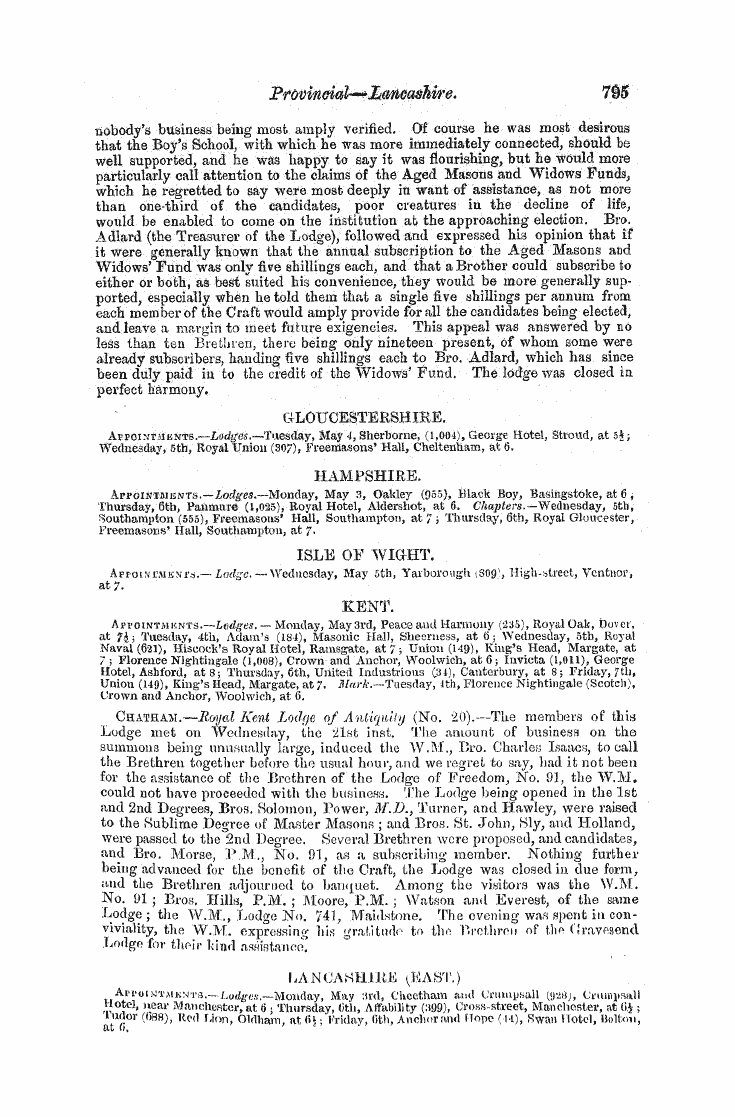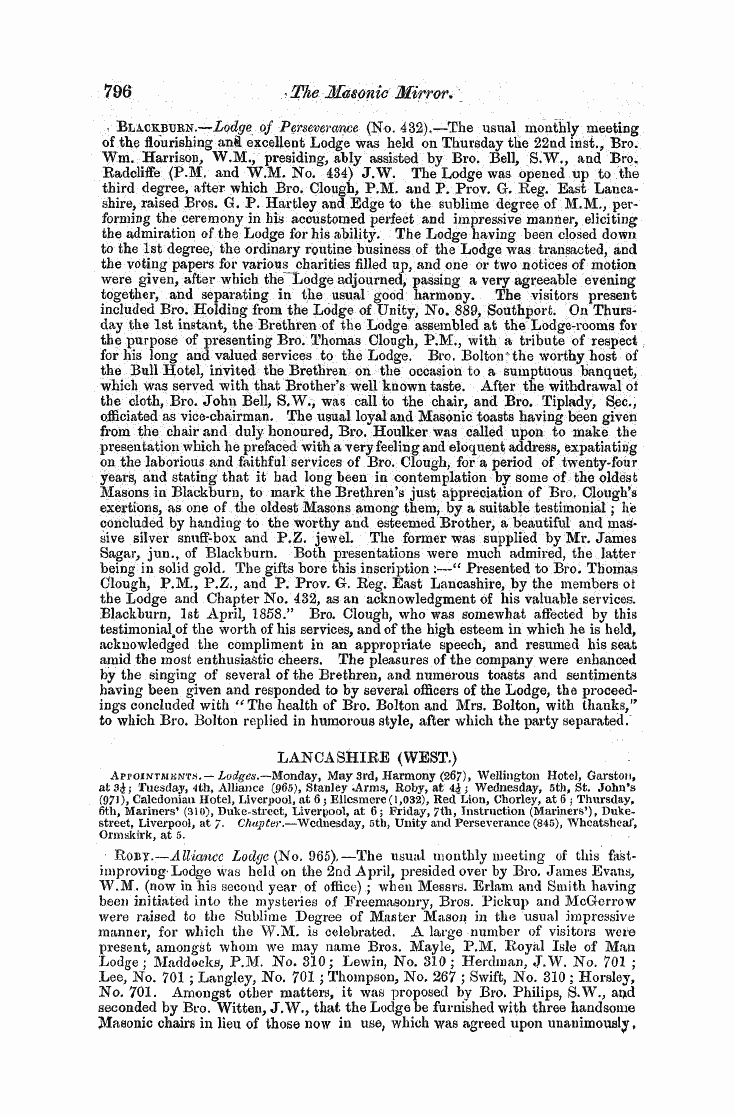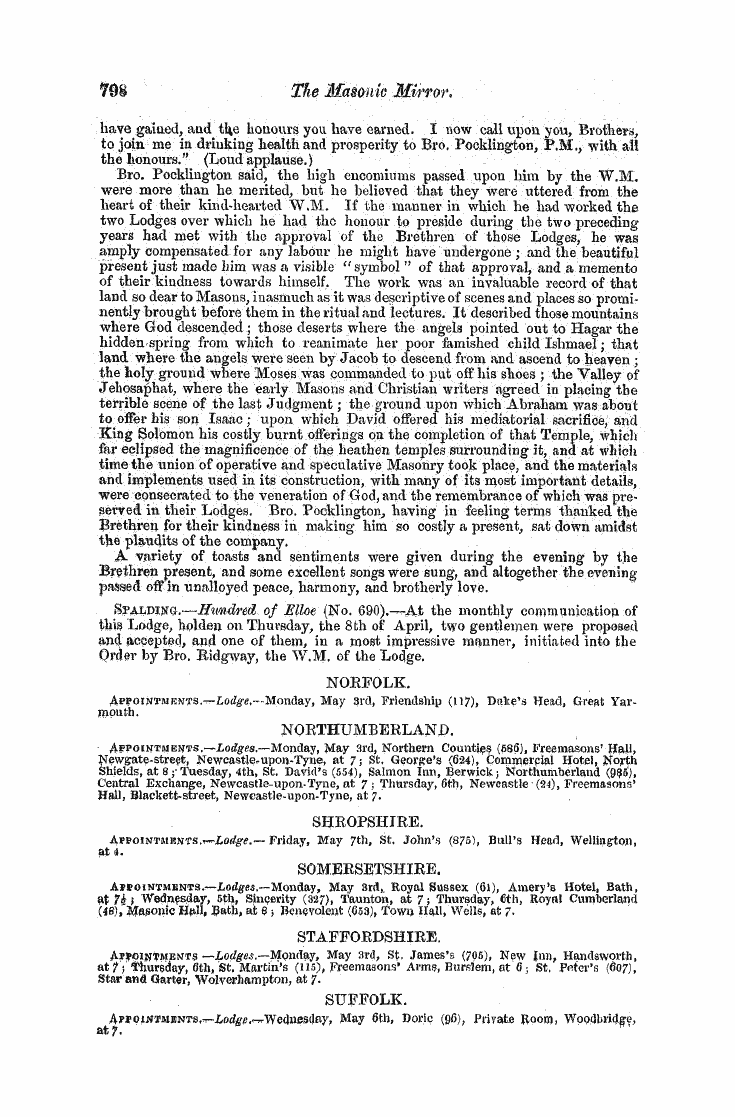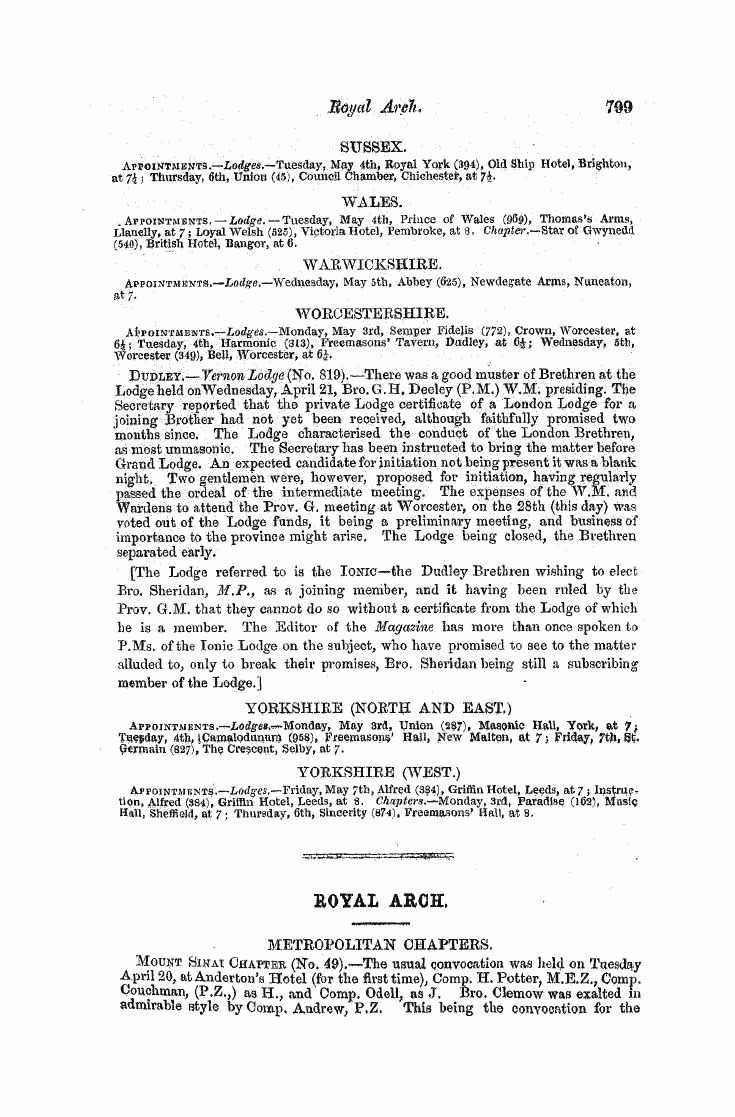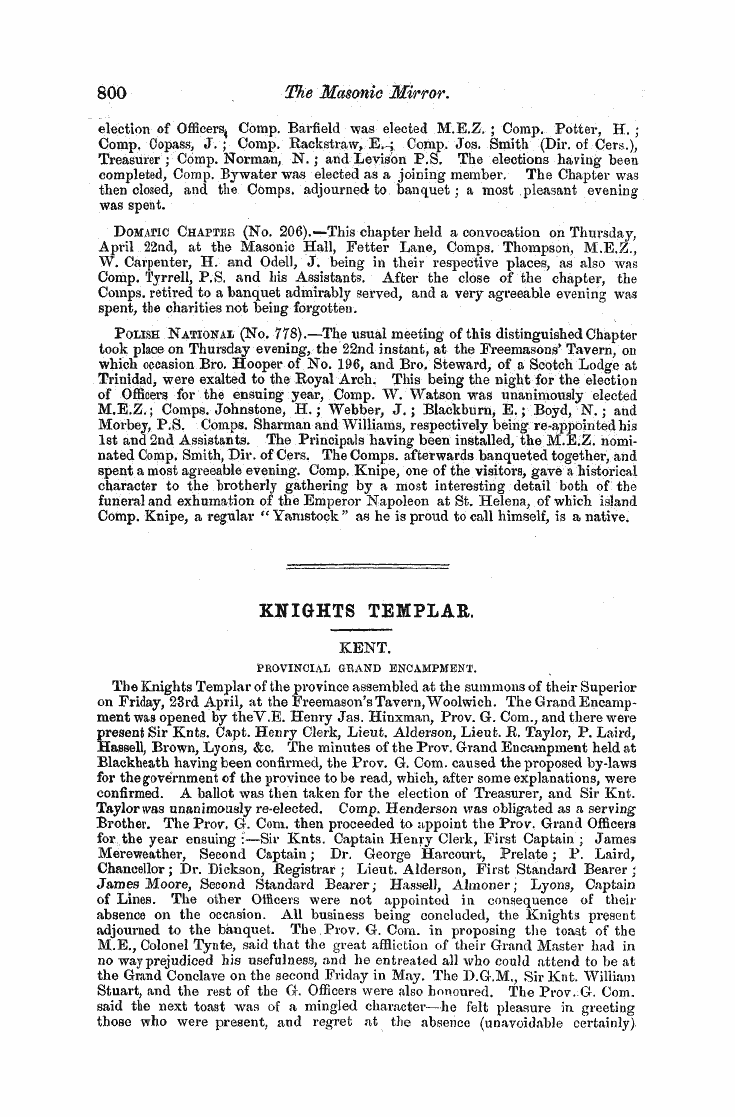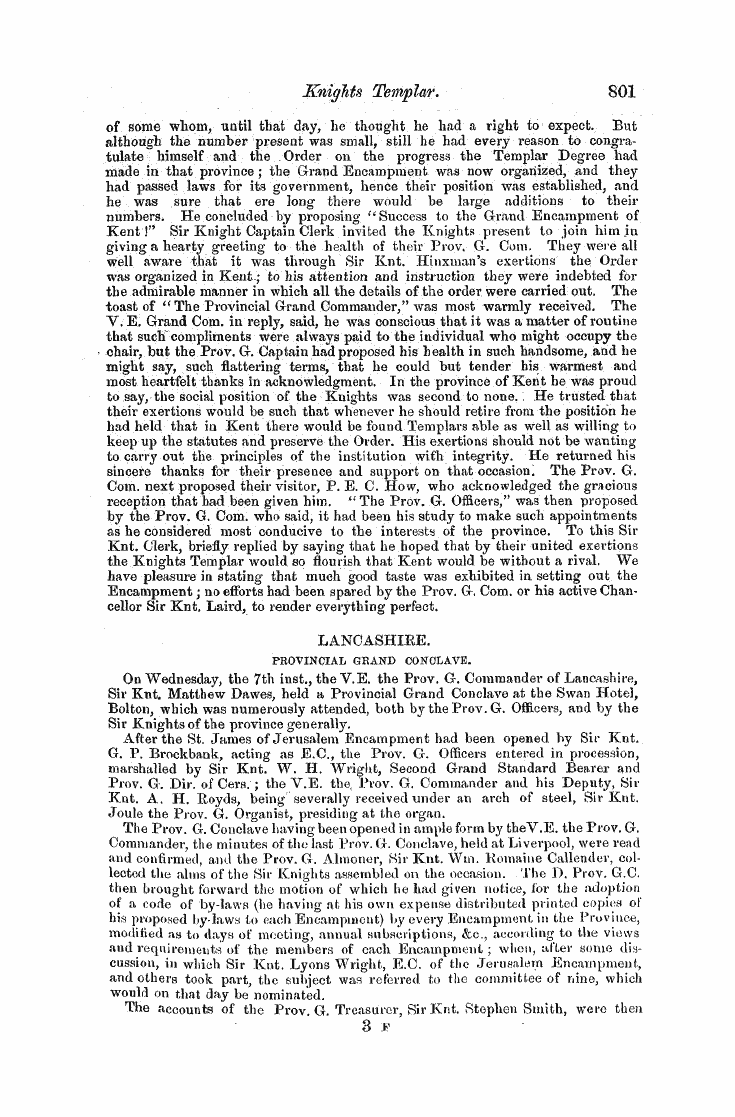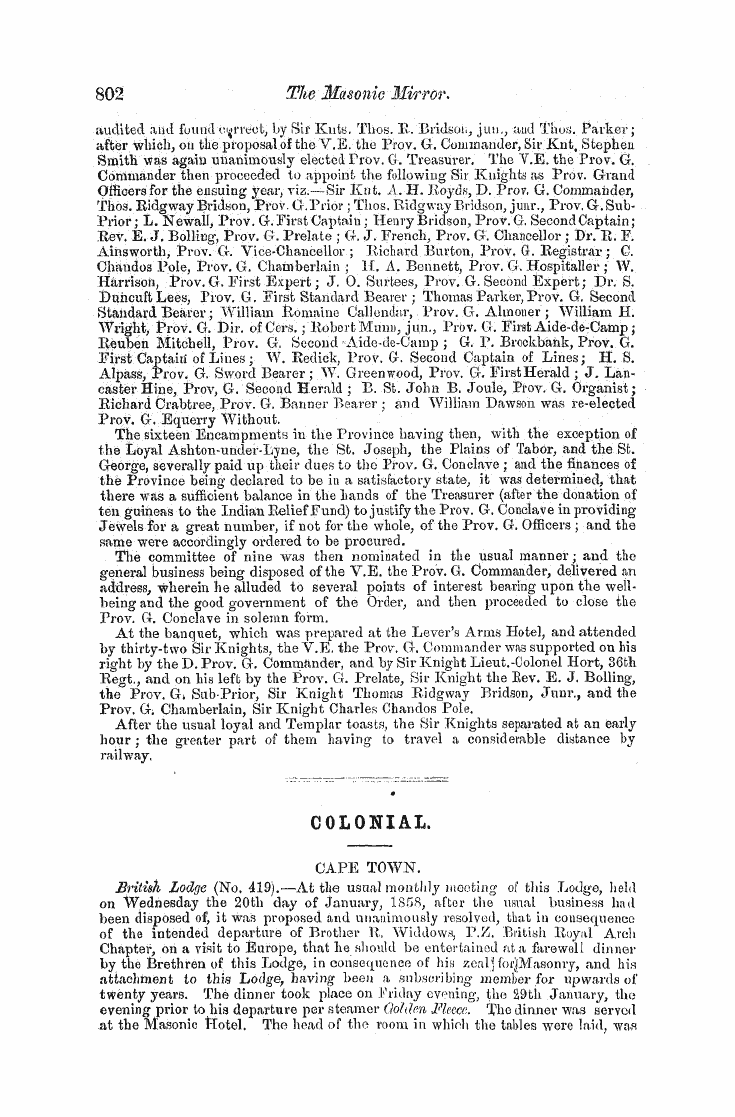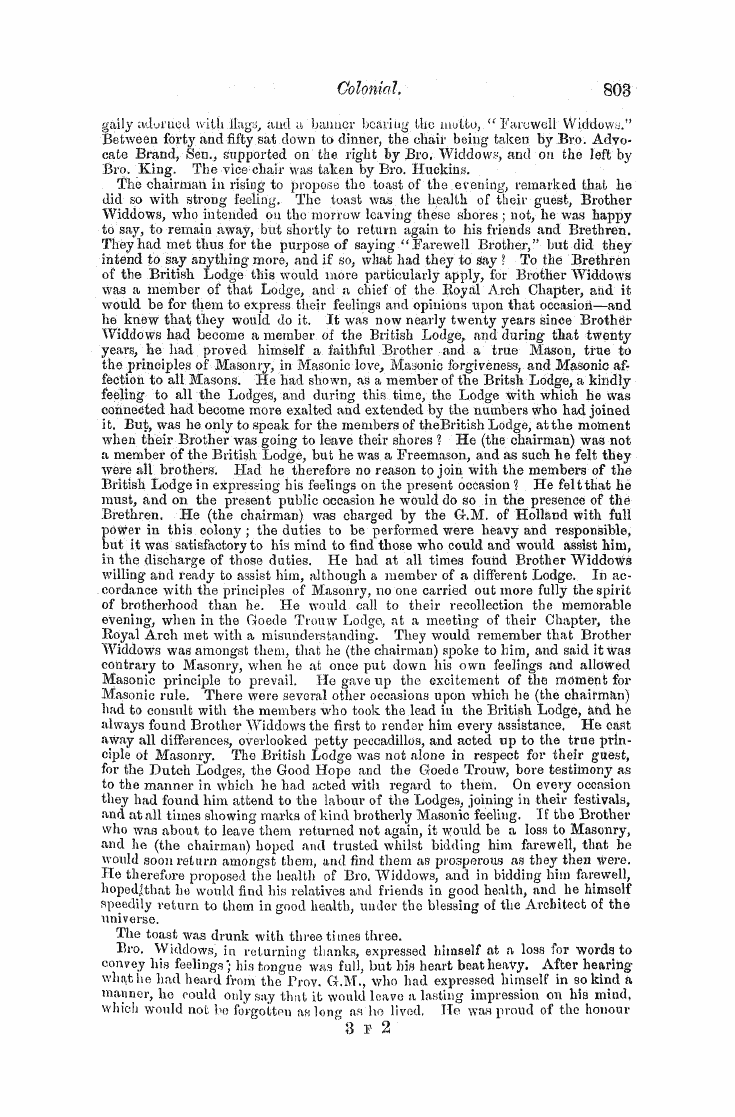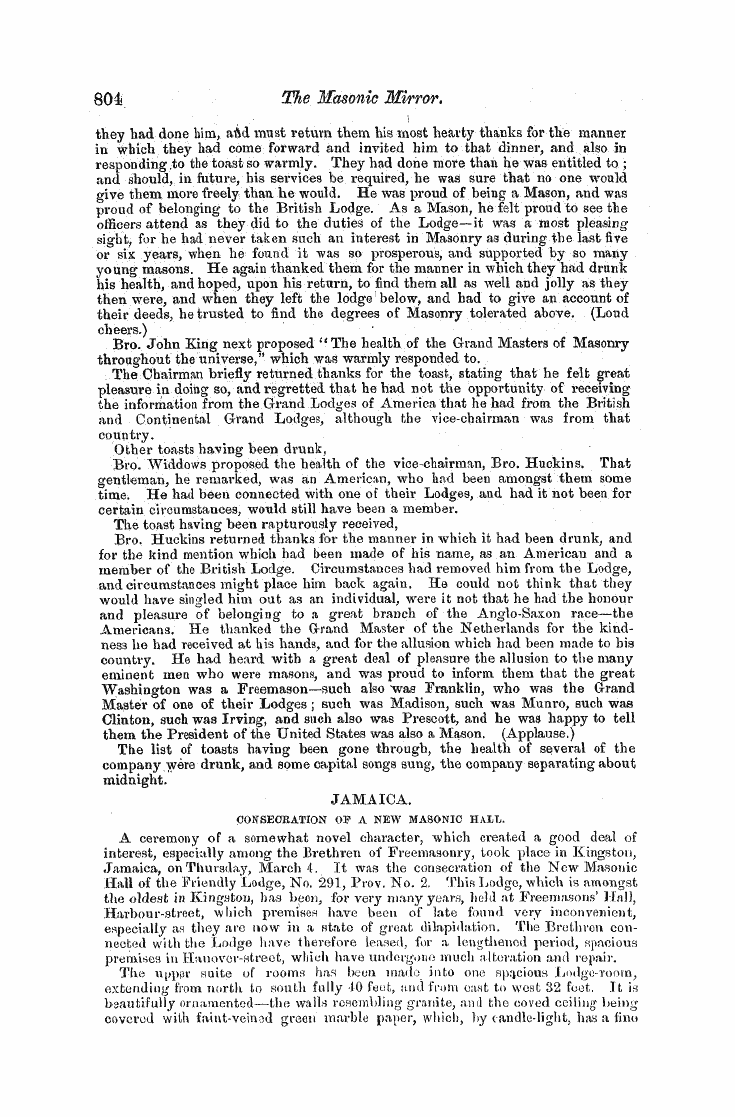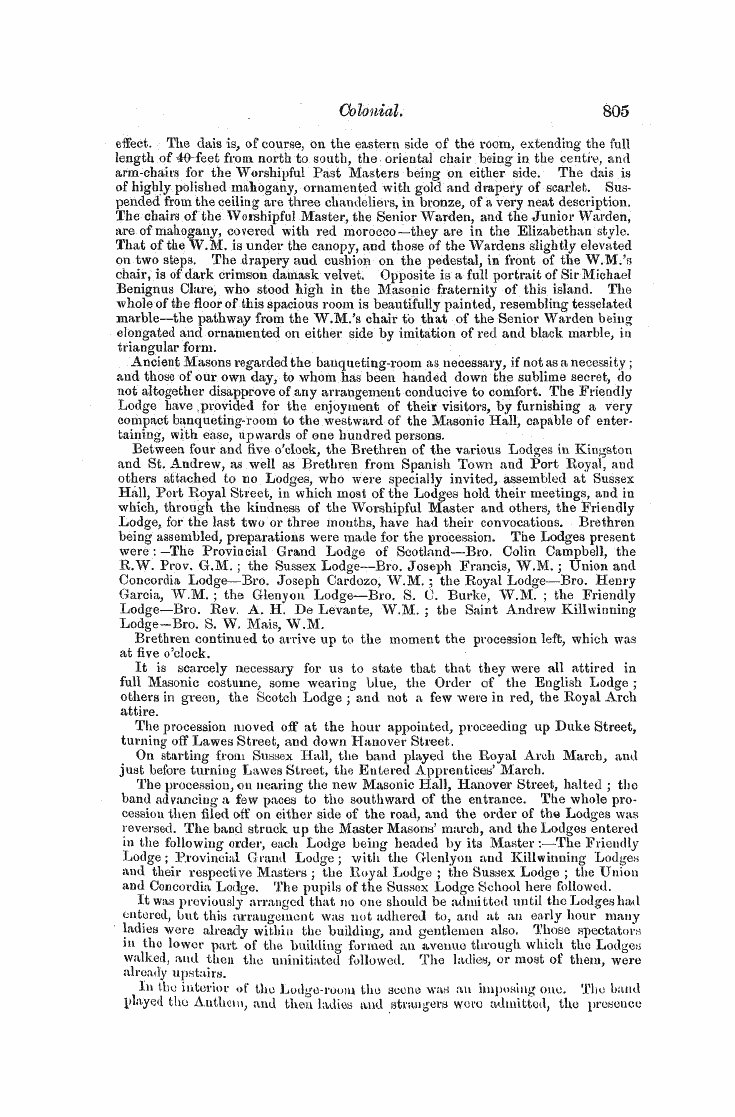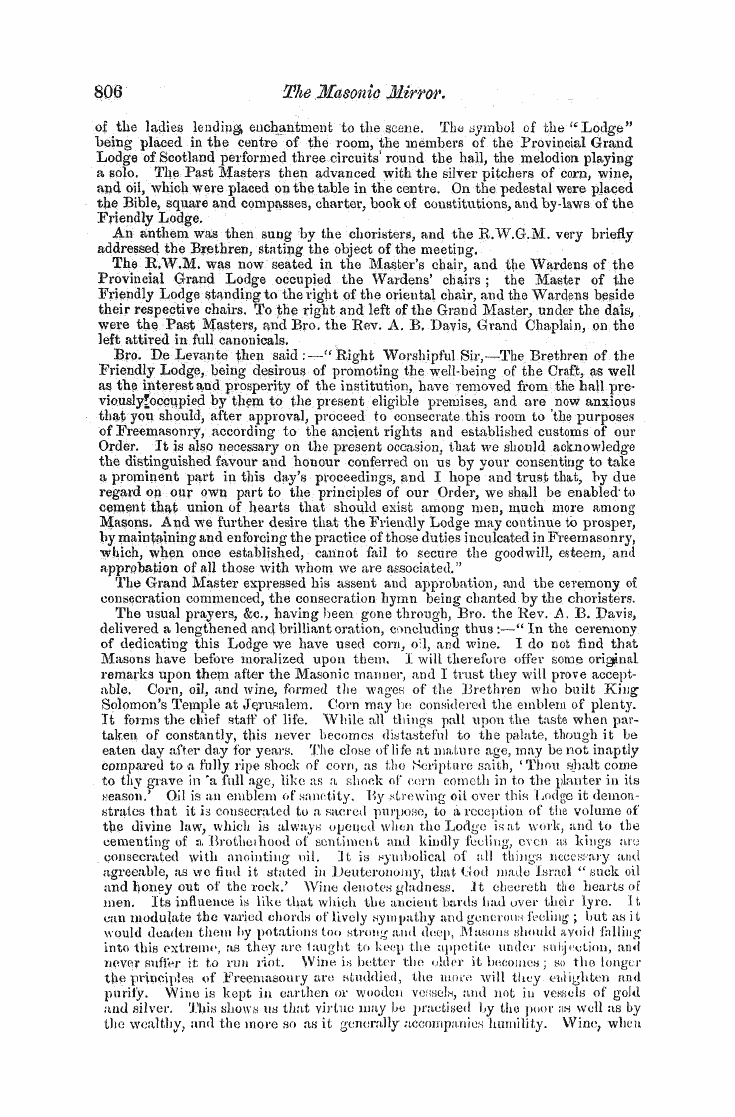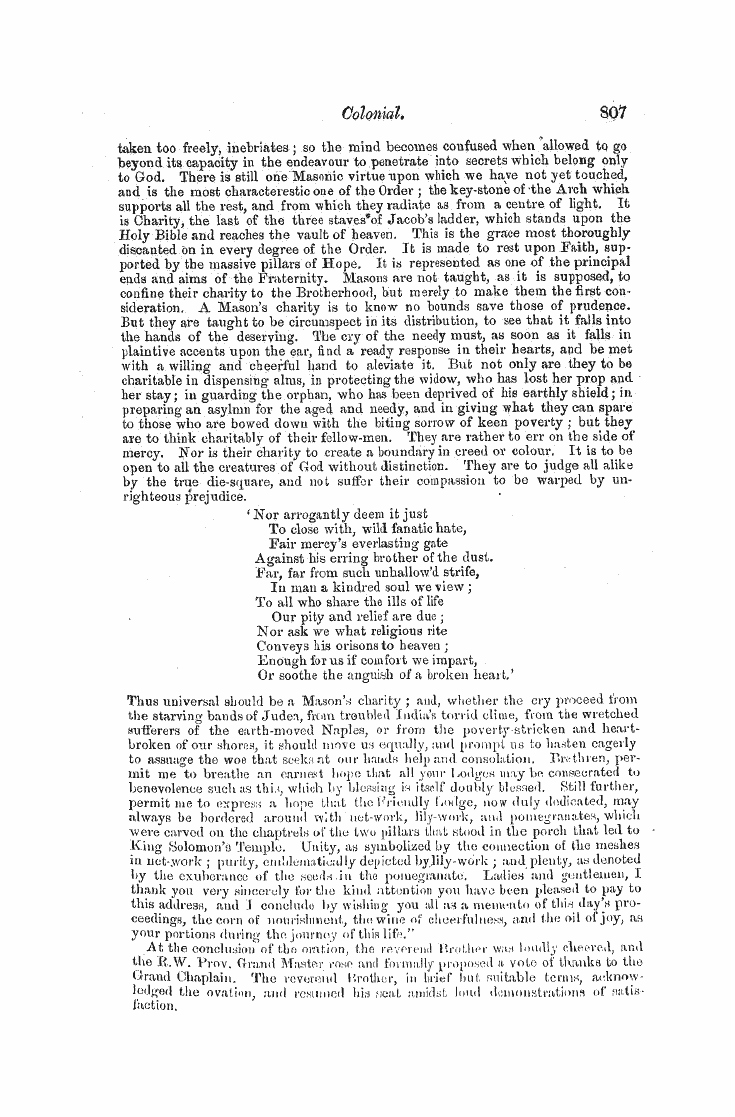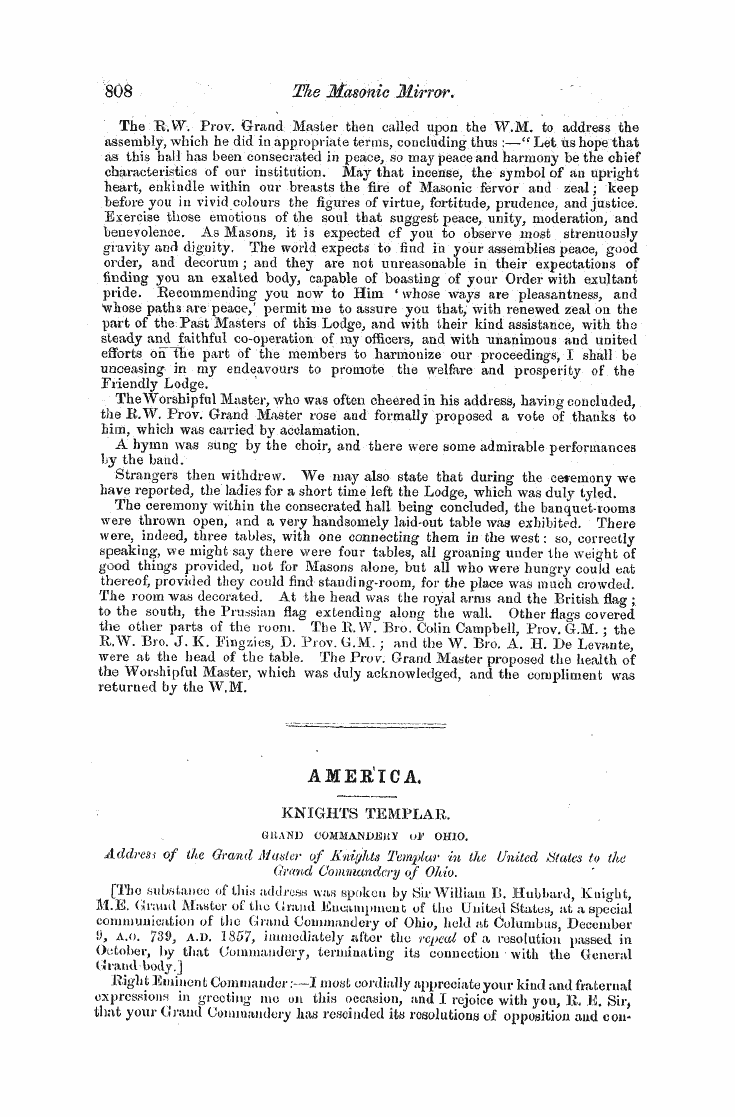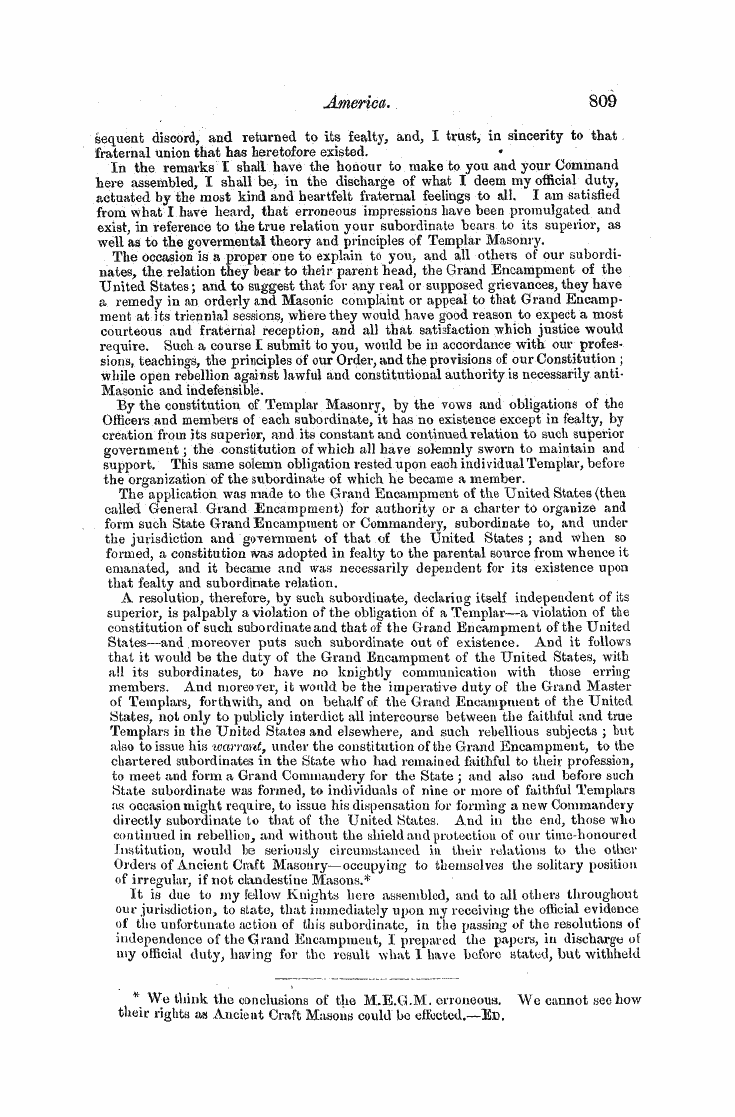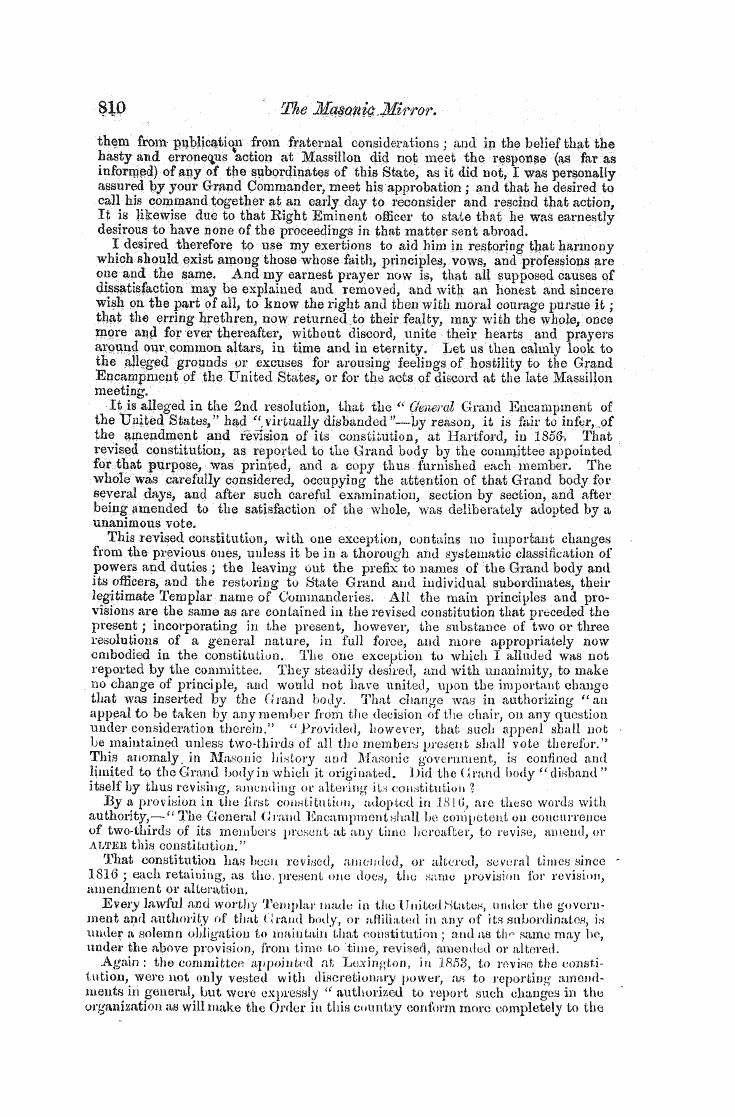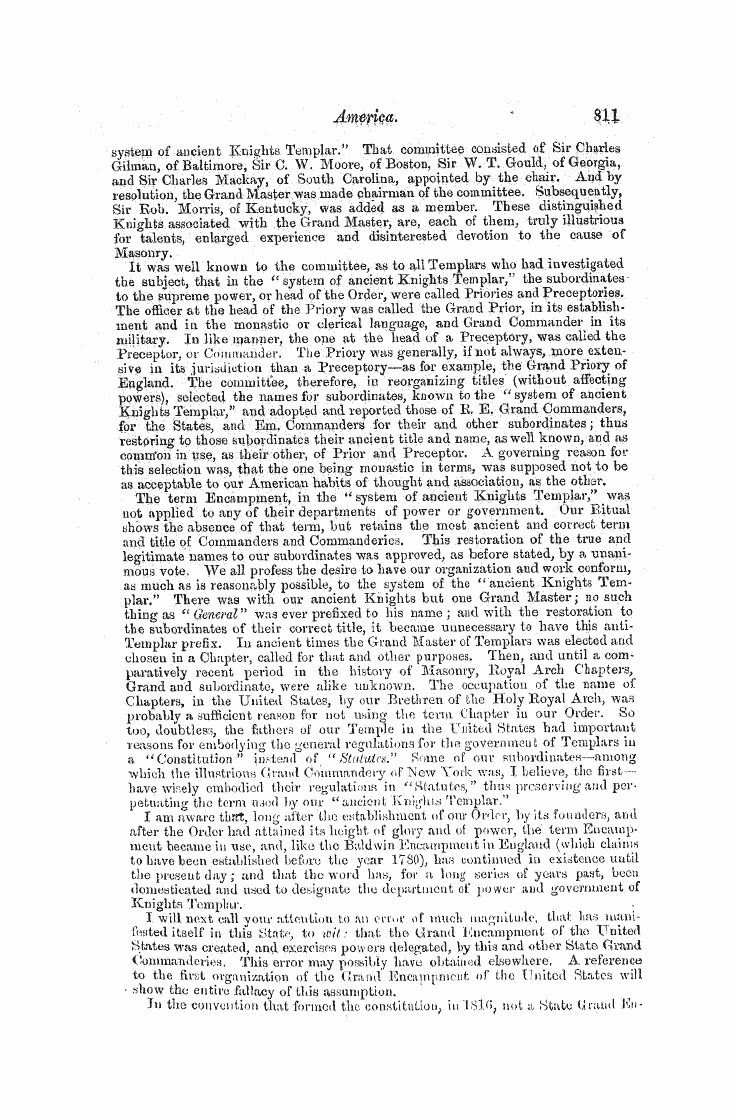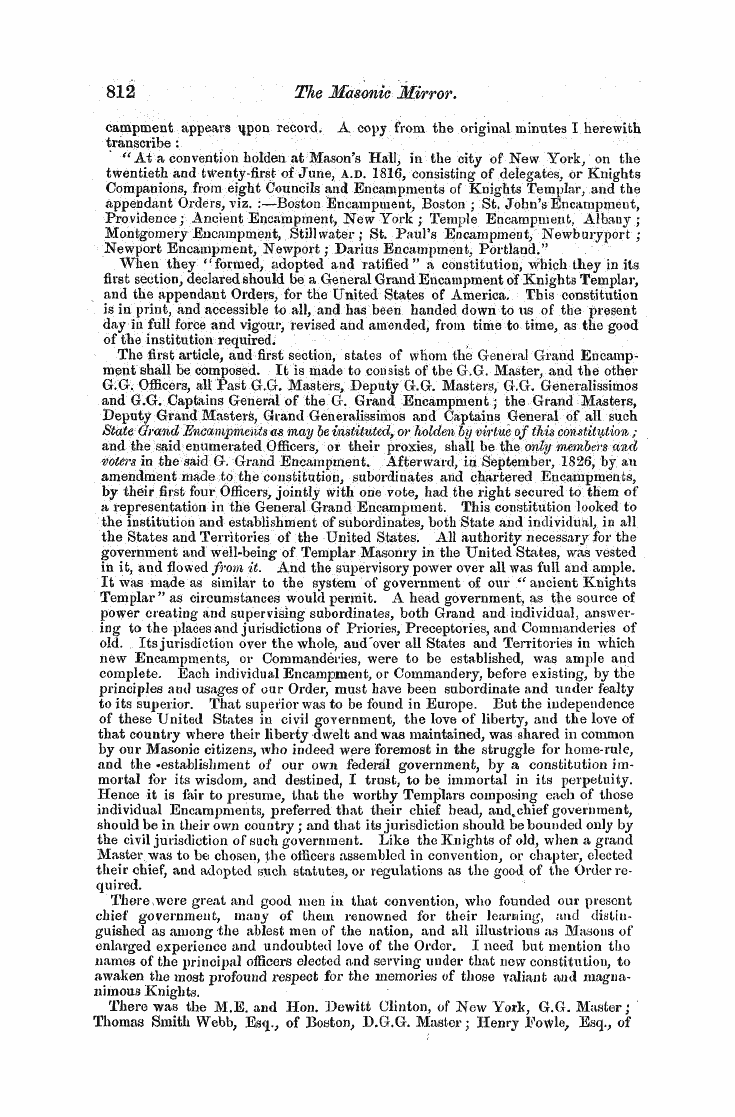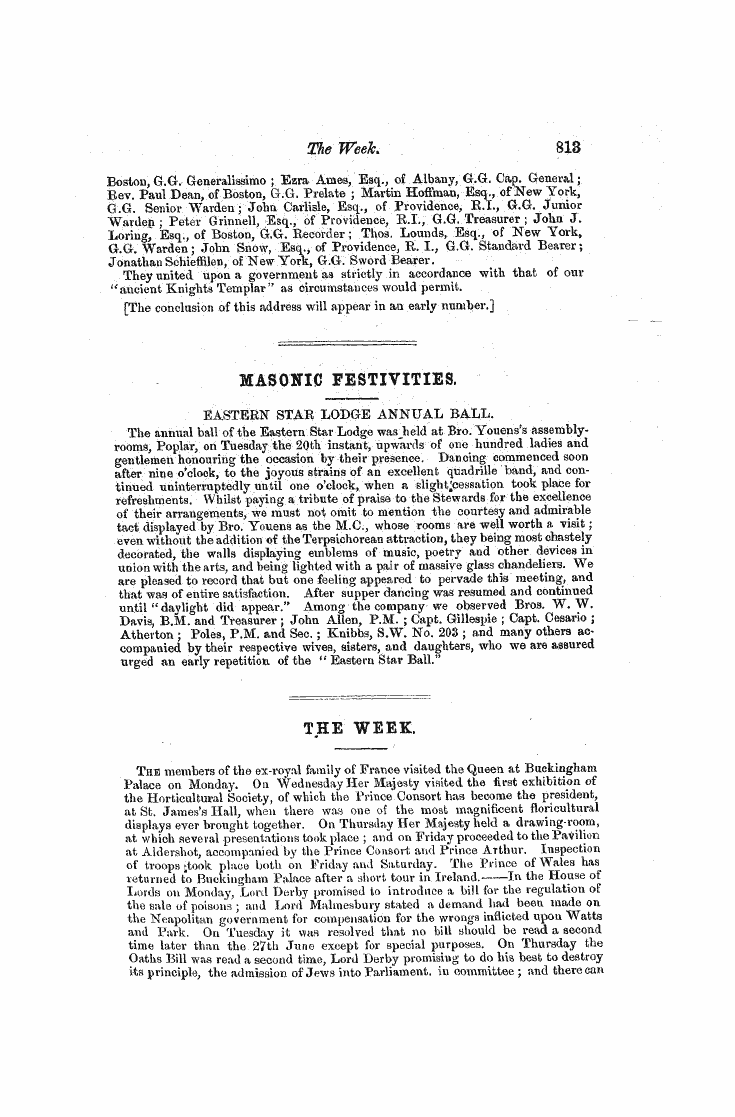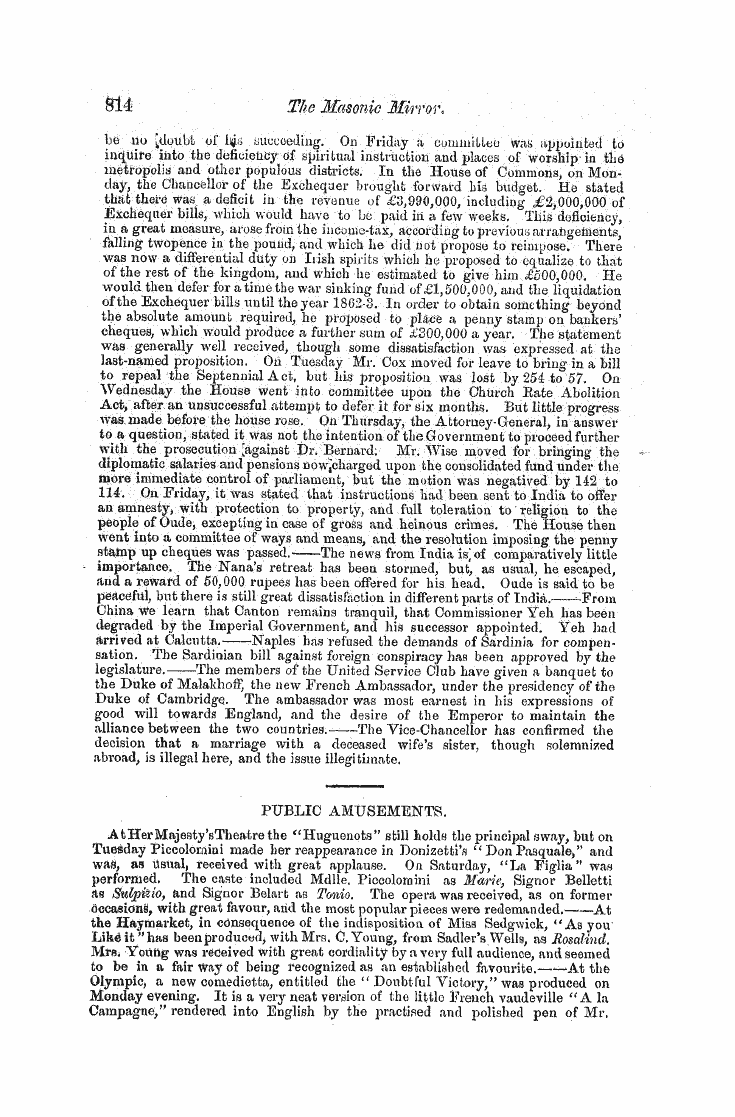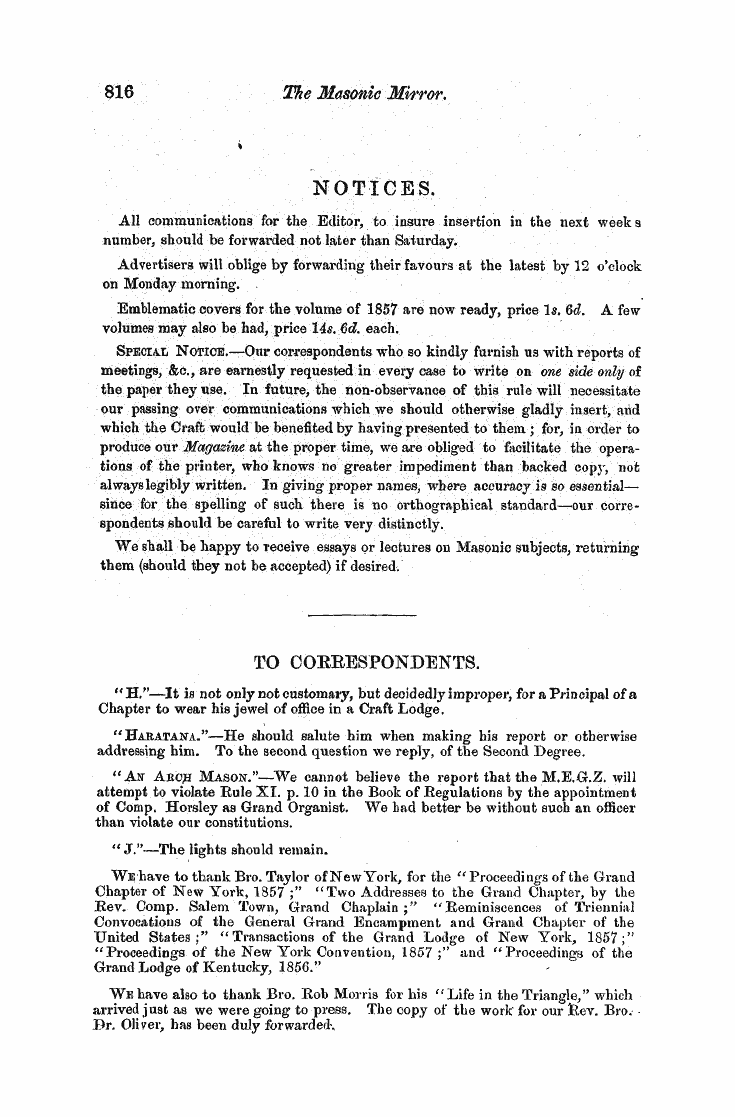-
Articles/Ads
Article THE ANCIENT MYSTERIES ← Page 4 of 11 →
Note: This text has been automatically extracted via Optical Character Recognition (OCR) software.
The Ancient Mysteries
is also a ship . The enclosure or aphanism of Osins , commemorated as above described , seems to be founded on the following myth ;—Osiris was attacked and killed by Typhon , who , the Egyptian priests say , is a personification of the sea . They enclosed him when dead , on the seventeenth day of the month Athyn ; his liberation , our
readers will remember , is stated to have occurred on the nineteenth day of the month , in an ark which was set afloat on the waters . Thus enclosed in his navicular coffin , of , as some say , lunar shape , the god was borne on the waves in a state of death-like confineinent during the period represented by the intermediate day between the seventeenth and nineteenth , on which latter day his painful voyage ended , the ark drifted to land , and the god , restored to life , and
leaving his place of confinement , gained a victory over his old enemy Typhon , who > in the interval had been bearing rule over the world . These occurrences were celebrated in the mysteries , which were instituted in commemoration of them twice a year ; viz ,, in springtime and autumn . At the one , is celebrated his entrance into the lunar boatj which is set afloat on the water ; at the other , his enclosure in the ark or coffin which is kept on land during the period of
his enclosure , and carried down to the river on the day or nis iiDeration . These , however , refer to one and the same transaction ; for as the ark is said to have been shaped like the moon , his entrance into the ark , and his entrance into the floating luniform vessel , are one event . Like the history of Osiris is that of Horns . Sometimes he is said to have been slain by the Titans , to have floated dead upon the sea ,
and to have been restored to life by his motherlsis . At other times , he is represented as being pursued as a child by the monster Typhon , and sheltered in a floating island in a sacred lake near Buto . In this legend the island is substituted for the ark , and the lake for the ocean or sacred river . These legends are handed down to show that the mysteries related to the enclosure of some ancient and divine personage in a vessel which was viewed under the double aspect of a coffin and a
ship . Kites similar to those at Buto were also celebrated on the lake at Sais . Herodotus makes mention of these mysteries ; but we will not dwell farther on his relation at present , as we shall have occasion to make further allusion to it presently . Diodorus and Iamblichus also make mention of them ; the former says , with others , that they point to the contest between the gods generally , and especially Osiris and Typhon ; the latter , that they treat of the bursting open of
heaven , showing the Isiac secrets and the ineffable wonders of the great abyss , the resting of the ship Baris at the end of her voyage , and the scattering by Typhon of the limbs of Osiris . The ship Baris , or Theba , or Argo , or Argha ( for it is to be remembered , all these names are common to her ) , is evidently the ship of Osiris ; but the ship of Osiris was also that floating ark or navicular coffin in which the body was enclosed by Typhon . Others say that it was the same with the ship of Charon the ferry man of Hades ( with whom also they identify Osiris ) , and also the same as the ship of the infernal Kuddha , and as the
Note: This text has been automatically extracted via Optical Character Recognition (OCR) software.
The Ancient Mysteries
is also a ship . The enclosure or aphanism of Osins , commemorated as above described , seems to be founded on the following myth ;—Osiris was attacked and killed by Typhon , who , the Egyptian priests say , is a personification of the sea . They enclosed him when dead , on the seventeenth day of the month Athyn ; his liberation , our
readers will remember , is stated to have occurred on the nineteenth day of the month , in an ark which was set afloat on the waters . Thus enclosed in his navicular coffin , of , as some say , lunar shape , the god was borne on the waves in a state of death-like confineinent during the period represented by the intermediate day between the seventeenth and nineteenth , on which latter day his painful voyage ended , the ark drifted to land , and the god , restored to life , and
leaving his place of confinement , gained a victory over his old enemy Typhon , who > in the interval had been bearing rule over the world . These occurrences were celebrated in the mysteries , which were instituted in commemoration of them twice a year ; viz ,, in springtime and autumn . At the one , is celebrated his entrance into the lunar boatj which is set afloat on the water ; at the other , his enclosure in the ark or coffin which is kept on land during the period of
his enclosure , and carried down to the river on the day or nis iiDeration . These , however , refer to one and the same transaction ; for as the ark is said to have been shaped like the moon , his entrance into the ark , and his entrance into the floating luniform vessel , are one event . Like the history of Osiris is that of Horns . Sometimes he is said to have been slain by the Titans , to have floated dead upon the sea ,
and to have been restored to life by his motherlsis . At other times , he is represented as being pursued as a child by the monster Typhon , and sheltered in a floating island in a sacred lake near Buto . In this legend the island is substituted for the ark , and the lake for the ocean or sacred river . These legends are handed down to show that the mysteries related to the enclosure of some ancient and divine personage in a vessel which was viewed under the double aspect of a coffin and a
ship . Kites similar to those at Buto were also celebrated on the lake at Sais . Herodotus makes mention of these mysteries ; but we will not dwell farther on his relation at present , as we shall have occasion to make further allusion to it presently . Diodorus and Iamblichus also make mention of them ; the former says , with others , that they point to the contest between the gods generally , and especially Osiris and Typhon ; the latter , that they treat of the bursting open of
heaven , showing the Isiac secrets and the ineffable wonders of the great abyss , the resting of the ship Baris at the end of her voyage , and the scattering by Typhon of the limbs of Osiris . The ship Baris , or Theba , or Argo , or Argha ( for it is to be remembered , all these names are common to her ) , is evidently the ship of Osiris ; but the ship of Osiris was also that floating ark or navicular coffin in which the body was enclosed by Typhon . Others say that it was the same with the ship of Charon the ferry man of Hades ( with whom also they identify Osiris ) , and also the same as the ship of the infernal Kuddha , and as the
































































